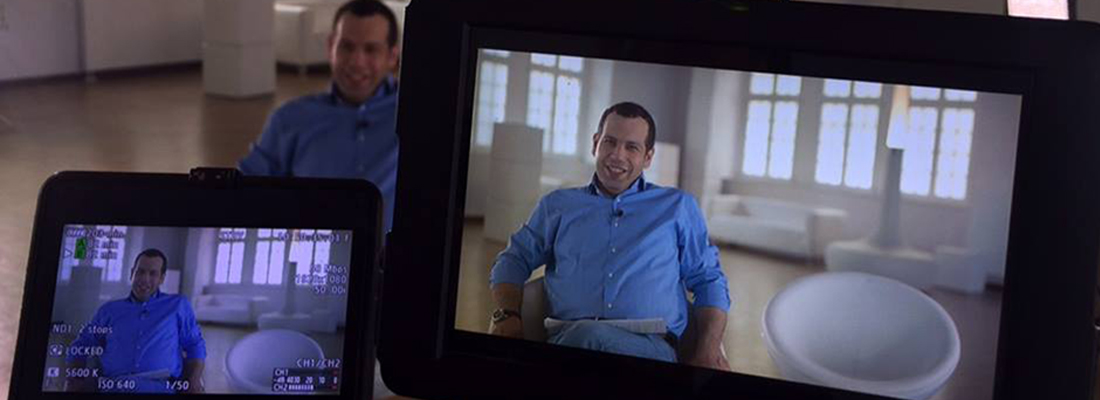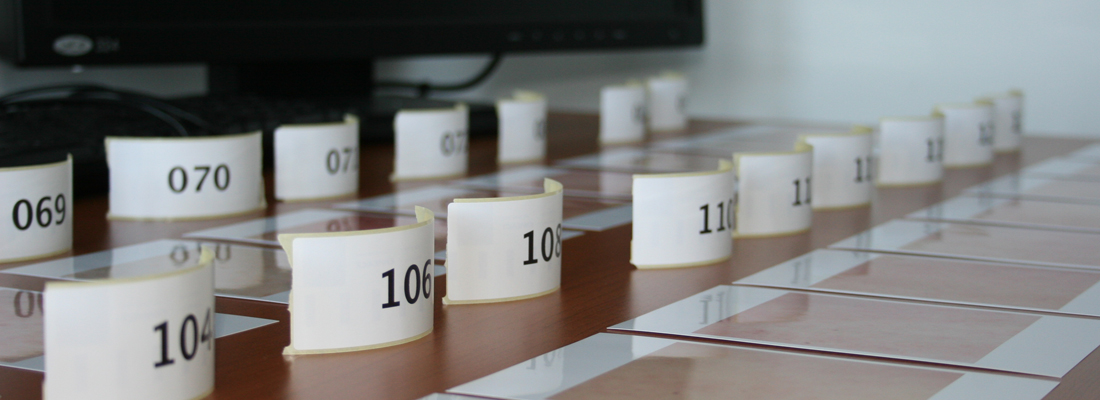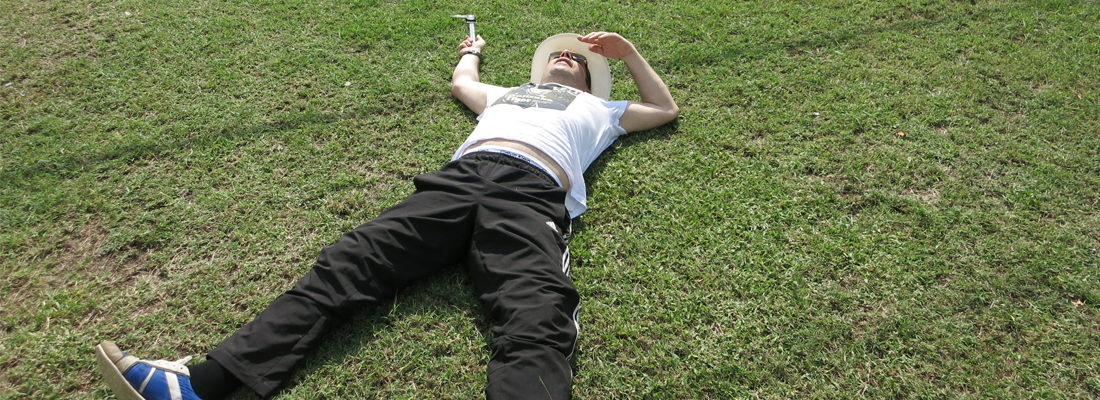The following list includes digit ratio references (from A to Z) of a database I have been creating in collaboration with John Manning (Swansea University). It may not be complete and may contain errors, because the information on digit ratio studies has been obtained from various sources. However, we feel that it is useful to publicize the list, as it may help scholars who work on digit ratio with identifying relevant publications for their work. N=1,150 references (Feb 13, 2022). Recent presentations on 2D:4D by John Manning can be viewed here, and here.
4626685
items
1
apa
0
author
asc
722
http://bernhardfink.com/wp-content/plugins/zotpress/
%7B%22status%22%3A%22success%22%2C%22updateneeded%22%3Afalse%2C%22instance%22%3A%22zotpress-0991f3479bd427c1df81c2de86815da3%22%2C%22meta%22%3A%7B%22request_last%22%3A1100%2C%22request_next%22%3A50%2C%22used_cache%22%3Atrue%7D%2C%22data%22%3A%5B%7B%22key%22%3A%22XKYVCG5D%22%2C%22library%22%3A%7B%22id%22%3A4626685%7D%2C%22meta%22%3A%7B%22creatorSummary%22%3A%22Ab-Rahman%20et%20al.%22%2C%22numChildren%22%3A0%7D%2C%22bib%22%3A%22%3Cdiv%20class%3D%5C%22csl-bib-body%5C%22%20style%3D%5C%22line-height%3A%202%3B%20padding-left%3A%201em%3B%20text-indent%3A-1em%3B%5C%22%3E%5Cn%20%20%3Cdiv%20class%3D%5C%22csl-entry%5C%22%3EAb-Rahman%2C%20S.%2C%20Amir%2C%20N.%2C%20%26amp%3B%20Sharifudin%2C%20M.%20A.%20Relationship%20between%20Index-to-Ring%20Length%20Ratio%20%282D%3A4D%29%20and%20WOMAC%20Osteoarthritis%20Index%20in%20Women%20with%20Knee%20Osteoarthritis.%20%3Ci%3EMalaysian%20Applied%20Biology%3C%5C%2Fi%3E%2C%20%3Ci%3E50%3C%5C%2Fi%3E%2C%20185%26%23x2013%3B191.%3C%5C%2Fdiv%3E%5Cn%3C%5C%2Fdiv%3E%22%2C%22data%22%3A%7B%22itemType%22%3A%22journalArticle%22%2C%22title%22%3A%22Relationship%20between%20Index-to-Ring%20Length%20Ratio%20%282D%3A4D%29%20and%20WOMAC%20Osteoarthritis%20Index%20in%20Women%20with%20Knee%20Osteoarthritis%22%2C%22creators%22%3A%5B%7B%22creatorType%22%3A%22author%22%2C%22firstName%22%3A%22Shaifuzain%22%2C%22lastName%22%3A%22Ab-Rahman%22%7D%2C%7B%22creatorType%22%3A%22author%22%2C%22firstName%22%3A%22Nurul%22%2C%22lastName%22%3A%22Amir%22%7D%2C%7B%22creatorType%22%3A%22author%22%2C%22firstName%22%3A%22Mohd%20Ariff%22%2C%22lastName%22%3A%22Sharifudin%22%7D%5D%2C%22abstractNote%22%3A%22%22%2C%22date%22%3A%2211%22%2C%22language%22%3A%22%22%2C%22DOI%22%3A%22%22%2C%22ISSN%22%3A%22%22%2C%22url%22%3A%22%22%2C%22collections%22%3A%5B%22IYJYFCJZ%22%5D%2C%22dateModified%22%3A%222022-02-13T14%3A26%3A33Z%22%7D%7D%2C%7B%22key%22%3A%22G47G4S43%22%2C%22library%22%3A%7B%22id%22%3A4626685%7D%2C%22meta%22%3A%7B%22creatorSummary%22%3A%22Abbott%20et%20al.%22%2C%22parsedDate%22%3A%222012%22%2C%22numChildren%22%3A0%7D%2C%22bib%22%3A%22%3Cdiv%20class%3D%5C%22csl-bib-body%5C%22%20style%3D%5C%22line-height%3A%202%3B%20padding-left%3A%201em%3B%20text-indent%3A-1em%3B%5C%22%3E%5Cn%20%20%3Cdiv%20class%3D%5C%22csl-entry%5C%22%3EAbbott%2C%20A.%20D.%2C%20Colman%2C%20R.%20J.%2C%20Tiefenthaler%2C%20R.%2C%20Dumesic%2C%20D.%20A.%2C%20%26amp%3B%20Abbott%2C%20D.%20H.%20%282012%29.%20Early-to-mid%20gestation%20fetal%20testosterone%20increases%20right%20hand%202D%3A4D%20finger%20length%20ratio%20in%20polycystic%20ovary%20syndrome-like%20monkeys.%20%3Ci%3EPLoS%20One%3C%5C%2Fi%3E%2C%20%3Ci%3E7%3C%5C%2Fi%3E%288%29%2C%20e42372.%20%3Ca%20href%3D%27https%3A%5C%2F%5C%2Fdoi.org%5C%2F10.1371%5C%2Fjournal.pone.0042372%27%3Ehttps%3A%5C%2F%5C%2Fdoi.org%5C%2F10.1371%5C%2Fjournal.pone.0042372%3C%5C%2Fa%3E%3C%5C%2Fdiv%3E%5Cn%3C%5C%2Fdiv%3E%22%2C%22data%22%3A%7B%22itemType%22%3A%22journalArticle%22%2C%22title%22%3A%22Early-to-mid%20gestation%20fetal%20testosterone%20increases%20right%20hand%202D%3A4D%20finger%20length%20ratio%20in%20polycystic%20ovary%20syndrome-like%20monkeys%22%2C%22creators%22%3A%5B%7B%22creatorType%22%3A%22author%22%2C%22firstName%22%3A%22A.%20D.%22%2C%22lastName%22%3A%22Abbott%22%7D%2C%7B%22creatorType%22%3A%22author%22%2C%22firstName%22%3A%22R.%20J.%22%2C%22lastName%22%3A%22Colman%22%7D%2C%7B%22creatorType%22%3A%22author%22%2C%22firstName%22%3A%22R.%22%2C%22lastName%22%3A%22Tiefenthaler%22%7D%2C%7B%22creatorType%22%3A%22author%22%2C%22firstName%22%3A%22D.%20A.%22%2C%22lastName%22%3A%22Dumesic%22%7D%2C%7B%22creatorType%22%3A%22author%22%2C%22firstName%22%3A%22D.%20H.%22%2C%22lastName%22%3A%22Abbott%22%7D%5D%2C%22abstractNote%22%3A%22A%20smaller%20length%20ratio%20for%20the%20second%20relative%20to%20the%20fourth%20finger%20%282D%3A4D%29%20is%20repeatedly%20associated%20with%20fetal%20male-typical%20testosterone%20%28T%29%20and%20is%20implicated%20as%20a%20biomarker%20for%20a%20variety%20of%20traits%20and%20susceptibility%20to%20a%20number%20of%20diseases%2C%20but%20no%20experimental%20human%20studies%20have%20been%20performed.%20The%20present%20study%20utilizes%20the%20rhesus%20monkey%2C%20a%20close%20relative%20of%20humans%2C%20and%20employs%20discrete%20gestational%20exposure%20of%20female%20monkeys%20to%20fetal%20male-typical%20T%20levels%20for%2015-35%20days%20during%20early-to-mid%20%2840-76%20days%3B%20n%20%3D%207%29%20or%20late%20%2894-139%20days%3B%20n%20%3D%207%29%20gestation%20%28term%3A%20165%20days%29%20by%20daily%20subcutaneous%20injection%20of%20their%20dams%20with%2010%20mg%20T%20propionate.%20Such%20gestational%20exposures%20are%20known%20to%20enhance%20male-typical%20behavior.%20In%20this%20study%2C%20compared%20to%20control%20females%20%28n%20%3D%2019%29%2C%20only%20early-to-mid%20gestation%20T%20exposure%20virilizes%20female%20external%20genitalia%20while%20increasing%202D%3A4D%20ratio%20in%20the%20right%20hand%20%28RH%29%20by%20male-like%20elongation%20of%20RH2D.%20RH2D%20length%20and%202D%3A4D%20positively%20correlate%20with%20androgen-dependent%20anogenital%20distance%20%28AG%29%2C%20and%20RH2D%20and%20AG%20positively%20correlate%20with%20duration%20of%20early-to-mid%20gestation%20T%20exposure.%20Male%20monkeys%20%28n%20%3D%209%29%20exhibit%20a%20sexually%20dimorphic%202D%3A4D%20in%20the%20right%20foot%2C%20but%20this%20trait%20is%20not%20emulated%20by%20early-to-mid%20or%20late%20gestation%20T%20exposed%20females.%20X-ray%20determined%20phalanx%20measurements%20indicate%20elongated%20finger%20and%20toe%20phalanx%20length%20in%20males%2C%20but%20no%20other%20phalanx-related%20differences.%20Discrete%20T%20exposure%20during%20early-to-mid%20gestation%20in%20female%20rhesus%20monkeys%20thus%20appears%20to%20increase%20RH2D%3A4D%20through%20right-side%20biased%2C%20non-skeletal%20tissue%20growth.%20As%20variation%20in%20timing%20and%20duration%20of%20gestational%20T%20exposure%20alter%20male-like%20dimensions%20of%20RH2D%20independently%20of%20RH4D%2C%20postnatal%20RH2D%3A4D%20provides%20a%20complex%20biomarker%20for%20fetal%20T%20exposure.%22%2C%22date%22%3A%222012%22%2C%22language%22%3A%22%22%2C%22DOI%22%3A%2210.1371%5C%2Fjournal.pone.0042372%22%2C%22ISSN%22%3A%221932-6203%20%28Electronic%29%201932-6203%20%28Linking%29%22%2C%22url%22%3A%22https%3A%5C%2F%5C%2Fwww.ncbi.nlm.nih.gov%5C%2Fpubmed%5C%2F22927929%22%2C%22collections%22%3A%5B%22IYJYFCJZ%22%5D%2C%22dateModified%22%3A%222022-02-13T14%3A26%3A33Z%22%7D%7D%2C%7B%22key%22%3A%22UHM3YNH3%22%2C%22library%22%3A%7B%22id%22%3A4626685%7D%2C%22meta%22%3A%7B%22creatorSummary%22%3A%22Ab%5Cu00e9%20et%20al.%22%2C%22parsedDate%22%3A%222020-12-23%22%2C%22numChildren%22%3A0%7D%2C%22bib%22%3A%22%3Cdiv%20class%3D%5C%22csl-bib-body%5C%22%20style%3D%5C%22line-height%3A%202%3B%20padding-left%3A%201em%3B%20text-indent%3A-1em%3B%5C%22%3E%5Cn%20%20%3Cdiv%20class%3D%5C%22csl-entry%5C%22%3EAb%26%23xE9%3B%2C%20C.%2C%20Adebahr%2C%20R.%2C%20Liberg%2C%20B.%2C%20Mannfolk%2C%20C.%2C%20Lebedev%2C%20A.%2C%20Eriksson%2C%20J.%2C%20L%26%23xE5%3Bngstr%26%23xF6%3Bm%2C%20N.%2C%20%26amp%3B%20Rahm%2C%20C.%20%282020%29.%20Brain%20structure%20and%20clinical%20profile%20point%20to%20neurodevelopmental%20factors%20involved%20in%20pedophilic%20disorder.%20%3Ci%3EActa%20Psychiatrica%20Scandinavica%3C%5C%2Fi%3E%2C%20%3Ci%3En%5C%2Fa%3C%5C%2Fi%3E%28n%5C%2Fa%29.%20%3Ca%20href%3D%27https%3A%5C%2F%5C%2Fdoi.org%5C%2F10.1111%5C%2Facps.13273%27%3Ehttps%3A%5C%2F%5C%2Fdoi.org%5C%2F10.1111%5C%2Facps.13273%3C%5C%2Fa%3E%3C%5C%2Fdiv%3E%5Cn%3C%5C%2Fdiv%3E%22%2C%22data%22%3A%7B%22itemType%22%3A%22journalArticle%22%2C%22title%22%3A%22Brain%20structure%20and%20clinical%20profile%20point%20to%20neurodevelopmental%20factors%20involved%20in%20pedophilic%20disorder%22%2C%22creators%22%3A%5B%7B%22creatorType%22%3A%22author%22%2C%22firstName%22%3A%22Christoph%22%2C%22lastName%22%3A%22Ab%5Cu00e9%22%7D%2C%7B%22creatorType%22%3A%22author%22%2C%22firstName%22%3A%22Roberth%22%2C%22lastName%22%3A%22Adebahr%22%7D%2C%7B%22creatorType%22%3A%22author%22%2C%22firstName%22%3A%22Benny%22%2C%22lastName%22%3A%22Liberg%22%7D%2C%7B%22creatorType%22%3A%22author%22%2C%22firstName%22%3A%22Christian%22%2C%22lastName%22%3A%22Mannfolk%22%7D%2C%7B%22creatorType%22%3A%22author%22%2C%22firstName%22%3A%22Alexander%22%2C%22lastName%22%3A%22Lebedev%22%7D%2C%7B%22creatorType%22%3A%22author%22%2C%22firstName%22%3A%22Jonna%22%2C%22lastName%22%3A%22Eriksson%22%7D%2C%7B%22creatorType%22%3A%22author%22%2C%22firstName%22%3A%22Niklas%22%2C%22lastName%22%3A%22L%5Cu00e5ngstr%5Cu00f6m%22%7D%2C%7B%22creatorType%22%3A%22author%22%2C%22firstName%22%3A%22Christoffer%22%2C%22lastName%22%3A%22Rahm%22%7D%5D%2C%22abstractNote%22%3A%22Abstract%20Objective%20Pedophilic%20disorder%20%28PD%29%20is%20characterized%20by%20persistent%20sexual%20interest%20in%20prepubertal%20children%20causing%20distress%20and%20increasing%20the%20risk%20for%20child%20sexual%20abuse.%20Although%20prior%20research%20suggests%20that%20PD%20has%20neurodevelopmental%20underpinnings%2C%20the%20evidence%20remains%20sparse.%20To%20aid%20the%20understanding%20of%20etiology%20and%20treatment%20development%2C%20we%20quantified%20neurobiological%20and%20clinical%20correlates%20of%20PD.%20Method%20We%20compared%2055%20self-referred%2C%20help-seeking%2C%20non-forensic%20male%20patients%20with%20DSM-5%20PD%20with%2057%20age-matched%2C%20healthy%20male%20controls%20%28HC%29%20on%20clinical%2C%20neuropsychological%2C%20and%20structural%20brain%20imaging%20measures%20%28cortical%20thickness%20and%20surface%20area%2C%20subcortical%20and%20white%20matter%20volumes%29.%20Structural%20brain%20measures%20were%20related%20to%20markers%20for%20aberrant%20neurodevelopment%20including%20IQ%2C%20and%20the%202nd%20to%204th%20digit%20ratio%20%282D%3A4D%29.%20Results%20PD%20was%20associated%20with%20psychiatric%20disorder%20comorbidity%20and%20ADHD%20and%20autism%20spectrum%20disorder%20symptoms.%20PD%20patients%20had%20lower%20total%20IQ%20than%20HC.%20PD%20individuals%20exhibited%20cortical%20surface%20area%20abnormalities%20in%20regions%20belonging%20to%20the%20brain%5Cu2019s%20default%20mode%20network%20and%20showed%20abnormal%20volume%20of%20white%20matter%20underlying%20those%20regions.%20PD%20subjects%20had%20smaller%20hippocampi%20and%20nuclei%20accumbens%20than%20HC.%20Findings%20were%20not%20related%20to%20history%20of%20child-related%20sexual%20offending.%20IQ%20correlated%20negatively%20with%20global%20expression%20of%20PD-related%20brain%20features%20and%202D%3A4D%20correlated%20with%20surface%20area%20in%20PD.%20Conclusions%20In%20the%20largest%20single-center%20study%20to%20date%2C%20we%20delineate%20psychiatric%20comorbidity%2C%20neurobiological%20and%20cognitive%20correlates%20of%20PD.%20Our%20morphometric%20findings%2C%20their%20associations%20with%20markers%20of%20aberrant%20neurodevelopment%2C%20and%20psychiatric%20comorbidities%20suggest%20that%20neurodevelopmental%20mechanisms%20are%20involved%20in%20PD.%20The%20findings%20may%20need%20consideration%20in%20future%20development%20of%20clinical%20management%20of%20PD%20patients.%22%2C%22date%22%3A%222020%20Dec%2023%22%2C%22language%22%3A%22%22%2C%22DOI%22%3A%2210.1111%5C%2Facps.13273%22%2C%22ISSN%22%3A%220001-690X%22%2C%22url%22%3A%22https%3A%5C%2F%5C%2Fonlinelibrary.wiley.com%5C%2Fdoi%5C%2Fabs%5C%2F10.1111%5C%2Facps.13273%22%2C%22collections%22%3A%5B%22IYJYFCJZ%22%5D%2C%22dateModified%22%3A%222022-02-13T14%3A26%3A33Z%22%7D%7D%2C%7B%22key%22%3A%226FRENMNT%22%2C%22library%22%3A%7B%22id%22%3A4626685%7D%2C%22meta%22%3A%7B%22creatorSummary%22%3A%22Acar%20and%20Eler%22%2C%22parsedDate%22%3A%222018-03-11%22%2C%22numChildren%22%3A0%7D%2C%22bib%22%3A%22%3Cdiv%20class%3D%5C%22csl-bib-body%5C%22%20style%3D%5C%22line-height%3A%202%3B%20padding-left%3A%201em%3B%20text-indent%3A-1em%3B%5C%22%3E%5Cn%20%20%3Cdiv%20class%3D%5C%22csl-entry%5C%22%3EAcar%2C%20H.%2C%20%26amp%3B%20Eler%2C%20N.%20%282018%29.%20The%20Relationship%20of%20Digit%20Ratio%20%282D%3A4D%29%20With%20Cerebral%20Lateralization%20and%20Grip%20Strength%20in%20Elite%20Swimmers.%20%3Ci%3EJournal%20of%20Education%20and%20Training%20Studies%3C%5C%2Fi%3E%2C%20%3Ci%3E6%3C%5C%2Fi%3E%284%29%2C%206.%20%3Ca%20href%3D%27https%3A%5C%2F%5C%2Fdoi.org%5C%2F10.11114%5C%2Fjets.v6i4.3040%27%3Ehttps%3A%5C%2F%5C%2Fdoi.org%5C%2F10.11114%5C%2Fjets.v6i4.3040%3C%5C%2Fa%3E%3C%5C%2Fdiv%3E%5Cn%3C%5C%2Fdiv%3E%22%2C%22data%22%3A%7B%22itemType%22%3A%22journalArticle%22%2C%22title%22%3A%22The%20Relationship%20of%20Digit%20Ratio%20%282D%3A4D%29%20With%20Cerebral%20Lateralization%20and%20Grip%20Strength%20in%20Elite%20Swimmers%22%2C%22creators%22%3A%5B%7B%22creatorType%22%3A%22author%22%2C%22firstName%22%3A%22Hakan%22%2C%22lastName%22%3A%22Acar%22%7D%2C%7B%22creatorType%22%3A%22author%22%2C%22firstName%22%3A%22Nebahat%22%2C%22lastName%22%3A%22Eler%22%7D%5D%2C%22abstractNote%22%3A%22The%20index%20finger%20and%20the%204th%20finger%20ratio%20%282D%3A4D%29%20is%20the%20indicator%20of%20the%20prenatal%20testosterone.%20The%20aim%20of%20this%20study%20is%20to%20investigate%20the%20relationship%20between%202D%3A4D%2C%20hand%20preference%20and%20hand%20grip%20strength%20in%20swimmers.%20A%20total%20of%2080%20elite%20swimmers%2C%20participated%20in%20the%20study.%20Height%2C%20body%20weight%2C%20body%20mass%20index%20%28BMI%29%2C%20hand%202D%3A4D%20finger%20measurements%20and%20hand%20grip%20strength%20tests%20were%20performed%20for%20athletes.%20The%20hand%20preference%20was%20determined%20by%20the%20Oldfield%20questionnaire%20and%20it%20was%20evaluated%20according%20to%20the%20Geschwind%20score.%20The%20data%20were%20recorded%20in%20the%20SPSS%2020%20program%20and%20p%3C0.05%20was%20considered%20as%20statistically%20significant.%20It%20was%20found%20that%20in%20both%20men%20and%20women%2C%20a%20negative%20correlation%20was%20found%20between%20right%20and%20left%20hand%202D%3A4D%20and%20both%20dominant%20%28DHGS%29%20and%20non-dominant%20hand%20grip%20strength%20%28NDHGS%29%20values.%20It%20was%20found%20that%20men%20had%20lower%202D%3A4D%20ratio%20than%20women.%20For%20both%20right%20and%20left%20handed%2C%20there%20was%20a%20statistically%20significant%20difference%20between%20the%20right%20and%20left%20hand%202D%3A4D%20ratios%20in%20both%20men%20and%20women%20%28p%3C0.05%29%20and%20the%20dominant%20hand%20%28DH%29%202D%3A4D%20ratios%20were%20found%20to%20be%20lower%20than%20non-dominant%20hand%20%28NDH%29%202D%3A4D%20ratios%20in%20both%20men%20and%20women%20%28p%3C0.05%29%5Cu00a0%20It%20can%20be%20said%20that%20the%202D%3A4D%20ratios%20may%20be%20the%20effect%20of%20determining%20the%20hand%20preference%2C%20the%20grip%20strength%20and%20therefore%20the%20strength.%22%2C%22date%22%3A%222018-03-11%22%2C%22language%22%3A%22%22%2C%22DOI%22%3A%2210.11114%5C%2Fjets.v6i4.3040%22%2C%22ISSN%22%3A%222324-8068%22%2C%22url%22%3A%22http%3A%5C%2F%5C%2Fredfame.com%5C%2Fjournal%5C%2Findex.php%5C%2Fjets%5C%2Farticle%5C%2Fview%5C%2F3040%22%2C%22collections%22%3A%5B%22IYJYFCJZ%22%5D%2C%22dateModified%22%3A%222022-02-13T14%3A26%3A33Z%22%7D%7D%2C%7B%22key%22%3A%22AINHYRHV%22%2C%22library%22%3A%7B%22id%22%3A4626685%7D%2C%22meta%22%3A%7B%22creatorSummary%22%3A%22Acar%20and%20Tutkun%22%2C%22parsedDate%22%3A%222019%22%2C%22numChildren%22%3A0%7D%2C%22bib%22%3A%22%3Cdiv%20class%3D%5C%22csl-bib-body%5C%22%20style%3D%5C%22line-height%3A%202%3B%20padding-left%3A%201em%3B%20text-indent%3A-1em%3B%5C%22%3E%5Cn%20%20%3Cdiv%20class%3D%5C%22csl-entry%5C%22%3EAcar%2C%20H.%2C%20%26amp%3B%20Tutkun%2C%20E.%20%282019%29.%20Analysis%20of%202D%3A4D%20Ratios%20of%20National%20and%20Amateur%20Football%20Players.%20%3Ci%3EInternational%20Journal%20of%20Applied%20Exercise%20Physiology%3C%5C%2Fi%3E%2C%20%3Ci%3E8%3C%5C%2Fi%3E%281%29%2C%20132%26%23x2013%3B137.%3C%5C%2Fdiv%3E%5Cn%3C%5C%2Fdiv%3E%22%2C%22data%22%3A%7B%22itemType%22%3A%22journalArticle%22%2C%22title%22%3A%22Analysis%20of%202D%3A4D%20Ratios%20of%20National%20and%20Amateur%20Football%20Players%22%2C%22creators%22%3A%5B%7B%22creatorType%22%3A%22author%22%2C%22firstName%22%3A%22Hakan%22%2C%22lastName%22%3A%22Acar%22%7D%2C%7B%22creatorType%22%3A%22author%22%2C%22firstName%22%3A%22Erkut%22%2C%22lastName%22%3A%22Tutkun%22%7D%5D%2C%22abstractNote%22%3A%22%22%2C%22date%22%3A%222019%22%2C%22language%22%3A%22%22%2C%22DOI%22%3A%22%22%2C%22ISSN%22%3A%22%22%2C%22url%22%3A%22%22%2C%22collections%22%3A%5B%22IYJYFCJZ%22%5D%2C%22dateModified%22%3A%222022-02-13T14%3A26%3A33Z%22%7D%7D%2C%7B%22key%22%3A%226RNY937S%22%2C%22library%22%3A%7B%22id%22%3A4626685%7D%2C%22meta%22%3A%7B%22creatorSummary%22%3A%22Adamczyk%20et%20al.%22%2C%22parsedDate%22%3A%222021%22%2C%22numChildren%22%3A0%7D%2C%22bib%22%3A%22%3Cdiv%20class%3D%5C%22csl-bib-body%5C%22%20style%3D%5C%22line-height%3A%202%3B%20padding-left%3A%201em%3B%20text-indent%3A-1em%3B%5C%22%3E%5Cn%20%20%3Cdiv%20class%3D%5C%22csl-entry%5C%22%3EAdamczyk%2C%20J.%20G.%2C%20Safranow%2C%20K.%2C%20Gajewski%2C%20A.%20K.%2C%20Boguszewski%2C%20D.%2C%20Soza%26%23x144%3Bski%2C%20H.%2C%20So%26%23x142%3Btyszewski%2C%20I.%2C%20Pep%26%23x142%3Bo%26%23x144%3Bska%2C%20B.%2C%20Ci%26%23x119%3Bszczyk%2C%20P.%2C%20Siewierski%2C%20M.%2C%20%26amp%3B%20%26%23x17B%3Bekanowski%2C%20C.%20%282021%29.%20The%20Second-to-Fourth%20Digit%20%282D%3A4D%29%20Ratio%20of%20Male%20Combat%20Athletes%20is%20Associated%20with%20the%20Choice%20of%20Sport.%20%3Ci%3EJournal%20of%20Human%20Kinetics%3C%5C%2Fi%3E%2C%20%3Ci%3E78%3C%5C%2Fi%3E%2C%2059%26%23x2013%3B66.%20PubMed.%20%3Ca%20href%3D%27https%3A%5C%2F%5C%2Fdoi.org%5C%2F10.2478%5C%2Fhukin-2020-0083%27%3Ehttps%3A%5C%2F%5C%2Fdoi.org%5C%2F10.2478%5C%2Fhukin-2020-0083%3C%5C%2Fa%3E%3C%5C%2Fdiv%3E%5Cn%3C%5C%2Fdiv%3E%22%2C%22data%22%3A%7B%22itemType%22%3A%22journalArticle%22%2C%22title%22%3A%22The%20Second-to-Fourth%20Digit%20%282D%3A4D%29%20Ratio%20of%20Male%20Combat%20Athletes%20is%20Associated%20with%20the%20Choice%20of%20Sport%22%2C%22creators%22%3A%5B%7B%22creatorType%22%3A%22author%22%2C%22firstName%22%3A%22Jakub%20Grzegorz%22%2C%22lastName%22%3A%22Adamczyk%22%7D%2C%7B%22creatorType%22%3A%22author%22%2C%22firstName%22%3A%22Krzysztof%22%2C%22lastName%22%3A%22Safranow%22%7D%2C%7B%22creatorType%22%3A%22author%22%2C%22firstName%22%3A%22Antoni%20Kazimierz%22%2C%22lastName%22%3A%22Gajewski%22%7D%2C%7B%22creatorType%22%3A%22author%22%2C%22firstName%22%3A%22Dariusz%22%2C%22lastName%22%3A%22Boguszewski%22%7D%2C%7B%22creatorType%22%3A%22author%22%2C%22firstName%22%3A%22Henryk%22%2C%22lastName%22%3A%22Soza%5Cu0144ski%22%7D%2C%7B%22creatorType%22%3A%22author%22%2C%22firstName%22%3A%22Ireneusz%22%2C%22lastName%22%3A%22So%5Cu0142tyszewski%22%7D%2C%7B%22creatorType%22%3A%22author%22%2C%22firstName%22%3A%22Beata%22%2C%22lastName%22%3A%22Pep%5Cu0142o%5Cu0144ska%22%7D%2C%7B%22creatorType%22%3A%22author%22%2C%22firstName%22%3A%22Pawe%5Cu0142%22%2C%22lastName%22%3A%22Ci%5Cu0119szczyk%22%7D%2C%7B%22creatorType%22%3A%22author%22%2C%22firstName%22%3A%22Marcin%22%2C%22lastName%22%3A%22Siewierski%22%7D%2C%7B%22creatorType%22%3A%22author%22%2C%22firstName%22%3A%22Cezary%22%2C%22lastName%22%3A%22%5Cu017bekanowski%22%7D%5D%2C%22abstractNote%22%3A%22The%20second-to-fourth-digit%20%282D%3A4D%29%20ratio%20has%20been%20widely%20used%20as%20a%20putative%20marker%20of%20prenatal%20exposure%20to%20testosterone%20in%20health%2C%20behavioral%20and%20sport%20sciences%2C%20but%20it%20has%20only%20been%20used%20few%20times%20regarding%20combat%20athletes.%20This%20study%20involved%20200%20male%20elite%20combat%20athletes%20%28Olympic%20wrestling%2C%20kickboxing%2C%20judo%2C%20taekwondo%20and%20karate%29%20and%20179%20males%20not%20participating%20in%20any%20sports.%20The%20lengths%20of%20the%20index%20finger%20%282D%29%20and%20ring%20%284D%29%20finger%20were%20measured%20using%20computer-assisted%20image%20analysis%20%28AutoMetric%202.2%20software%29.%20The%202D%3A4D%20ratio%20of%20combat%20athletes%20was%20significantly%20lower%20than%20that%20of%20the%20controls.%20Moreover%2C%20a%20lower%202D%3A4D%20ratio%20was%20found%20among%20wrestlers%2C%20judo%20athletes%20and%20kickboxers%20than%20in%20the%20control%20group%2C%20and%20a%20higher%202D%3A4D%20ratio%20was%20found%2C%20but%20with%20borderline%20significance%2C%20among%20karate%20and%20taekwondo%20athletes.%20Moreover%2C%20multivariate%20analysis%20adjusted%20for%20age%20showed%20that%20judo%2C%20Olympic%20wrestling%20and%20kickboxing%20athletes%20combined%20had%202D%3A4D%20ratios%20significantly%20lower%20%28by%200.035%20on%20average%29%20than%20those%20of%20the%20rest%20of%20the%20subjects%20and%20that%20karate%20and%20taekwondo%20athletes%20together%20had%202D%3A4D%20ratios%20significantly%20higher%20%28by%200.014%20on%20average%29%20than%20those%20of%20the%20rest%20of%20the%20subjects.%20The%20research%20results%20and%20literature%20review%20indicate%20that%20knowledge%20about%20the%20functional%20meaning%20of%20the%202D%3A4D%20ratio%20is%20still%20too%20fragmentary%20and%20it%20is%20too%20early%20to%20use%20the%202D%3A4D%20ratio%20in%20the%20selection%20of%20sport%20talent%3B%20however%2C%20it%20may%20be%20a%20useful%20criteria%20when%20screening%20prospective%20athletes%20to%20be%20recruited%20to%20a%20team.%20That%20is%20why%202D%3A4D%20reference%20values%20should%20be%20defined%20for%20particular%20sports.%22%2C%22date%22%3A%222021%22%2C%22language%22%3A%22eng%22%2C%22DOI%22%3A%2210.2478%5C%2Fhukin-2020-0083%22%2C%22ISSN%22%3A%221640-5544%201899-7562%22%2C%22url%22%3A%22https%3A%5C%2F%5C%2Fpubmed.ncbi.nlm.nih.gov%5C%2F34025864%20https%3A%5C%2F%5C%2Fwww.ncbi.nlm.nih.gov%5C%2Fpmc%5C%2Farticles%5C%2FPMC8120968%5C%2F%22%2C%22collections%22%3A%5B%22IYJYFCJZ%22%5D%2C%22dateModified%22%3A%222022-02-13T14%3A26%3A33Z%22%7D%7D%2C%7B%22key%22%3A%22IYBYHPJZ%22%2C%22library%22%3A%7B%22id%22%3A4626685%7D%2C%22meta%22%3A%7B%22creatorSummary%22%3A%22Agha-Alinejad%20et%20al.%22%2C%22parsedDate%22%3A%222019-05%22%2C%22numChildren%22%3A0%7D%2C%22bib%22%3A%22%3Cdiv%20class%3D%5C%22csl-bib-body%5C%22%20style%3D%5C%22line-height%3A%202%3B%20padding-left%3A%201em%3B%20text-indent%3A-1em%3B%5C%22%3E%5Cn%20%20%3Cdiv%20class%3D%5C%22csl-entry%5C%22%3EAgha-Alinejad%2C%20H.%2C%20Farzad%2C%20B.%2C%20Akbari%2C%20M.%2C%20Moffit%2C%20D.%20M.%2C%20%26amp%3B%20Dakhili%2C%20A.%20%282019%29.%20Digit%20ratios%20and%20motor%20and%20health-related%20fitness%20in%20pre-adolescent%20females.%20%3Ci%3EAnnals%20of%20Human%20Biology%3C%5C%2Fi%3E%2C%20%3Ci%3E46%3C%5C%2Fi%3E%283%29%2C%201%26%23x2013%3B22.%20%3Ca%20href%3D%27https%3A%5C%2F%5C%2Fdoi.org%5C%2F10.1080%5C%2F03014460.2019.1620332%27%3Ehttps%3A%5C%2F%5C%2Fdoi.org%5C%2F10.1080%5C%2F03014460.2019.1620332%3C%5C%2Fa%3E%3C%5C%2Fdiv%3E%5Cn%3C%5C%2Fdiv%3E%22%2C%22data%22%3A%7B%22itemType%22%3A%22journalArticle%22%2C%22title%22%3A%22Digit%20ratios%20and%20motor%20and%20health-related%20fitness%20in%20pre-adolescent%20females%22%2C%22creators%22%3A%5B%7B%22creatorType%22%3A%22author%22%2C%22firstName%22%3A%22Hamid%22%2C%22lastName%22%3A%22Agha-Alinejad%22%7D%2C%7B%22creatorType%22%3A%22author%22%2C%22firstName%22%3A%22Babak%22%2C%22lastName%22%3A%22Farzad%22%7D%2C%7B%22creatorType%22%3A%22author%22%2C%22firstName%22%3A%22Mina%22%2C%22lastName%22%3A%22Akbari%22%7D%2C%7B%22creatorType%22%3A%22author%22%2C%22firstName%22%3A%22Dani%20M.%22%2C%22lastName%22%3A%22Moffit%22%7D%2C%7B%22creatorType%22%3A%22author%22%2C%22firstName%22%3A%22Amirbahador%22%2C%22lastName%22%3A%22Dakhili%22%7D%5D%2C%22abstractNote%22%3A%22Background%3A%20Assessing%20different%20aspects%20of%20physical%20fitness%20in%20children%20whose%20abilities%20are%20undeveloped%20and%20their%20associations%20with%20second-to-fourth%20digit%20ratio%20%282D%3A4D%29%20may%20better%20determine%20the%20potential%20athleticism%20of%20an%20individual.Aim%3A%20The%20purpose%20of%20the%20study%20was%20to%20examine%20relationships%20between%20the%20digit%20ratios%20and%20selected%20motor%20and%20health-related%20fitness%20parameters%20in%20a%20large%20sample%20of%20pre-adolescent%20females.Subjects%20and%20methods%3A%20Participants%20included%208-12%20year%20old%20Iranian%20and%20Afghan%20girls.%20The%20length%20of%20the%20left%20and%20right%20second%20and%20fourth%20digits%20was%20measured%20by%20scanning%20and%20computer-assisted%20image%20analysis.%20Motor-%20and%20health-related%20fitness%20tests%20were%20evaluated.Results%3A%20No%20significant%20correlations%20were%20noted%20between%20right%202D%3A4D%20ratio%20and%20physical%20fitness%20components.%20Left%202D%3A4D%20and%20physical%20fitness%20components%20were%20not%20correlated%2C%20with%20the%20exception%20of%20handgrip%20strength%20%28r%20%3D%20-0.193%29.%20However%2C%20right%20and%20left%20second%20digit%20lengths%20were%20negatively%20correlated%20with%20predicted%20VO2max%20%28p%20%3C%5C%2F%3D%200.01%29.%20In%20addition%2C%20right-left%202D%3A4D%20was%20significantly%20negatively%20correlated%20with%20flexibility%2C%20and%20significantly%20positively%20correlated%20with%20height%20and%20body%20fat%20percentage.Conclusion%3A%20In%20contrast%20to%20previous%20investigations%2C%20it%20seems%20that%20left%202D%3A4D%20is%20a%20predictor%20of%20strength%2C%20but%20not%20aerobic%20exercise.%20It%20is%20suggested%20there%20may%20be%20a%20potential%20relationship%20between%20prenatal%20androgen%20exposure%20and%20high%20flexibility%2C%20low%20body%20fat%20percentage%20and%20the%20generation%20of%20muscular%20strength%20in%20pre-adolescent%20females.%22%2C%22date%22%3A%222019%20May%22%2C%22language%22%3A%22%22%2C%22DOI%22%3A%2210.1080%5C%2F03014460.2019.1620332%22%2C%22ISSN%22%3A%220301-4460%22%2C%22url%22%3A%22https%3A%5C%2F%5C%2Fdoi.org%5C%2F10.1080%5C%2F03014460.2019.1620332%22%2C%22collections%22%3A%5B%22IYJYFCJZ%22%5D%2C%22dateModified%22%3A%222022-02-13T14%3A26%3A34Z%22%7D%7D%2C%7B%22key%22%3A%22EJFX7XPW%22%2C%22library%22%3A%7B%22id%22%3A4626685%7D%2C%22meta%22%3A%7B%22creatorSummary%22%3A%22Al-Qattan%20et%20al.%22%2C%22parsedDate%22%3A%222019-05%22%2C%22numChildren%22%3A0%7D%2C%22bib%22%3A%22%3Cdiv%20class%3D%5C%22csl-bib-body%5C%22%20style%3D%5C%22line-height%3A%202%3B%20padding-left%3A%201em%3B%20text-indent%3A-1em%3B%5C%22%3E%5Cn%20%20%3Cdiv%20class%3D%5C%22csl-entry%5C%22%3EAl-Qattan%2C%20N.%20M.%2C%20Al-Kharashi%2C%20S.%20K.%2C%20Al-Hindi%2C%20G.%20K.%2C%20Dammas%2C%20N.%20M.%2C%20Kattan%2C%20A.%20E.%2C%20%26amp%3B%20Al-Qattan%2C%20M.%20M.%20%282019%29.%20Hand%20Pattern%20Based%20on%20Second-to-Fourth%20Digit%20Ratio%3A%20Its%20Relationship%20to%20Sex%2C%20Body%20Mass%20Index%2C%20and%20Physical%20Activity.%20%3Ci%3EPlastic%20and%20Reconstructive%20Surgery.%20Global%20Open%3C%5C%2Fi%3E%2C%20%3Ci%3E7%3C%5C%2Fi%3E%285%29%2C%20e2144%26%23x2013%3Be2144.%20PubMed.%20%3Ca%20href%3D%27https%3A%5C%2F%5C%2Fdoi.org%5C%2F10.1097%5C%2FGOX.0000000000002144%27%3Ehttps%3A%5C%2F%5C%2Fdoi.org%5C%2F10.1097%5C%2FGOX.0000000000002144%3C%5C%2Fa%3E%3C%5C%2Fdiv%3E%5Cn%3C%5C%2Fdiv%3E%22%2C%22data%22%3A%7B%22itemType%22%3A%22journalArticle%22%2C%22title%22%3A%22Hand%20Pattern%20Based%20on%20Second-to-Fourth%20Digit%20Ratio%3A%20Its%20Relationship%20to%20Sex%2C%20Body%20Mass%20Index%2C%20and%20Physical%20Activity%22%2C%22creators%22%3A%5B%7B%22creatorType%22%3A%22author%22%2C%22firstName%22%3A%22Noha%20M.%22%2C%22lastName%22%3A%22Al-Qattan%22%7D%2C%7B%22creatorType%22%3A%22author%22%2C%22firstName%22%3A%22Sara%20K.%22%2C%22lastName%22%3A%22Al-Kharashi%22%7D%2C%7B%22creatorType%22%3A%22author%22%2C%22firstName%22%3A%22Ghada%20K.%22%2C%22lastName%22%3A%22Al-Hindi%22%7D%2C%7B%22creatorType%22%3A%22author%22%2C%22firstName%22%3A%22Nada%20M.%22%2C%22lastName%22%3A%22Dammas%22%7D%2C%7B%22creatorType%22%3A%22author%22%2C%22firstName%22%3A%22Abdullah%20E.%22%2C%22lastName%22%3A%22Kattan%22%7D%2C%7B%22creatorType%22%3A%22author%22%2C%22firstName%22%3A%22Mohammad%20M.%22%2C%22lastName%22%3A%22Al-Qattan%22%7D%5D%2C%22abstractNote%22%3A%22BACKGROUND%3A%20The%20second-to-fourth%20digit%20ratio%20is%20measured%20by%20dividing%20the%20length%20of%20the%20index%20finger%20by%20the%20length%20of%20the%20ring%20finger.%20A%20ratio%20%3C1%20means%20that%20the%20ring%20finger%20is%20longer%3B%20this%20is%20known%20as%20the%20male%20pattern%20or%20%5C%22A%5C%22%20pattern.%20A%20ratio%20%3E1%20means%20that%20the%20index%20finger%20is%20longer%3B%20this%20is%20known%20as%20the%20female%20pattern%20or%20%5C%22C%5C%22%20pattern.%20When%20both%20fingers%20are%20equal%20in%20length%20%28ratio%20%3D%201%29%2C%20the%20pattern%20is%20labeled%20as%20%5C%22B%5C%22%20pattern%3B%20this%20may%20be%20seen%20in%20both%20sexes.%20None%20of%20the%20previously%20reported%20studies%20on%20this%20topic%20were%20reported%20in%20the%20plastic%20or%20hand%20surgery%20literature.%20Our%20aim%20is%20to%20increase%20the%20awareness%20of%20plastic%20and%20hand%20surgeons%20to%20these%20types%20of%20hand%20patterns%20and%20to%20correlate%20such%20patterns%20to%20sex%2C%20body%20mass%20index%20%28BMI%29%2C%20and%20physical%20activity%20in%20a%20group%20of%20healthy%20medical%20students%20and%20interns.%20METHODS%3A%20We%20conducted%20a%20cross-sectional%20study%20on%20160%20healthy%20medical%20students%5C%2Finterns.%20There%20were%2082%20females%20and%2078%20males%20between%20the%20ages%20of%2020%20and%2030.%20A%20male%20pattern%20%28pattern%20A%29%20was%20defined%20as%20pattern%20A%20in%20both%20hands%20or%20pattern%20A%20in%20one%20hand%20and%20pattern%20B%20in%20the%20other%20hand.%20A%20female%20pattern%20%28pattern%20C%29%20was%20defined%20as%20pattern%20C%20in%20both%20hands%20or%20pattern%20C%20in%20one%20hand%20and%20pattern%20B%20in%20the%20other%20hand.%20The%20correlation%20between%20hand%20pattern%20and%20sex%2C%20BMI%2C%20and%20physical%20activity%20was%20done%20using%20the%20chi-square%20test%20and%20Fisher%27s%20exact%20test.%20A%20P%20value%20of%20%3C0.05%20was%20considered%20statistically%20significant.%20RESULTS%3A%20Five%20participants%20%283.1%25%29%20had%20pattern%20B%20in%20both%20hands.%20Another%2015%20participants%20%289.4%25%29%20had%20a%20male%20pattern%20in%20one%20hand%20and%20a%20female%20pattern%20in%20the%20other%20hand.%20Both%20of%20these%20groups%20were%20excluded%20from%20the%20statistical%20analysis.%20Pattern%20A%20was%20significantly%20higher%20in%20males%2C%20and%20pattern%20C%20was%20significantly%20higher%20in%20females%20%28P%20%3C%200.001%29.%20BMI%20and%20physical%20activity%20did%20not%20significantly%20affect%20the%20hand%20pattern%20in%20males.%20However%2C%20the%20correlations%20between%20hand%20pattern%20and%20both%20BMI%20and%20physical%20activity%20were%20significant%20in%20females%20%28P%20%3D%200.005%20for%20BMI%29%20%28P%20%3D%200.042%20for%20physical%20activity%29.%20CONCLUSIONS%3A%20About%2012.5%25%20of%20the%20study%20group%20did%20not%20fit%20into%20a%20male%20or%20female%20pattern.%20In%20the%20remaining%2087.5%25%20of%20the%20participants%2C%20sex%20correlated%20with%20hand%20pattern.%20BMI%20and%20physical%20activity%20significantly%20affected%20the%20hand%20pattern%20in%20females.%20We%20believe%20that%20our%20study%20will%20encourage%20plastic%20surgeons%20to%20further%20investigate%20the%20correlation%20of%20different%20hands%20patterns%20to%20other%20variables%20of%20interest%20in%20plastic%20surgery%20such%20as%20masculine%20facial%20anthropometric%20values%2C%20hypoplastic%20breasts%2C%20gynecomastia%2C%20and%20lipodystrophy.%22%2C%22date%22%3A%222019%20May%22%2C%22language%22%3A%22eng%22%2C%22DOI%22%3A%2210.1097%5C%2FGOX.0000000000002144%22%2C%22ISSN%22%3A%222169-7574%22%2C%22url%22%3A%22https%3A%5C%2F%5C%2Fwww.ncbi.nlm.nih.gov%5C%2Fpubmed%5C%2F31333925%20https%3A%5C%2F%5C%2Fwww.ncbi.nlm.nih.gov%5C%2Fpmc%5C%2Farticles%5C%2FPMC6571287%5C%2F%22%2C%22collections%22%3A%5B%22IYJYFCJZ%22%5D%2C%22dateModified%22%3A%222022-02-13T14%3A26%3A35Z%22%7D%7D%2C%7B%22key%22%3A%22VEBP5QZ3%22%2C%22library%22%3A%7B%22id%22%3A4626685%7D%2C%22meta%22%3A%7B%22creatorSummary%22%3A%22Al-Zaid%20et%20al.%22%2C%22parsedDate%22%3A%222015-07%22%2C%22numChildren%22%3A0%7D%2C%22bib%22%3A%22%3Cdiv%20class%3D%5C%22csl-bib-body%5C%22%20style%3D%5C%22line-height%3A%202%3B%20padding-left%3A%201em%3B%20text-indent%3A-1em%3B%5C%22%3E%5Cn%20%20%3Cdiv%20class%3D%5C%22csl-entry%5C%22%3EAl-Zaid%2C%20F.%20S.%2C%20Alhader%2C%20A.%20A.%2C%20%26amp%3B%20Al-Ayadhi%2C%20L.%20Y.%20%282015%29.%20The%20second%20to%20fourth%20digit%20ratio%20%282D%3A4D%29%20in%20Saudi%20boys%20with%20autism%3A%20A%20potential%20screening%20tool.%20%3Ci%3EEarly%20Hum%20Dev%3C%5C%2Fi%3E%2C%20%3Ci%3E91%3C%5C%2Fi%3E%287%29%2C%20413%26%23x2013%3B415.%20%3Ca%20href%3D%27https%3A%5C%2F%5C%2Fdoi.org%5C%2F10.1016%5C%2Fj.earlhumdev.2015.04.007%27%3Ehttps%3A%5C%2F%5C%2Fdoi.org%5C%2F10.1016%5C%2Fj.earlhumdev.2015.04.007%3C%5C%2Fa%3E%3C%5C%2Fdiv%3E%5Cn%3C%5C%2Fdiv%3E%22%2C%22data%22%3A%7B%22itemType%22%3A%22journalArticle%22%2C%22title%22%3A%22The%20second%20to%20fourth%20digit%20ratio%20%282D%3A4D%29%20in%20Saudi%20boys%20with%20autism%3A%20A%20potential%20screening%20tool%22%2C%22creators%22%3A%5B%7B%22creatorType%22%3A%22author%22%2C%22firstName%22%3A%22F.%20S.%22%2C%22lastName%22%3A%22Al-Zaid%22%7D%2C%7B%22creatorType%22%3A%22author%22%2C%22firstName%22%3A%22A.%20A.%22%2C%22lastName%22%3A%22Alhader%22%7D%2C%7B%22creatorType%22%3A%22author%22%2C%22firstName%22%3A%22L.%20Y.%22%2C%22lastName%22%3A%22Al-Ayadhi%22%7D%5D%2C%22abstractNote%22%3A%22BACKGROUND%3A%20Autism%20is%20a%20neurodevelopment%20disorder%20with%20a%20strikingly%20higher%20prevalence%20in%20boys%20than%20girls.%20There%20are%20many%20theories%20regarding%20this%20gender%20bias%2C%20and%20prenatal%20exposure%20to%20high%20levels%20of%20fetal%20testosterone%20%28FT%29%20may%20be%20a%20predisposing%20factor.%20The%20second%20to%20fourth%20digit%20ratio%20%282D%3A4D%29%20is%20the%20only%20indirect%20measure%20that%20reflects%20this%20association%20postnatally.%20Thus%2C%20this%20study%20measured%20the%20lengths%20of%20the%20index%20finger%20%282D%29%20and%20the%20ring%20finger%20%284D%29%20and%20calculated%20the%202D%3A4D%20ratio.%20Subsequently%2C%20this%20ratio%20was%20used%20to%20indirectly%20determine%20the%20potential%20prenatal%20exposure%20to%20high%20levels%20of%20FT%20in%20autistic%20children.%20METHODS%3A%20This%20case-control%20study%20was%20conducted%20with%2060%20male%20children%20with%2031%20individuals%20having%20classic-onset%20autism%20and%2029%20individuals%20serving%20as%20age-matched%2C%20healthy%20controls.%20The%20lengths%20of%20both%20the%20index%20%282D%29%20and%20the%20ring%20%284D%29%20fingers%20of%20the%20right%20hand%20of%20both%20autism%20and%20control%20groups%20were%20obtained%20using%20a%20scanner%20and%20the%202D%3A4D%20ratio%20was%20calculated.%20RESULTS%3A%20The%202D%3A4D%20ratio%20in%20the%20current%20study%20was%20significantly%20lower%20in%20boys%20with%20autism%20compared%20to%20the%20controls%20%28p%20%3C%5C%2F%3D%200.001%29.%20CONCLUSIONS%3A%20This%20study%20demonstrates%20a%20significantly%20lower%202D%3A4D%20ratio%20in%20Saudi%20boys%20with%20autism%2C%20which%20indirectly%20suggests%20that%20these%20boys%20were%20exposed%20to%20high%20levels%20of%20prenatal%20FT.%20Accordingly%2C%20prenatal%20exposure%20to%20high%20levels%20of%20FT%20is%20a%20risk%20factor%20for%20the%20development%20of%20autism%2C%20and%20the%20postnatal%20measurement%20of%20the%202D%3A4D%20ratio%20could%20be%20a%20potential%20screening%20tool.%22%2C%22date%22%3A%222015%20Jul%22%2C%22language%22%3A%22%22%2C%22DOI%22%3A%2210.1016%5C%2Fj.earlhumdev.2015.04.007%22%2C%22ISSN%22%3A%221872-6232%20%28Electronic%29%200378-3782%20%28Linking%29%22%2C%22url%22%3A%22https%3A%5C%2F%5C%2Fwww.ncbi.nlm.nih.gov%5C%2Fpubmed%5C%2F25981494%22%2C%22collections%22%3A%5B%22IYJYFCJZ%22%5D%2C%22dateModified%22%3A%222022-02-13T14%3A26%3A35Z%22%7D%7D%2C%7B%22key%22%3A%22INDB2KCR%22%2C%22library%22%3A%7B%22id%22%3A4626685%7D%2C%22meta%22%3A%7B%22creatorSummary%22%3A%22Albores-Gallo%20et%20al.%22%2C%22parsedDate%22%3A%222009-06-01%22%2C%22numChildren%22%3A0%7D%2C%22bib%22%3A%22%3Cdiv%20class%3D%5C%22csl-bib-body%5C%22%20style%3D%5C%22line-height%3A%202%3B%20padding-left%3A%201em%3B%20text-indent%3A-1em%3B%5C%22%3E%5Cn%20%20%3Cdiv%20class%3D%5C%22csl-entry%5C%22%3EAlbores-Gallo%2C%20L.%2C%20Fernandez-Guasti%2C%20A.%2C%20Hernandez-Guzman%2C%20L.%2C%20%26amp%3B%20List-Hilton%2C%20C.%20%282009%29.%20%5B2D%3A4D%20finger%20ratio%20and%20language%20development%5D.%20%3Ci%3ERev%20Neurol%3C%5C%2Fi%3E%2C%20%3Ci%3E48%3C%5C%2Fi%3E%2811%29%2C%20577%26%23x2013%3B581.%20%3Ca%20href%3D%27https%3A%5C%2F%5C%2Fwww.ncbi.nlm.nih.gov%5C%2Fpubmed%5C%2F19472155%27%3Ehttps%3A%5C%2F%5C%2Fwww.ncbi.nlm.nih.gov%5C%2Fpubmed%5C%2F19472155%3C%5C%2Fa%3E%3C%5C%2Fdiv%3E%5Cn%3C%5C%2Fdiv%3E%22%2C%22data%22%3A%7B%22itemType%22%3A%22journalArticle%22%2C%22title%22%3A%22%5B2D%3A4D%20finger%20ratio%20and%20language%20development%5D%22%2C%22creators%22%3A%5B%7B%22creatorType%22%3A%22author%22%2C%22firstName%22%3A%22L.%22%2C%22lastName%22%3A%22Albores-Gallo%22%7D%2C%7B%22creatorType%22%3A%22author%22%2C%22firstName%22%3A%22A.%22%2C%22lastName%22%3A%22Fernandez-Guasti%22%7D%2C%7B%22creatorType%22%3A%22author%22%2C%22firstName%22%3A%22L.%22%2C%22lastName%22%3A%22Hernandez-Guzman%22%7D%2C%7B%22creatorType%22%3A%22author%22%2C%22firstName%22%3A%22C.%22%2C%22lastName%22%3A%22List-Hilton%22%7D%5D%2C%22abstractNote%22%3A%22INTRODUCTION%3A%20A%20possible%20hormonal%20influence%20in%20language%20development%20has%20been%20suggested%20in%20the%20recent%20years.%20The%202D%3A4D%20finger%20ratio%20is%20an%20indirect%20measure%20for%20prenatal%20androgen%20exposure.%20It%20is%20negatively%20related%20to%20prenatal%20testosterone%20and%20positively%20related%20to%20prenatal%20estrogen%2C%20resulting%20in%20a%20lower%20ratio%20for%20men%20and%20a%20larger%20ratio%20for%20women.%20It%20can%20be%20explored%20in%20children%20as%20young%20as%202%20years%20old.%20AIM%3A%20To%20study%20if%20an%20association%20exists%20between%20the%202D%3A4D%20finger%20ratio%20and%20language%20development%20%28vocabulary%29%20and%5C%2For%20language%20problems.%20SUBJECTS%20AND%20METHODS%3A%20The%20lengths%20of%20the%20second%20digit%20%28index%20finger%29%20%282D%29%20and%20the%20fourth%20digit%20%28ring%20finger%29%20%284D%29%20were%20measured%20in%2097%20preschoolers%20and%20the%20Language%20Development%20Survey%20was%20administered%20to%20the%20parents.%20RESULTS%3A%20A%20weak%20negative%20correlation%20between%20language%20development%20%28vocabulary%29%20and%20right%202D%3A4D%20ratio%20was%20found%20in%20both%20sexes%20for%20children%20aged%204%20or%20less%20years%2C%20significant%20only%20in%20boys.%20A%20strong%20negative%20correlation%20between%20language%20articulation%20problems%20and%20right%202D%3A4D%20ratio%20in%20both%20sexes%20for%20children%20aged%203%20or%20less%20years%2C%20and%20a%20lower%20negative%20correlation%20between%20articulation%20problems%20and%20right%202D%3A4D%20ratio%20were%20found%20for%20boys%20aged%204%20or%20less%20years.%20CONCLUSION%3A%20Findings%20suggest%20an%20important%20role%20for%20testosterone%20in%20language%20development%20%28vocabulary%29%20and%20a%20possible%20influence%20on%20articulation%20problems%2C%20probably%20through%20higher%20testosterone%20levels.%22%2C%22date%22%3A%222009%20Jun%201%22%2C%22language%22%3A%22spa%22%2C%22DOI%22%3A%22%22%2C%22ISSN%22%3A%221576-6578%20%28Electronic%29%200210-0010%20%28Linking%29%22%2C%22url%22%3A%22https%3A%5C%2F%5C%2Fwww.ncbi.nlm.nih.gov%5C%2Fpubmed%5C%2F19472155%22%2C%22collections%22%3A%5B%22IYJYFCJZ%22%5D%2C%22dateModified%22%3A%222022-02-13T14%3A26%3A34Z%22%7D%7D%2C%7B%22key%22%3A%22435ZAUTI%22%2C%22library%22%3A%7B%22id%22%3A4626685%7D%2C%22meta%22%3A%7B%22creatorSummary%22%3A%22Alex%20et%20al.%22%2C%22parsedDate%22%3A%222021%22%2C%22numChildren%22%3A0%7D%2C%22bib%22%3A%22%3Cdiv%20class%3D%5C%22csl-bib-body%5C%22%20style%3D%5C%22line-height%3A%202%3B%20padding-left%3A%201em%3B%20text-indent%3A-1em%3B%5C%22%3E%5Cn%20%20%3Cdiv%20class%3D%5C%22csl-entry%5C%22%3EAlex%2C%20A.%20M.%2C%20Ruvio%2C%20T.%2C%20Xia%2C%20K.%2C%20Jha%2C%20S.%20C.%2C%20Girault%2C%20J.%20B.%2C%20Wang%2C%20L.%2C%20Li%2C%20G.%2C%20Shen%2C%20D.%2C%20Cornea%2C%20E.%2C%20Styner%2C%20M.%20A.%2C%20Gilmore%2C%20J.%20H.%2C%20%26amp%3B%20Knickmeyer%2C%20R.%20C.%20%282021%29.%20Influence%20of%20Gonadal%20Steroids%20on%20Cortical%20Surface%20Area%20in%20Infancy.%20%3Ci%3ECerebral%20Cortex%3C%5C%2Fi%3E.%20%3Ca%20href%3D%27https%3A%5C%2F%5C%2Fdoi.org%5C%2F10.1093%5C%2Fcercor%5C%2Fbhab410%27%3Ehttps%3A%5C%2F%5C%2Fdoi.org%5C%2F10.1093%5C%2Fcercor%5C%2Fbhab410%3C%5C%2Fa%3E%3C%5C%2Fdiv%3E%5Cn%3C%5C%2Fdiv%3E%22%2C%22data%22%3A%7B%22itemType%22%3A%22journalArticle%22%2C%22title%22%3A%22Influence%20of%20Gonadal%20Steroids%20on%20Cortical%20Surface%20Area%20in%20Infancy%22%2C%22creators%22%3A%5B%7B%22creatorType%22%3A%22author%22%2C%22firstName%22%3A%22Ann%20Mary%22%2C%22lastName%22%3A%22Alex%22%7D%2C%7B%22creatorType%22%3A%22author%22%2C%22firstName%22%3A%22Tom%22%2C%22lastName%22%3A%22Ruvio%22%7D%2C%7B%22creatorType%22%3A%22author%22%2C%22firstName%22%3A%22Kai%22%2C%22lastName%22%3A%22Xia%22%7D%2C%7B%22creatorType%22%3A%22author%22%2C%22firstName%22%3A%22Shaili%20C%22%2C%22lastName%22%3A%22Jha%22%7D%2C%7B%22creatorType%22%3A%22author%22%2C%22firstName%22%3A%22Jessica%20B%22%2C%22lastName%22%3A%22Girault%22%7D%2C%7B%22creatorType%22%3A%22author%22%2C%22firstName%22%3A%22Li%22%2C%22lastName%22%3A%22Wang%22%7D%2C%7B%22creatorType%22%3A%22author%22%2C%22firstName%22%3A%22Gang%22%2C%22lastName%22%3A%22Li%22%7D%2C%7B%22creatorType%22%3A%22author%22%2C%22firstName%22%3A%22Dinggang%22%2C%22lastName%22%3A%22Shen%22%7D%2C%7B%22creatorType%22%3A%22author%22%2C%22firstName%22%3A%22Emil%22%2C%22lastName%22%3A%22Cornea%22%7D%2C%7B%22creatorType%22%3A%22author%22%2C%22firstName%22%3A%22Martin%20A%22%2C%22lastName%22%3A%22Styner%22%7D%2C%7B%22creatorType%22%3A%22author%22%2C%22firstName%22%3A%22John%20H%22%2C%22lastName%22%3A%22Gilmore%22%7D%2C%7B%22creatorType%22%3A%22author%22%2C%22firstName%22%3A%22Rebecca%20C%22%2C%22lastName%22%3A%22Knickmeyer%22%7D%5D%2C%22abstractNote%22%3A%22Sex%20differences%20in%20the%20human%20brain%20emerge%20as%20early%20as%20mid-gestation%20and%20have%20been%20linked%20to%20sex%20hormones%2C%20particularly%20testosterone.%20Here%2C%20we%20analyzed%20the%20influence%20of%20markers%20of%20early%20sex%20hormone%20exposure%20%28polygenic%20risk%20score%20%28PRS%29%20for%20testosterone%2C%20salivary%20testosterone%2C%20number%20of%20CAG%20repeats%2C%20digit%20ratios%2C%20and%20PRS%20for%20estradiol%29%20on%20the%20growth%20pattern%20of%20cortical%20surface%20area%20in%20a%20longitudinal%20cohort%20of%20722%20infants.%20We%20found%20PRS%20for%20testosterone%20and%20right-hand%20digit%20ratio%20to%20be%20significantly%20associated%20with%20surface%20area%2C%20but%20only%20in%20females.%20PRS%20for%20testosterone%20at%20the%20most%20stringent%20P%20value%20threshold%20was%20positively%20associated%20with%20surface%20area%20development%20over%20time.%20Higher%20right-hand%20digit%20ratio%2C%20which%20is%20indicative%20of%20low%20prenatal%20testosterone%20levels%2C%20was%20negatively%20related%20to%20surface%20area%20in%20females.%20The%20current%20work%20suggests%20that%20variation%20in%20testosterone%20levels%20during%20both%20the%20prenatal%20and%20postnatal%20period%20may%20contribute%20to%20cortical%20surface%20area%20development%20in%20female%20infants.%22%2C%22date%22%3A%222021%22%2C%22language%22%3A%22%22%2C%22DOI%22%3A%2210.1093%5C%2Fcercor%5C%2Fbhab410%22%2C%22ISSN%22%3A%221047-3211%22%2C%22url%22%3A%22https%3A%5C%2F%5C%2Fdoi.org%5C%2F10.1093%5C%2Fcercor%5C%2Fbhab410%22%2C%22collections%22%3A%5B%22IYJYFCJZ%22%5D%2C%22dateModified%22%3A%222022-02-13T14%3A26%3A34Z%22%7D%7D%2C%7B%22key%22%3A%22QHP5GLRJ%22%2C%22library%22%3A%7B%22id%22%3A4626685%7D%2C%22meta%22%3A%7B%22creatorSummary%22%3A%22Alexander%22%2C%22parsedDate%22%3A%222006-12%22%2C%22numChildren%22%3A0%7D%2C%22bib%22%3A%22%3Cdiv%20class%3D%5C%22csl-bib-body%5C%22%20style%3D%5C%22line-height%3A%202%3B%20padding-left%3A%201em%3B%20text-indent%3A-1em%3B%5C%22%3E%5Cn%20%20%3Cdiv%20class%3D%5C%22csl-entry%5C%22%3EAlexander%2C%20G.%20M.%20%282006%29.%20Associations%20among%20gender-linked%20toy%20preferences%2C%20spatial%20ability%2C%20and%20digit%20ratio%3A%20evidence%20from%20eye-tracking%20analysis.%20%3Ci%3EArch%20Sex%20Behav%3C%5C%2Fi%3E%2C%20%3Ci%3E35%3C%5C%2Fi%3E%286%29%2C%20699%26%23x2013%3B709.%20%3Ca%20href%3D%27https%3A%5C%2F%5C%2Fdoi.org%5C%2F10.1007%5C%2Fs10508-006-9038-2%27%3Ehttps%3A%5C%2F%5C%2Fdoi.org%5C%2F10.1007%5C%2Fs10508-006-9038-2%3C%5C%2Fa%3E%3C%5C%2Fdiv%3E%5Cn%3C%5C%2Fdiv%3E%22%2C%22data%22%3A%7B%22itemType%22%3A%22journalArticle%22%2C%22title%22%3A%22Associations%20among%20gender-linked%20toy%20preferences%2C%20spatial%20ability%2C%20and%20digit%20ratio%3A%20evidence%20from%20eye-tracking%20analysis%22%2C%22creators%22%3A%5B%7B%22creatorType%22%3A%22author%22%2C%22firstName%22%3A%22G.%20M.%22%2C%22lastName%22%3A%22Alexander%22%7D%5D%2C%22abstractNote%22%3A%22Eye-tracking%20technology%20was%20used%20to%20monitor%20eye-movements%20in%2064%20adults%20%28age%20range%2C%2018-22%20years%29%20during%20simultaneous%20presentation%20of%20%5C%22masculine%5C%22%20and%20%5C%22feminine%5C%22%20toys.%20Women%20and%20men%20who%20showed%20more%20visual%20fixations%20on%20male-typical%20toys%20compared%20to%20female-typical%20toys%20had%20significantly%20better%20targeting%20ability%20and%20smaller%20%28i.e.%2C%20more%20masculine%29%20digit%20ratios%2C%20a%20putative%20marker%20of%20prenatal%20androgen%20levels.%20In%20contrast%2C%20individuals%20with%20visual%20preferences%20for%20female-typical%20or%20male-typical%20toys%20did%20not%20differ%20in%20mental%20rotations%20ability%20and%20in%20their%20retrospective%20reports%20of%20childhood%20gender-linked%20activities.%20The%20finding%20that%20targeting%20ability%20and%20digit%20ratios%20varied%20according%20to%20visual%20preferences%20for%20gender-linked%20toys%20suggests%20that%20prenatal%20androgens%20promote%20enduring%20preferences%20for%20male-typical%20objects%20and%20indicate%20further%20that%20some%20gender-linked%20traits%20vary%20according%20to%20the%20direction%20of%20a%20visual%20preference%20for%20gender-linked%20toys.%20Visual%20preferences%20derived%20from%20eye-tracking%2C%20therefore%2C%20may%20be%20a%20useful%20supplement%20to%20current%20measures%20of%20psychosexual%20differentiation%20in%20hormone-behavior%20research%2C%20particularly%20because%20eye-movements%20are%20not%20dependent%20on%20verbal%20abilities%20or%20subjective%20evaluations%20of%20behavior.%22%2C%22date%22%3A%222006%20Dec%22%2C%22language%22%3A%22%22%2C%22DOI%22%3A%2210.1007%5C%2Fs10508-006-9038-2%22%2C%22ISSN%22%3A%220004-0002%20%28Print%29%200004-0002%20%28Linking%29%22%2C%22url%22%3A%22http%3A%5C%2F%5C%2Fwww.ncbi.nlm.nih.gov%5C%2Fentrez%5C%2Fquery.fcgi%3Fcmd%3DRetrieve%26db%3DPubMed%26dopt%3DCitation%26list_uids%3D16708283%22%2C%22collections%22%3A%5B%22IYJYFCJZ%22%5D%2C%22dateModified%22%3A%222022-02-13T14%3A26%3A34Z%22%7D%7D%2C%7B%22key%22%3A%22MK25TWSU%22%2C%22library%22%3A%7B%22id%22%3A4626685%7D%2C%22meta%22%3A%7B%22creatorSummary%22%3A%22Alexander%20and%20Evardone%22%2C%22parsedDate%22%3A%222008-01%22%2C%22numChildren%22%3A0%7D%2C%22bib%22%3A%22%3Cdiv%20class%3D%5C%22csl-bib-body%5C%22%20style%3D%5C%22line-height%3A%202%3B%20padding-left%3A%201em%3B%20text-indent%3A-1em%3B%5C%22%3E%5Cn%20%20%3Cdiv%20class%3D%5C%22csl-entry%5C%22%3EAlexander%2C%20G.%20M.%2C%20%26amp%3B%20Evardone%2C%20M.%20%282008%29.%20Blocks%20and%20bodies%3A%20sex%20differences%20in%20a%20novel%20version%20of%20the%20Mental%20Rotations%20Test.%20%3Ci%3EHorm%20Behav%3C%5C%2Fi%3E%2C%20%3Ci%3E53%3C%5C%2Fi%3E%281%29%2C%20177%26%23x2013%3B184.%20%3Ca%20href%3D%27https%3A%5C%2F%5C%2Fdoi.org%5C%2F10.1016%5C%2Fj.yhbeh.2007.09.014%27%3Ehttps%3A%5C%2F%5C%2Fdoi.org%5C%2F10.1016%5C%2Fj.yhbeh.2007.09.014%3C%5C%2Fa%3E%3C%5C%2Fdiv%3E%5Cn%3C%5C%2Fdiv%3E%22%2C%22data%22%3A%7B%22itemType%22%3A%22journalArticle%22%2C%22title%22%3A%22Blocks%20and%20bodies%3A%20sex%20differences%20in%20a%20novel%20version%20of%20the%20Mental%20Rotations%20Test%22%2C%22creators%22%3A%5B%7B%22creatorType%22%3A%22author%22%2C%22firstName%22%3A%22G.%20M.%22%2C%22lastName%22%3A%22Alexander%22%7D%2C%7B%22creatorType%22%3A%22author%22%2C%22firstName%22%3A%22M.%22%2C%22lastName%22%3A%22Evardone%22%7D%5D%2C%22abstractNote%22%3A%22A%20novel%20version%20of%20the%20Mental%20Rotations%20Test%20%28MRT%29%20that%20alternated%20the%20standard%20block%20figures%20with%20three-dimensional%20human%20figures%20was%20administered%20to%2099%20men%20and%20129%20women.%20Women%20and%20men%20differed%20predictably%20in%20their%20retrospective%20reports%20of%20childhood%20play%20and%20digit%20ratios%2C%20a%20putative%20measure%20of%20prenatal%20androgen%20action.%20Compared%20to%20the%20block%20figure%20items%2C%20human%20figure%20items%20on%20the%20modified%20MRT%20were%20associated%20with%20an%20improvement%20in%20performance%20in%20both%20sexes.%20However%2C%20consistent%20with%20the%20study%20hypothesis%2C%20the%20enhancing%20effect%20of%20the%20human%20figure%20condition%20on%20performance%20as%20measured%20by%20conventional%20scores%20was%20smaller%20in%20men%20compared%20to%20women%20and%20not%20at%20all%20evident%20in%20men%20when%20performance%20was%20measured%20by%20ratio%20scores.%20A%20closer%20inspection%20of%20the%20human%20figures%20effects%20on%20test%20scores%20showed%20performance%20in%20women%20improved%20for%20both%20male%20and%20female%20figure%20items.%20In%20contrast%2C%20relative%20to%20scores%20on%20block%20figure%20items%2C%20performance%20in%20men%20improved%20when%20stimuli%20were%20male%20figures%20but%20did%20not%20improve%20when%20stimuli%20were%20female%20figures.%20These%20results%20add%20to%20the%20evidence%20that%20the%20magnitude%20of%20sex%20differences%20in%20scores%20on%20the%20MRT%20may%20vary%20according%20to%20the%20test%20content%20and%20item%20properties.%20The%20findings%20suggest%20that%20online%20measures%20of%20cognitive%20processing%20in%20response%20to%20different%20classes%20of%20test%20stimuli%20%28e.g.%2C%20animate%20vs.%20inanimate%20objects%2C%20self-relevant%20vs.%20neutral%20stimuli%29%20may%20prove%20useful%20in%20research%20aimed%20at%20understanding%20the%20hormonal%20and%20social%20factors%20contributing%20to%20the%20sex%20difference%20in%20performance%20on%20the%20MRT.%22%2C%22date%22%3A%222008%20Jan%22%2C%22language%22%3A%22%22%2C%22DOI%22%3A%2210.1016%5C%2Fj.yhbeh.2007.09.014%22%2C%22ISSN%22%3A%220018-506X%20%28Print%29%200018-506X%20%28Linking%29%22%2C%22url%22%3A%22https%3A%5C%2F%5C%2Fwww.ncbi.nlm.nih.gov%5C%2Fpubmed%5C%2F18036595%22%2C%22collections%22%3A%5B%22IYJYFCJZ%22%5D%2C%22dateModified%22%3A%222022-02-13T14%3A26%3A34Z%22%7D%7D%2C%7B%22key%22%3A%223NZ9CK85%22%2C%22library%22%3A%7B%22id%22%3A4626685%7D%2C%22meta%22%3A%7B%22creatorSummary%22%3A%22Alexander%20and%20Son%22%2C%22parsedDate%22%3A%222007-08%22%2C%22numChildren%22%3A0%7D%2C%22bib%22%3A%22%3Cdiv%20class%3D%5C%22csl-bib-body%5C%22%20style%3D%5C%22line-height%3A%202%3B%20padding-left%3A%201em%3B%20text-indent%3A-1em%3B%5C%22%3E%5Cn%20%20%3Cdiv%20class%3D%5C%22csl-entry%5C%22%3EAlexander%2C%20G.%20M.%2C%20%26amp%3B%20Son%2C%20T.%20%282007%29.%20Androgens%20and%20eye%20movements%20in%20women%20and%20men%20during%20a%20test%20of%20mental%20rotation%20ability.%20%3Ci%3EHorm%20Behav%3C%5C%2Fi%3E%2C%20%3Ci%3E52%3C%5C%2Fi%3E%282%29%2C%20197%26%23x2013%3B204.%20%3Ca%20href%3D%27https%3A%5C%2F%5C%2Fdoi.org%5C%2F10.1016%5C%2Fj.yhbeh.2007.01.011%27%3Ehttps%3A%5C%2F%5C%2Fdoi.org%5C%2F10.1016%5C%2Fj.yhbeh.2007.01.011%3C%5C%2Fa%3E%3C%5C%2Fdiv%3E%5Cn%3C%5C%2Fdiv%3E%22%2C%22data%22%3A%7B%22itemType%22%3A%22journalArticle%22%2C%22title%22%3A%22Androgens%20and%20eye%20movements%20in%20women%20and%20men%20during%20a%20test%20of%20mental%20rotation%20ability%22%2C%22creators%22%3A%5B%7B%22creatorType%22%3A%22author%22%2C%22firstName%22%3A%22Gerianne%20M.%22%2C%22lastName%22%3A%22Alexander%22%7D%2C%7B%22creatorType%22%3A%22author%22%2C%22firstName%22%3A%22Troy%22%2C%22lastName%22%3A%22Son%22%7D%5D%2C%22abstractNote%22%3A%22Eye%20movements%20were%20monitored%20in%2016%20women%20and%2020%20men%20during%20completion%20of%20a%20standard%20diagram-based%20test%20of%20mental%20rotation%20ability%20to%20provide%20measures%20of%20cognitive%20function%20not%20requiring%20conscious%2C%20decisional%20processes.%20Overall%2C%20women%20and%20men%20allocated%20visual%20attention%20during%20task%20performance%20in%20very%20similar%2C%20systematic%20ways.%20However%2C%20consistent%20with%20previous%20suggestions%20that%20sex%20differences%20in%20attentional%20processes%20during%20completion%20of%20the%20mental%20rotation%20task%20may%20exist%2C%20eye%20movements%20in%20men%20compared%20to%20women%20indicated%20greater%20discrimination%20and%20longer%20processing%20of%20correct%20alternatives%20during%20task%20performance.%20Other%20findings%20suggested%20that%20androgens%20may%20enhance%20cognitive%20processes%20that%20are%20recruited%20differentially%20by%20women%20and%20men%20as%20a%20function%20of%20the%20task.%20Specifically%2C%20smaller%20%28i.e.%2C%20more%20masculine%29%20digit%20ratios%20were%20associated%20with%20men%27s%20shorter%20fixations%20on%20distracters%2C%20suggesting%20that%20perinatal%20androgen%20action%20may%20influence%20brain%20systems%20that%20facilitate%20the%20identification%20of%20relevant%20task%20stimuli.%20In%20women%2C%20higher%20circulating%20testosterone%20levels%20appeared%20to%20contribute%20to%20more%20general%20processes%20engaged%20during%20task%20performance%2C%20for%20example%20higher%20levels%20of%20visual%20persistence.%20It%20is%20possible%20that%20variability%20in%20the%20relative%20contribution%20of%20such%20hormone%20sensitive%20cognitive%20processes%20to%20accuracy%20scores%20as%20a%20function%20of%20different%20sample%20characteristics%20or%20assessment%20methods%20may%20partially%20account%20for%20the%20inconsistent%20findings%20of%20previous%20research%20on%20hormonal%20factors%20in%20mental%20rotation%20ability.%22%2C%22date%22%3A%222007%20Aug%22%2C%22language%22%3A%22%22%2C%22DOI%22%3A%2210.1016%5C%2Fj.yhbeh.2007.01.011%22%2C%22ISSN%22%3A%220018-506X%20%28Print%29%200018-506X%20%28Linking%29%22%2C%22url%22%3A%22http%3A%5C%2F%5C%2Fwww.sciencedirect.com%5C%2Fscience%5C%2Farticle%5C%2FB6WGC-4NHV4P5-1%5C%2F2%5C%2F107d981a4b33460af65b93e73d8d93d7%22%2C%22collections%22%3A%5B%22IYJYFCJZ%22%5D%2C%22dateModified%22%3A%222022-02-13T14%3A26%3A34Z%22%7D%7D%2C%7B%22key%22%3A%22MUIFC4QW%22%2C%22library%22%3A%7B%22id%22%3A4626685%7D%2C%22meta%22%3A%7B%22creatorSummary%22%3A%22Alexander%20et%20al.%22%2C%22parsedDate%22%3A%222009-11%22%2C%22numChildren%22%3A0%7D%2C%22bib%22%3A%22%3Cdiv%20class%3D%5C%22csl-bib-body%5C%22%20style%3D%5C%22line-height%3A%202%3B%20padding-left%3A%201em%3B%20text-indent%3A-1em%3B%5C%22%3E%5Cn%20%20%3Cdiv%20class%3D%5C%22csl-entry%5C%22%3EAlexander%2C%20G.%20M.%2C%20Wilcox%2C%20T.%2C%20%26amp%3B%20Farmer%2C%20M.%20E.%20%282009%29.%20Hormone-behavior%20associations%20in%20early%20infancy.%20%3Ci%3EHorm%20Behav%3C%5C%2Fi%3E%2C%20%3Ci%3E56%3C%5C%2Fi%3E%285%29%2C%20498%26%23x2013%3B502.%20%3Ca%20href%3D%27https%3A%5C%2F%5C%2Fdoi.org%5C%2F10.1016%5C%2Fj.yhbeh.2009.08.003%27%3Ehttps%3A%5C%2F%5C%2Fdoi.org%5C%2F10.1016%5C%2Fj.yhbeh.2009.08.003%3C%5C%2Fa%3E%3C%5C%2Fdiv%3E%5Cn%3C%5C%2Fdiv%3E%22%2C%22data%22%3A%7B%22itemType%22%3A%22journalArticle%22%2C%22title%22%3A%22Hormone-behavior%20associations%20in%20early%20infancy%22%2C%22creators%22%3A%5B%7B%22creatorType%22%3A%22author%22%2C%22firstName%22%3A%22G.%20M.%22%2C%22lastName%22%3A%22Alexander%22%7D%2C%7B%22creatorType%22%3A%22author%22%2C%22firstName%22%3A%22T.%22%2C%22lastName%22%3A%22Wilcox%22%7D%2C%7B%22creatorType%22%3A%22author%22%2C%22firstName%22%3A%22M.%20E.%22%2C%22lastName%22%3A%22Farmer%22%7D%5D%2C%22abstractNote%22%3A%22The%20physiological%20significance%20of%20hormonal%20changes%20in%20early%20postnatal%20life%20is%20emerging%2C%20but%20the%20behavioral%20significance%20in%20humans%20is%20unknown.%20As%20a%20first%20test%20of%20the%20relationship%20between%20hormones%20and%20behavior%20in%20early%20infancy%20we%20measured%20digit%20ratios%20and%20salivary%20hormone%20levels%20in%20forty-one%20male%20and%20female%20infants%20%2834%20months%20of%20age%29%20who%20watched%20a%20video%20depicting%20stimuli%20differentially%20preferred%20by%20older%20males%20and%20females%20%28toys%2C%20groups%29.%20An%20eye-tracker%20measured%20visual%20fixations%20and%20looking%20times.%20In%20female%20infants%2C%20hormones%20were%20unrelated%20to%20visual%20preferences.%20In%20male%20infants%2C%20higher%20androgen%20levels%20predicted%20stronger%20preferences%20for%20male-typical%20stimuli.%20These%20data%20provide%20the%20first%20evidence%20for%20a%20role%20for%20hormones%20in%20emerging%20sex-linked%20behavior%20in%20early%20development.%20%28C%29%202009%20Elsevier%20Inc.%20All%20rights%20reserved.%22%2C%22date%22%3A%222009%20Nov%22%2C%22language%22%3A%22English%22%2C%22DOI%22%3A%2210.1016%5C%2Fj.yhbeh.2009.08.003%22%2C%22ISSN%22%3A%220018-506X%22%2C%22url%22%3A%22%3A%5C%2F%5C%2F000271987900002%22%2C%22collections%22%3A%5B%22IYJYFCJZ%22%5D%2C%22dateModified%22%3A%222022-02-13T14%3A26%3A35Z%22%7D%7D%2C%7B%22key%22%3A%22T2UAG828%22%2C%22library%22%3A%7B%22id%22%3A4626685%7D%2C%22meta%22%3A%7B%22creatorSummary%22%3A%22Alinezhadi%20et%20al.%22%2C%22parsedDate%22%3A%222020%22%2C%22numChildren%22%3A0%7D%2C%22bib%22%3A%22%3Cdiv%20class%3D%5C%22csl-bib-body%5C%22%20style%3D%5C%22line-height%3A%202%3B%20padding-left%3A%201em%3B%20text-indent%3A-1em%3B%5C%22%3E%5Cn%20%20%3Cdiv%20class%3D%5C%22csl-entry%5C%22%3EAlinezhadi%2C%20I.%2C%20Heidari%2C%20N.%2C%20%26amp%3B%20Javanbakht%2C%20H.%20%282020%29.%20Sexual%20dimorphism%20in%20digit%20length%20ratios%20of%20the%20second%20to%20fourth%20digits%20%282D%3A4D%29%20in%20two%20species%20of%20green%20toads%20%28Pelobates%20syriacus%20Boettger%2C%201889%20and%20Bufo%20viridis%20%28Laurenti%2C%201768%29%29.%20%3Ci%3ENova%20Biologica%20Reperta%3C%5C%2Fi%3E%2C%20%3Ci%3E7%3C%5C%2Fi%3E%283%29%2C%20295%26%23x2013%3B303.%20%3Ca%20href%3D%27https%3A%5C%2F%5C%2Fdoi.org%5C%2F10.52547%5C%2Fnbr.7.3.295%27%3Ehttps%3A%5C%2F%5C%2Fdoi.org%5C%2F10.52547%5C%2Fnbr.7.3.295%3C%5C%2Fa%3E%3C%5C%2Fdiv%3E%5Cn%3C%5C%2Fdiv%3E%22%2C%22data%22%3A%7B%22itemType%22%3A%22journalArticle%22%2C%22title%22%3A%22Sexual%20dimorphism%20in%20digit%20length%20ratios%20of%20the%20second%20to%20fourth%20digits%20%282D%3A4D%29%20in%20two%20species%20of%20green%20toads%20%28Pelobates%20syriacus%20Boettger%2C%201889%20and%20Bufo%20viridis%20%28Laurenti%2C%201768%29%29%22%2C%22creators%22%3A%5B%7B%22creatorType%22%3A%22author%22%2C%22firstName%22%3A%22Iman%22%2C%22lastName%22%3A%22Alinezhadi%22%7D%2C%7B%22creatorType%22%3A%22author%22%2C%22firstName%22%3A%22Nastaran%22%2C%22lastName%22%3A%22Heidari%22%7D%2C%7B%22creatorType%22%3A%22author%22%2C%22firstName%22%3A%22Hossein%22%2C%22lastName%22%3A%22Javanbakht%22%7D%5D%2C%22abstractNote%22%3A%22Sexual%20dimorphism%20in%20the%20ratio%20of%20digits%20length%20is%20a%20morphological%20feature%20resulted%20from%20the%20interaction%20between%20sex%20hormones%20and%20prenatal%20Hox%20genes%2C%20the%20latter%20is%20known%20to%20control%20the%20development%20of%20both%20limbs%20and%20genitals.%20The%20status%20of%20this%20trend%20and%20ratios%20have%20been%20investigated%20in%20various%20animal%20groups%2C%20including%20humans%2C%20other%20mammals%2C%20birds%2C%20reptiles%2C%20and%20amphibians.%20In%20this%20study%2C%20the%20body%20length%20and%20sexual%20dimorphism%20in%20the%20second-to-fourth%2C%20second-to-third%20and%20third-to-fourth%20digit%20lengths%20ratios%20%28i.e.%2C%202D%3A3D%2C%202D%3A4D%2C%203D%3A4D%29%20of%20left%20fore%20and%20hind%20limbs%20were%20investigated%20in%2054%20specimens%20of%20toads%20collected%20from%20the%20northern%20Iran%2C%20including%20Bufo%20viridis%20%2816%20males%20and%2019%20females%29%20and%20Pelobates%20syriacus%20%2810%20males%20and%209%20females%29.%20In%20addition%2C%20the%20body%20length%20of%20the%20studied%20specimens%20were%20recorded.%20The%20results%20showed%20that%20the%20average%20body%20length%20%28SVL%29%20of%20female%20individuals%20of%20Pelobates%20syriacus%20was%20higher%20than%20those%20in%20males%2C%20which%20was%20found%20to%20be%20statistically%20significant%20%28P%26le%3B0.05%29.%20Meanwhile%2C%20the%20average%20body%20length%20%28SVL%29%20of%20female%20individuals%20of%20Bufo%20viridis%20was%20found%20to%20be%20higher%20than%20those%20in%20males%2C%20however%2C%20the%20difference%20was%20not%20statistically%20significant.%20No%20sexual%20dimorphism%20was%20detected%20in%20the%20second-to-fourth%2C%20second-to-third%20and%20third-to-fourth%20digit%20lengths%20ratios%20of%20left%20fore%20and%20hind%20limbs%20between%20the%20male%20and%20female%20undividuals%20of%20Bufo%20viridis.%20However%2C%20the%20second-to-fourth%20digit%20ratio%20%282D%3A4D%29%20in%20Pelobates%20syriacus%20species%20were%20found%20to%20be%20significantly%20different%20%28P%3D0.040%29%20between%20the%20male%20and%20female%20individuals%2C%20as%20the%20ratio%20was%20higher%20in%20males%20than%20females.%20Therefore%2C%20it%20could%20be%20concluded%20that%20the%20sexual%20dimorphism%20in%202D%3A4D%20of%20Pelobates%20syriacus%20species%20is%20consistent%20with%20those%20in%20most%20amphibians%20and%20diapsids.%22%2C%22date%22%3A%222020%22%2C%22language%22%3A%22eng%22%2C%22DOI%22%3A%2210.52547%5C%2Fnbr.7.3.295%22%2C%22ISSN%22%3A%222423-6330%22%2C%22url%22%3A%22http%3A%5C%2F%5C%2Fnbr.khu.ac.ir%5C%2Farticle-1-3367-en.html%22%2C%22collections%22%3A%5B%22IYJYFCJZ%22%5D%2C%22dateModified%22%3A%222022-02-13T14%3A26%3A35Z%22%7D%7D%2C%7B%22key%22%3A%22E78DB74J%22%2C%22library%22%3A%7B%22id%22%3A4626685%7D%2C%22meta%22%3A%7B%22creatorSummary%22%3A%22Allaway%20et%20al.%22%2C%22parsedDate%22%3A%222009-05%22%2C%22numChildren%22%3A0%7D%2C%22bib%22%3A%22%3Cdiv%20class%3D%5C%22csl-bib-body%5C%22%20style%3D%5C%22line-height%3A%202%3B%20padding-left%3A%201em%3B%20text-indent%3A-1em%3B%5C%22%3E%5Cn%20%20%3Cdiv%20class%3D%5C%22csl-entry%5C%22%3EAllaway%2C%20H.%20C.%2C%20Bloski%2C%20T.%20G.%2C%20Pierson%2C%20R.%20A.%2C%20%26amp%3B%20Lujan%2C%20M.%20E.%20%282009%29.%20Digit%20ratios%20%282D%3A4D%29%20determined%20by%20computer-assisted%20analysis%20are%20more%20reliable%20than%20those%20using%20physical%20measurements%2C%20photocopies%2C%20and%20printed%20scans.%20%3Ci%3EAm%20J%20Hum%20Biol%3C%5C%2Fi%3E%2C%20%3Ci%3E21%3C%5C%2Fi%3E%283%29%2C%20365%26%23x2013%3B370.%20%3Ca%20href%3D%27https%3A%5C%2F%5C%2Fdoi.org%5C%2F10.1002%5C%2Fajhb.20892%27%3Ehttps%3A%5C%2F%5C%2Fdoi.org%5C%2F10.1002%5C%2Fajhb.20892%3C%5C%2Fa%3E%3C%5C%2Fdiv%3E%5Cn%3C%5C%2Fdiv%3E%22%2C%22data%22%3A%7B%22itemType%22%3A%22journalArticle%22%2C%22title%22%3A%22Digit%20ratios%20%282D%3A4D%29%20determined%20by%20computer-assisted%20analysis%20are%20more%20reliable%20than%20those%20using%20physical%20measurements%2C%20photocopies%2C%20and%20printed%20scans%22%2C%22creators%22%3A%5B%7B%22creatorType%22%3A%22author%22%2C%22firstName%22%3A%22H.%20C.%22%2C%22lastName%22%3A%22Allaway%22%7D%2C%7B%22creatorType%22%3A%22author%22%2C%22firstName%22%3A%22T.%20G.%22%2C%22lastName%22%3A%22Bloski%22%7D%2C%7B%22creatorType%22%3A%22author%22%2C%22firstName%22%3A%22R.%20A.%22%2C%22lastName%22%3A%22Pierson%22%7D%2C%7B%22creatorType%22%3A%22author%22%2C%22firstName%22%3A%22M.%20E.%22%2C%22lastName%22%3A%22Lujan%22%7D%5D%2C%22abstractNote%22%3A%22Prenatal%20androgens%20influence%20the%20second%20to%20fourth%20digit%20ratio%20%282D%3A4D%29%20of%20hands%20with%20men%20having%20lower%20ratios%20than%20women.%20Numerous%20methods%20are%20used%20to%20assess%202D%3A4D%20including%2C%20physical%20measurements%20with%20calipers%2C%20and%20measurements%20made%20from%20photocopies%2C%20scanned%20images%2C%20digital%20photographs%2C%20radiographs%2C%20and%20scaled%20tubes.%20Although%20each%20method%20appears%20relatively%20reliable%2C%20agreement%20upon%20a%20gold%20standard%20is%20necessary%20to%20better%20explore%20the%20putative%20effects%20of%20prenatal%20androgens.%20Our%20objective%20was%20to%20assess%20the%20level%20of%20intra%20and%20interobserver%20reliability%20when%20evaluating%202D%3A4D%20using%20four%20techniques%3A%20%281%29%20physical%20measurements%2C%20%282%29%20photocopies%2C%20%283%29%20printed%20scanned%20images%2C%20and%20%284%29%20computer-assisted%20image%20analysis.%20Physical%20measurements%2C%20photocopies%2C%20and%20printed%20scanned%20images%20were%20measured%20with%20Vernier%20calipers.%20Scanned%20images%20were%20also%20measured%20with%20computer-based%20calipers.%20Measurements%20were%20made%20in%2030%20men%20and%2030%20women%20at%20two%20different%20time%20points%2C%20by%20three%20experienced%20observers.%20Intraclass%20correlation%20coefficients%20were%20used%20to%20assess%20the%20level%20of%20reliability.%20Intraobserver%20reliability%20was%20best%20for%20computer-assisted%20%280.957%29%2C%20followed%20by%20photocopies%20%280.939%29%2C%20physical%20measurements%20%280.925%29%2C%20and%20printed%20scans%20%280.842%3B%20P%20%3D%200.015%29.%20Interobserver%20reliability%20was%20also%20greatest%20for%20computer-assisted%20%280.892%29%2C%20followed%20by%20photocopies%20%280.858%29%2C%20physical%20measurements%20%280.795%29%2C%20and%20printed%20scans%20%280.761%3B%20P%20%3D%200.001%29.%20Mean%202D%3A4D%20from%20physical%20measurements%20were%20higher%20than%20all%20other%20techniques%20%28P%20%3C%200.0001%29.%20Digit%20ratios%20determined%20from%20computer-assisted%2C%20physical%20measurements%2C%20and%20printed%20scans%20were%20more%20reliable%20in%20men%20than%20women%20%28P%20%3D%200.009%2C%20P%20%3D%200.017%2C%20and%20P%20%3D%200.012%2C%20respectively%29.%20In%20summary%2C%202D%3A4D%20determined%20from%20computer-assisted%20analysis%20yielded%20the%20most%20accurate%20and%20consistent%20measurements%20among%20observers.%20Investigations%20of%202D%3A4D%20should%20use%20computer-assisted%20measurements%20over%20alternate%20methods%20whenever%20possible.%22%2C%22date%22%3A%222009%20May%22%2C%22language%22%3A%22eng%22%2C%22DOI%22%3A%2210.1002%5C%2Fajhb.20892%22%2C%22ISSN%22%3A%221520-6300%20%28Electronic%29%201042-0533%20%28Linking%29%22%2C%22url%22%3A%22http%3A%5C%2F%5C%2Fwww.ncbi.nlm.nih.gov%5C%2Fentrez%5C%2Fquery.fcgi%3Fcmd%3DRetrieve%26db%3DPubMed%26dopt%3DCitation%26list_uids%3D19263413%22%2C%22collections%22%3A%5B%22IYJYFCJZ%22%5D%2C%22dateModified%22%3A%222022-02-13T14%3A26%3A35Z%22%7D%7D%2C%7B%22key%22%3A%22R5U6PDTT%22%2C%22library%22%3A%7B%22id%22%3A4626685%7D%2C%22meta%22%3A%7B%22creatorSummary%22%3A%22Almasry%20et%20al.%22%2C%22parsedDate%22%3A%222011-02%22%2C%22numChildren%22%3A0%7D%2C%22bib%22%3A%22%3Cdiv%20class%3D%5C%22csl-bib-body%5C%22%20style%3D%5C%22line-height%3A%202%3B%20padding-left%3A%201em%3B%20text-indent%3A-1em%3B%5C%22%3E%5Cn%20%20%3Cdiv%20class%3D%5C%22csl-entry%5C%22%3EAlmasry%2C%20S.%20M.%2C%20El%20Domiaty%2C%20M.%20A.%2C%20Algaidi%2C%20S.%20A.%2C%20Elbastawisy%2C%20Y.%20M.%2C%20%26amp%3B%20Safwat%2C%20M.%20D.%20%282011%29.%20Index%20to%20ring%20digit%20ratio%20in%20Saudi%20Arabia%20at%20Almadinah%20Almonawarah%20province%3A%20a%20direct%20and%20indirect%20measurement%20study.%20%3Ci%3EJ%20Anat%3C%5C%2Fi%3E%2C%20%3Ci%3E218%3C%5C%2Fi%3E%282%29%2C%20202%26%23x2013%3B208.%20%3Ca%20href%3D%27https%3A%5C%2F%5C%2Fdoi.org%5C%2F10.1111%5C%2Fj.1469-7580.2010.01318.x%27%3Ehttps%3A%5C%2F%5C%2Fdoi.org%5C%2F10.1111%5C%2Fj.1469-7580.2010.01318.x%3C%5C%2Fa%3E%3C%5C%2Fdiv%3E%5Cn%3C%5C%2Fdiv%3E%22%2C%22data%22%3A%7B%22itemType%22%3A%22journalArticle%22%2C%22title%22%3A%22Index%20to%20ring%20digit%20ratio%20in%20Saudi%20Arabia%20at%20Almadinah%20Almonawarah%20province%3A%20a%20direct%20and%20indirect%20measurement%20study%22%2C%22creators%22%3A%5B%7B%22creatorType%22%3A%22author%22%2C%22firstName%22%3A%22S.%20M.%22%2C%22lastName%22%3A%22Almasry%22%7D%2C%7B%22creatorType%22%3A%22author%22%2C%22firstName%22%3A%22M.%20A.%22%2C%22lastName%22%3A%22El%20Domiaty%22%7D%2C%7B%22creatorType%22%3A%22author%22%2C%22firstName%22%3A%22S.%20A.%22%2C%22lastName%22%3A%22Algaidi%22%7D%2C%7B%22creatorType%22%3A%22author%22%2C%22firstName%22%3A%22Y.%20M.%22%2C%22lastName%22%3A%22Elbastawisy%22%7D%2C%7B%22creatorType%22%3A%22author%22%2C%22firstName%22%3A%22M.%20D.%22%2C%22lastName%22%3A%22Safwat%22%7D%5D%2C%22abstractNote%22%3A%22The%20digit%20ratio%2C%20or%20the%20relative%20lengths%2C%20of%20the%202nd%20and%204th%20digits%20%282D%20%3A4D%29%20shows%20a%20sex%20difference%2C%20with%20males%20tending%20to%20have%20lower%20values%20in%20comparison%20with%20females.%20This%20sex%20differences%20arises%20early%20in%20the%20fetus%20and%20may%20result%20from%20the%20effects%20of%20prenatal%20testosterone%20and%20estrogen%20on%20the%20relative%20growth%20rate%20of%20the%202nd%20and%204th%20digits.%20This%20study%20aimed%20to%20estimate%20finger%20lengths%20and%20the%202D%3A4D%20ratios%20for%20the%20first%20time%20in%20Saudi%20Arabian%20subjects%20using%20direct%20and%20indirect%20measurements%2C%20and%20to%20evaluate%20the%20correlations%20between%20both%20indirect%20and%20direct%202D%3A4D%20with%20adult%20testosterone%20and%20various%20sexually%20dimorphic%20physical%20traits.%20The%20results%20revealed%20the%20following%3A%20%28i%29%20mean%202D%3A4D%20in%20Saudi%20Arabian%20samples%20varied%20from%200.96%20to%200.99%3B%20%28ii%29%20mean%202D%3A4D%20was%20lower%20for%20indirect%20compared%20to%20direct%202D%3A4D%3B%20%28iii%29%20sex%20differences%20in%20indirect%202D%3A4D%20were%20higher%20than%20in%20direct%202D%3A4D%20measurements%3B%20%28iv%29%20there%20were%20no%20significant%20correlations%20between%20indirect%20or%20direct%202D%3A4D%20and%20testosterone%20level%3B%20%28v%29%20there%20were%20four%20significant%20correlations%20between%20direct%202D%3A4D%20and%20body%20size%20traits%20but%20no%20significant%20correlations%20between%20indirect%202D%3A4D%20and%20body%20size.%22%2C%22date%22%3A%222011%20Feb%22%2C%22language%22%3A%22eng%22%2C%22DOI%22%3A%2210.1111%5C%2Fj.1469-7580.2010.01318.x%22%2C%22ISSN%22%3A%221469-7580%20%28Electronic%29%200021-8782%20%28Linking%29%22%2C%22url%22%3A%22http%3A%5C%2F%5C%2Fwww.ncbi.nlm.nih.gov%5C%2Fentrez%5C%2Fquery.fcgi%3Fcmd%3DRetrieve%26db%3DPubMed%26dopt%3DCitation%26list_uids%3D21044064%22%2C%22collections%22%3A%5B%22IYJYFCJZ%22%5D%2C%22dateModified%22%3A%222022-02-13T14%3A26%3A35Z%22%7D%7D%2C%7B%22key%22%3A%22X9LKQTBW%22%2C%22library%22%3A%7B%22id%22%3A4626685%7D%2C%22meta%22%3A%7B%22creatorSummary%22%3A%22Alonso%20et%20al.%22%2C%22parsedDate%22%3A%222018%22%2C%22numChildren%22%3A0%7D%2C%22bib%22%3A%22%3Cdiv%20class%3D%5C%22csl-bib-body%5C%22%20style%3D%5C%22line-height%3A%202%3B%20padding-left%3A%201em%3B%20text-indent%3A-1em%3B%5C%22%3E%5Cn%20%20%3Cdiv%20class%3D%5C%22csl-entry%5C%22%3EAlonso%2C%20J.%2C%20Di%20Paolo%2C%20R.%2C%20Ponti%2C%20G.%2C%20%26amp%3B%20Sartarelli%2C%20M.%20%282018%29.%20Facts%20and%20Misconceptions%20about%202D%3A4D%2C%20Social%20and%20Risk%20Preferences.%20%3Ci%3EFront%20Behav%20Neurosci%3C%5C%2Fi%3E%2C%20%3Ci%3E12%3C%5C%2Fi%3E%2C%2022.%20%3Ca%20href%3D%27https%3A%5C%2F%5C%2Fdoi.org%5C%2F10.3389%5C%2Ffnbeh.2018.00022%27%3Ehttps%3A%5C%2F%5C%2Fdoi.org%5C%2F10.3389%5C%2Ffnbeh.2018.00022%3C%5C%2Fa%3E%3C%5C%2Fdiv%3E%5Cn%3C%5C%2Fdiv%3E%22%2C%22data%22%3A%7B%22itemType%22%3A%22journalArticle%22%2C%22title%22%3A%22Facts%20and%20Misconceptions%20about%202D%3A4D%2C%20Social%20and%20Risk%20Preferences%22%2C%22creators%22%3A%5B%7B%22creatorType%22%3A%22author%22%2C%22firstName%22%3A%22J.%22%2C%22lastName%22%3A%22Alonso%22%7D%2C%7B%22creatorType%22%3A%22author%22%2C%22firstName%22%3A%22R.%22%2C%22lastName%22%3A%22Di%20Paolo%22%7D%2C%7B%22creatorType%22%3A%22author%22%2C%22firstName%22%3A%22G.%22%2C%22lastName%22%3A%22Ponti%22%7D%2C%7B%22creatorType%22%3A%22author%22%2C%22firstName%22%3A%22M.%22%2C%22lastName%22%3A%22Sartarelli%22%7D%5D%2C%22abstractNote%22%3A%22We%20study%20how%20the%20ratio%20between%20the%20length%20of%20the%20second%20and%20fourth%20digit%20%282D%3A4D%29%20correlates%20with%20choices%20in%20social%20and%20risk%20preferences%20elicitation%20tasks%20by%20building%20a%20large%20dataset%20from%20five%20experimental%20projects%20with%20more%20than%20800%20subjects.%20Our%20results%20confirm%20the%20recent%20literature%20that%20downplays%20the%20link%20between%202D%3A4D%20and%20many%20domains%20of%20economic%20interest%2C%20such%20as%20social%20and%20risk%20preferences.%20As%20for%20the%20former%2C%20we%20find%20that%20social%20preferences%20are%20significantly%20lower%20when%202D%3A4D%20is%20above%20the%20median%20value%20only%20for%20subjects%20with%20low%20cognitive%20ability.%20As%20for%20the%20latter%2C%20we%20find%20that%20a%20high%202D%3A4D%20is%20not%20correlated%20with%20the%20frequency%20of%20subjects%27%20risky%20choices.%22%2C%22date%22%3A%222018%22%2C%22language%22%3A%22%22%2C%22DOI%22%3A%2210.3389%5C%2Ffnbeh.2018.00022%22%2C%22ISSN%22%3A%221662-5153%20%28Print%29%201662-5153%20%28Linking%29%22%2C%22url%22%3A%22https%3A%5C%2F%5C%2Fwww.ncbi.nlm.nih.gov%5C%2Fpubmed%5C%2F29487510%22%2C%22collections%22%3A%5B%22IYJYFCJZ%22%5D%2C%22dateModified%22%3A%222022-02-13T14%3A26%3A35Z%22%7D%7D%2C%7B%22key%22%3A%22AFHVAFFH%22%2C%22library%22%3A%7B%22id%22%3A4626685%7D%2C%22meta%22%3A%7B%22creatorSummary%22%3A%22Altmann%20and%20Roth%22%2C%22parsedDate%22%3A%222018-11-01%22%2C%22numChildren%22%3A0%7D%2C%22bib%22%3A%22%3Cdiv%20class%3D%5C%22csl-bib-body%5C%22%20style%3D%5C%22line-height%3A%202%3B%20padding-left%3A%201em%3B%20text-indent%3A-1em%3B%5C%22%3E%5Cn%20%20%3Cdiv%20class%3D%5C%22csl-entry%5C%22%3EAltmann%2C%20T.%2C%20%26amp%3B%20Roth%2C%20M.%20%282018%29.%202D%3A4D%20digit%20ratio%20and%20its%20relations%20to%20cross-sex%20and%20same-sex%20friendship%20choices.%20%3Ci%3EPersonality%20and%20Individual%20Differences%3C%5C%2Fi%3E%2C%20%3Ci%3E134%3C%5C%2Fi%3E%2C%20278%26%23x2013%3B282.%20%3Ca%20href%3D%27https%3A%5C%2F%5C%2Fdoi.org%5C%2F10.1016%5C%2Fj.paid.2018.06.034%27%3Ehttps%3A%5C%2F%5C%2Fdoi.org%5C%2F10.1016%5C%2Fj.paid.2018.06.034%3C%5C%2Fa%3E%3C%5C%2Fdiv%3E%5Cn%3C%5C%2Fdiv%3E%22%2C%22data%22%3A%7B%22itemType%22%3A%22journalArticle%22%2C%22title%22%3A%222D%3A4D%20digit%20ratio%20and%20its%20relations%20to%20cross-sex%20and%20same-sex%20friendship%20choices%22%2C%22creators%22%3A%5B%7B%22creatorType%22%3A%22author%22%2C%22firstName%22%3A%22Tobias%22%2C%22lastName%22%3A%22Altmann%22%7D%2C%7B%22creatorType%22%3A%22author%22%2C%22firstName%22%3A%22Marcus%22%2C%22lastName%22%3A%22Roth%22%7D%5D%2C%22abstractNote%22%3A%22The%202D%3A4D%20digit%20ratio%20is%20a%20sexually%20differentiating%20biomarker%20for%20prenatal%20testosterone%2C%20which%20affects%20structural%20and%20functional%20aspects%20of%20individual%20brain%20development.%20Previous%20studies%20have%20shown%20that%202D%3A4D%20is%20associated%20with%20personality%20traits%20and%20aspects%20of%20social%20behavior%20%28e.g.%2C%20mating%29.%20The%20present%20study%20extends%20this%20approach%20to%20friendship%20ties%20as%20an%20example%20of%20social%20relationship%20outcomes.%20On%20the%20basis%20of%20the%20previous%20finding%20that%202D%3A4D%20is%20associated%20with%20sex%20drive%2C%20we%20expected%20men%20and%20women%20to%20show%20differential%20relations%20between%202D%3A4D%20and%20numbers%20of%20cross-sex%20and%20same-sex%20friends.%20265%20heterosexual%20adults%20took%20part%20in%20the%20study.%202D%3A4D%20was%20differentially%20related%20to%20friendship%20types%20for%20men%20and%20women.%20The%20hypotheses%20were%20partly%20supported%20such%20that%20male-typed%20%28i.e.%2C%20low%202D%3A4D%29%20men%20had%20fewer%20close%20same-sex%20friends%20and%20larger%20numbers%20of%20general%20cross-sex%20friends%20than%20female-typed%20men%20did.%20Similarly%2C%20female-typed%20%28i.e.%2C%20high%202D%3A4D%29%20women%20showed%20larger%20numbers%20of%20close%20same-sex%20friends%20than%20male-typed%20women%20did.%20In%20summary%2C%20the%20relations%20between%202D%3A4D%20and%20friendship%20ties%20provide%20further%20support%20for%20the%20claim%20that%20social%20behavior%20is%20affected%20by%20prenatal%20hormone%20stimulation%20at%20least%20to%20some%20extent.%22%2C%22date%22%3A%22November%201%2C%202018%22%2C%22language%22%3A%22%22%2C%22DOI%22%3A%2210.1016%5C%2Fj.paid.2018.06.034%22%2C%22ISSN%22%3A%220191-8869%22%2C%22url%22%3A%22http%3A%5C%2F%5C%2Fwww.sciencedirect.com%5C%2Fscience%5C%2Farticle%5C%2Fpii%5C%2FS0191886918303660%22%2C%22collections%22%3A%5B%22IYJYFCJZ%22%5D%2C%22dateModified%22%3A%222022-02-13T14%3A26%3A35Z%22%7D%7D%2C%7B%22key%22%3A%22VHX37B3M%22%2C%22library%22%3A%7B%22id%22%3A4626685%7D%2C%22meta%22%3A%7B%22creatorSummary%22%3A%22Andrievskaya%20and%20Semenova%22%2C%22numChildren%22%3A0%7D%2C%22bib%22%3A%22%3Cdiv%20class%3D%5C%22csl-bib-body%5C%22%20style%3D%5C%22line-height%3A%202%3B%20padding-left%3A%201em%3B%20text-indent%3A-1em%3B%5C%22%3E%5Cn%20%20%3Cdiv%20class%3D%5C%22csl-entry%5C%22%3EAndrievskaya%2C%20I.%2C%20%26amp%3B%20Semenova%2C%20M.%20Does%20biological%20endowment%20matter%20for%20demand%20for%20financial%20services%3F%20Evidence%20from%202D%3A4D%20ratio%20in%20the%20Russian%20household%20survey.%20%3Ci%3EPersonality%20and%20Individual%20Differences%3C%5C%2Fi%3E%2C%20%3Ci%3E104%3C%5C%2Fi%3E%2C%20155%26%23x2013%3B165.%20%3Ca%20href%3D%27https%3A%5C%2F%5C%2Fdoi.org%5C%2F10.1016%5C%2Fj.paid.2016.07.019%27%3Ehttps%3A%5C%2F%5C%2Fdoi.org%5C%2F10.1016%5C%2Fj.paid.2016.07.019%3C%5C%2Fa%3E%3C%5C%2Fdiv%3E%5Cn%3C%5C%2Fdiv%3E%22%2C%22data%22%3A%7B%22itemType%22%3A%22journalArticle%22%2C%22title%22%3A%22Does%20biological%20endowment%20matter%20for%20demand%20for%20financial%20services%3F%20Evidence%20from%202D%3A4D%20ratio%20in%20the%20Russian%20household%20survey%22%2C%22creators%22%3A%5B%7B%22creatorType%22%3A%22author%22%2C%22firstName%22%3A%22Irina%22%2C%22lastName%22%3A%22Andrievskaya%22%7D%2C%7B%22creatorType%22%3A%22author%22%2C%22firstName%22%3A%22Maria%22%2C%22lastName%22%3A%22Semenova%22%7D%5D%2C%22abstractNote%22%3A%22There%20are%20many%20studies%20revealing%20factors%20which%20influence%20the%20demand%20for%20financial%20services.%20However%20genetic%20features%2C%20determining%20the%20individual%27s%20overall%20postnatal%20behaviour%2C%20have%20not%20been%20studied%20within%20this%20context.%20This%20paper%20extends%20the%20previous%20literature%20by%20studying%20to%20what%20extent%20individual%20biological%20endowment%2C%20proxied%20by%20prenatal%20testosterone%20%28PT%2C%20measured%20by%20the%202D%3A4D%20ratio%29%2C%20can%20determine%20personal%20demand%20for%20bank%20services%20and%20insurance.%20We%20use%20the%20data%20from%20the%20Russian%20Longitudinal%20Monitoring%20Survey%20%28RLMS%29%20of%202011%5Cu20132012.%20Our%20findings%20confirm%20the%20existence%20of%20the%20link%20between%20inherent%20biological%20variation%20and%20financial%20inclusion%3A%20PT%20affects%20the%20use%20of%20bank%20cards%2C%20intention%20to%20borrow%20from%20a%20bank%2C%20having%20a%20bank%20deposit%20and%20the%20consumption%20of%20insurance%20products.%22%2C%22date%22%3A%221%22%2C%22language%22%3A%22%22%2C%22DOI%22%3A%2210.1016%5C%2Fj.paid.2016.07.019%22%2C%22ISSN%22%3A%220191-8869%22%2C%22url%22%3A%22http%3A%5C%2F%5C%2Fwww.sciencedirect.com%5C%2Fscience%5C%2Farticle%5C%2Fpii%5C%2FS0191886916308509%22%2C%22collections%22%3A%5B%22IYJYFCJZ%22%5D%2C%22dateModified%22%3A%222022-02-13T14%3A26%3A35Z%22%7D%7D%2C%7B%22key%22%3A%22P5EXP88T%22%2C%22library%22%3A%7B%22id%22%3A4626685%7D%2C%22meta%22%3A%7B%22creatorSummary%22%3A%22Androutsos%20et%20al.%22%2C%22parsedDate%22%3A%222014-01%22%2C%22numChildren%22%3A0%7D%2C%22bib%22%3A%22%3Cdiv%20class%3D%5C%22csl-bib-body%5C%22%20style%3D%5C%22line-height%3A%202%3B%20padding-left%3A%201em%3B%20text-indent%3A-1em%3B%5C%22%3E%5Cn%20%20%3Cdiv%20class%3D%5C%22csl-entry%5C%22%3EAndroutsos%2C%20O.%2C%20Moschonis%2C%20G.%2C%20Koumpitski%2C%20A.%2C%20Mantzou%2C%20A.%2C%20Roma-Giannikou%2C%20E.%2C%20Chrousos%2C%20G.%20P.%2C%20Manios%2C%20Y.%2C%20Kanaka-Gantenbein%2C%20C.%2C%20%26amp%3B%20Healthy%20Growth%20Study%2C%20G.%20%282014%29.%20The%20correlation%20of%20right%202D%3A4D%20finger%20length%20ratio%20to%20the%20low-grade%20inflammation%20marker%20IL-6%20in%20children.%20The%20Healthy%20Growth%20Study.%20%3Ci%3EEarly%20Hum%20Dev%3C%5C%2Fi%3E%2C%20%3Ci%3E90%3C%5C%2Fi%3E%281%29%2C%2061%26%23x2013%3B65.%20%3Ca%20href%3D%27https%3A%5C%2F%5C%2Fdoi.org%5C%2F10.1016%5C%2Fj.earlhumdev.2013.10.003%27%3Ehttps%3A%5C%2F%5C%2Fdoi.org%5C%2F10.1016%5C%2Fj.earlhumdev.2013.10.003%3C%5C%2Fa%3E%3C%5C%2Fdiv%3E%5Cn%3C%5C%2Fdiv%3E%22%2C%22data%22%3A%7B%22itemType%22%3A%22journalArticle%22%2C%22title%22%3A%22The%20correlation%20of%20right%202D%3A4D%20finger%20length%20ratio%20to%20the%20low-grade%20inflammation%20marker%20IL-6%20in%20children.%20The%20Healthy%20Growth%20Study%22%2C%22creators%22%3A%5B%7B%22creatorType%22%3A%22author%22%2C%22firstName%22%3A%22O.%22%2C%22lastName%22%3A%22Androutsos%22%7D%2C%7B%22creatorType%22%3A%22author%22%2C%22firstName%22%3A%22G.%22%2C%22lastName%22%3A%22Moschonis%22%7D%2C%7B%22creatorType%22%3A%22author%22%2C%22firstName%22%3A%22A.%22%2C%22lastName%22%3A%22Koumpitski%22%7D%2C%7B%22creatorType%22%3A%22author%22%2C%22firstName%22%3A%22A.%22%2C%22lastName%22%3A%22Mantzou%22%7D%2C%7B%22creatorType%22%3A%22author%22%2C%22firstName%22%3A%22E.%22%2C%22lastName%22%3A%22Roma-Giannikou%22%7D%2C%7B%22creatorType%22%3A%22author%22%2C%22firstName%22%3A%22G.%20P.%22%2C%22lastName%22%3A%22Chrousos%22%7D%2C%7B%22creatorType%22%3A%22author%22%2C%22firstName%22%3A%22Y.%22%2C%22lastName%22%3A%22Manios%22%7D%2C%7B%22creatorType%22%3A%22author%22%2C%22firstName%22%3A%22C.%22%2C%22lastName%22%3A%22Kanaka-Gantenbein%22%7D%2C%7B%22creatorType%22%3A%22author%22%2C%22firstName%22%3A%22Group%22%2C%22lastName%22%3A%22Healthy%20Growth%20Study%22%7D%5D%2C%22abstractNote%22%3A%22BACKGROUND%3A%20Second%20to%20fourth%20digit%20ratio%20%282D%3A4D%29%20is%20associated%20with%20cardiometabolic%20risk%20in%20adults.%20AIM%3A%20To%20examine%20the%20association%20of%20right%202D%3A4D%20with%20cardiovascular%20disease%20risk%20factors%20in%20children.%20STUDY%20DESIGN%3A%20Cross-sectional%20study.%20SUBJECTS%3A%20A%20sample%20of%20301%20children%20%2853.5%25%20girls%29%20aged%209-13%20in%20Greece%20and%20their%20parents.%20Children%20who%20were%20sick%20during%20the%20previous%20week%20of%20examination%20%28n%3D44%29%20were%20excluded%20from%20the%20analyses.%20OUTCOME%20MEASURES%3A%20Socio-demographic%20%28gestational%20age%2C%20birth%20weight%2C%20age%2C%20gender%2C%20maternal%20education%20level%29%2C%20anthropometric%20%28body%20weight%20and%20height%2C%20finger%20length%29%2C%20clinical%20%28pubertal%20stage%2C%20sickness%20during%20the%20previous%20week%20of%20the%20examination%29%2C%20blood%20%5Bserum%20high%20sensitivity%20C-reactive%20protein%20%28CRP%29%2C%20serum%20high%20sensitivity%20interleukin-6%20%28IL-6%29%2C%20serum%20leptin%5D%2C%20lifestyle%20%28dietary%20intake%2C%20maternal%20smoking%20during%20pregnancy%29%20and%20physical%20fitness%20%28handgrip%20strength%29%20data%20were%20collected.%20CRP%2C%20IL-6%20and%20leptin%20were%20measured%20with%20ELISA%2C%20using%20standard%20equipment%20and%20procedures%2C%20in%20accordance%20with%20manufacturers%27%20instructions.%20RESULTS%3A%20Full%20data%20were%20available%20for%20257%20children%20%2852.1%25%20girls%29.%20The%20rank%20values%20of%20right%202D%3A4D%20and%20IL-6%20were%20included%20in%20the%20analyses.%20Right%202D%3A4D%20was%20correlated%20only%20with%20IL-6%20at%20a%20bivariate%20level%20%28r%3D0.216%2C%20p%3D0.012%29%20in%20girls.%20At%20a%20linear%20multivariate%20level%2C%20this%20association%20remained%20significant%2C%20even%20after%20adjusting%20for%20several%20potential%20confounders%20such%20as%20age%2C%20Tanner%20stage%2C%20maternal%20education%20level%2C%20body%20mass%20index%2C%20maternal%20smoking%20during%20pregnancy%2C%20duration%20of%20pregnancy%2C%20protein-%2C%20carbohydrate-%2C%20fat-intake%20and%20physical%20fitness%20%28beta%2B%5C%2F-SE%3D0.220%2B%5C%2F-0.066%2C%20p%3D0.001%29.%20CONCLUSIONS%3A%20Right%202D%3A4D%20was%20found%20to%20be%20associated%20with%20IL-6%20in%20girls.%20Right%202D%3A4D%20may%20be%20a%20valuable%2C%20simple%20screening%20tool%20of%20low-grade%20inflammation%20in%20children.%22%2C%22date%22%3A%222014%20Jan%22%2C%22language%22%3A%22%22%2C%22DOI%22%3A%2210.1016%5C%2Fj.earlhumdev.2013.10.003%22%2C%22ISSN%22%3A%221872-6232%20%28Electronic%29%200378-3782%20%28Linking%29%22%2C%22url%22%3A%22https%3A%5C%2F%5C%2Fwww.ncbi.nlm.nih.gov%5C%2Fpubmed%5C%2F24246117%22%2C%22collections%22%3A%5B%22IYJYFCJZ%22%5D%2C%22dateModified%22%3A%222022-02-13T14%3A26%3A35Z%22%7D%7D%2C%7B%22key%22%3A%226EJ92GG9%22%2C%22library%22%3A%7B%22id%22%3A4626685%7D%2C%22meta%22%3A%7B%22creatorSummary%22%3A%22Aparicio-Mart%5Cu00ednez%20et%20al.%22%2C%22parsedDate%22%3A%222020%22%2C%22numChildren%22%3A0%7D%2C%22bib%22%3A%22%3Cdiv%20class%3D%5C%22csl-bib-body%5C%22%20style%3D%5C%22line-height%3A%202%3B%20padding-left%3A%201em%3B%20text-indent%3A-1em%3B%5C%22%3E%5Cn%20%20%3Cdiv%20class%3D%5C%22csl-entry%5C%22%3EAparicio-Mart%26%23xED%3Bnez%2C%20P.%2C%20Ruiz-Rubio%2C%20M.%2C%20Perea-Moreno%2C%20A.-J.%2C%20Mart%26%23xED%3Bnez-Jim%26%23xE9%3Bnez%2C%20M.%20P.%2C%20Pagliari%2C%20C.%2C%20Redel-Mac%26%23xED%3Bas%2C%20M.%20D.%2C%20%26amp%3B%20Vaquero-Abell%26%23xE1%3Bn%2C%20M.%20%282020%29.%20Gender%20differences%20in%20the%20addiction%20to%20social%20networks%20in%20the%20Southern%20Spanish%20university%20students.%20%3Ci%3ETelematics%20and%20Informatics%3C%5C%2Fi%3E%2C%20%3Ci%3E46%3C%5C%2Fi%3E%2C%20101304.%20%3Ca%20href%3D%27https%3A%5C%2F%5C%2Fdoi.org%5C%2F10.1016%5C%2Fj.tele.2019.101304%27%3Ehttps%3A%5C%2F%5C%2Fdoi.org%5C%2F10.1016%5C%2Fj.tele.2019.101304%3C%5C%2Fa%3E%3C%5C%2Fdiv%3E%5Cn%3C%5C%2Fdiv%3E%22%2C%22data%22%3A%7B%22itemType%22%3A%22journalArticle%22%2C%22title%22%3A%22Gender%20differences%20in%20the%20addiction%20to%20social%20networks%20in%20the%20Southern%20Spanish%20university%20students%22%2C%22creators%22%3A%5B%7B%22creatorType%22%3A%22author%22%2C%22firstName%22%3A%22Pilar%22%2C%22lastName%22%3A%22Aparicio-Mart%5Cu00ednez%22%7D%2C%7B%22creatorType%22%3A%22author%22%2C%22firstName%22%3A%22Manuel%22%2C%22lastName%22%3A%22Ruiz-Rubio%22%7D%2C%7B%22creatorType%22%3A%22author%22%2C%22firstName%22%3A%22Alberto-Jesus%22%2C%22lastName%22%3A%22Perea-Moreno%22%7D%2C%7B%22creatorType%22%3A%22author%22%2C%22firstName%22%3A%22Mar%5Cu00eda%20Pilar%22%2C%22lastName%22%3A%22Mart%5Cu00ednez-Jim%5Cu00e9nez%22%7D%2C%7B%22creatorType%22%3A%22author%22%2C%22firstName%22%3A%22Claudia%22%2C%22lastName%22%3A%22Pagliari%22%7D%2C%7B%22creatorType%22%3A%22author%22%2C%22firstName%22%3A%22Mar%5Cu00eda%20Dolores%22%2C%22lastName%22%3A%22Redel-Mac%5Cu00edas%22%7D%2C%7B%22creatorType%22%3A%22author%22%2C%22firstName%22%3A%22Manuel%22%2C%22lastName%22%3A%22Vaquero-Abell%5Cu00e1n%22%7D%5D%2C%22abstractNote%22%3A%22Social%20networks%20sites%20have%20become%20the%20most%20popular%20instrument%20used%20to%20communicate%20and%20exchange%20information%20resulting%20in%20the%20addiction%20to%20this%20media.%20Previous%20studies%20suggested%20that%20personal%20characters%20play%20an%20essential%20role%20in%20addictive%20behavior%20and%20gender%20difference%20may%20be%20involved.%20Nevertheless%2C%20there%20are%20contradictions%20about%20the%20influence%20of%20gender.%20Some%20studies%20indicated%20higher%20addiction%20in%20men.%20Meanwhile%2C%20other%20researchers%20pointed%20out%20higher%20addiction%20among%20Spanish%20teenage%20female.%20Little%20studies%20in%20the%20Spanish%20context%20have%20analyzed%20the%20different%20socio-cultural%20and%20biological%20factors%20possibly%20related%20to%20this%20addiction%20and%20gender%20differences.%20With%20all%20being%20said%2C%20this%20study%20focused%20on%20determining%20the%20current%20incidence%20of%20social%20networks%20addiction%20in%20young%20college%20students%2C%20relating%20this%20social%20networking%20addiction%20with%20loneliness%2C%20prenatal%20testosterone%20%282D%3A4D%20ratio%29%2C%20self-esteem%20and%20personal%20satisfaction.%20A%20cross-sectional%20study%20focused%20on%20female%20and%20male%20college%20students%20aged%2017%5Cu201325%5Cu202fyears%20%28N%5Cu202f%3D%5Cu202f278%29%20was%20carried%20out.%20It%20was%20used%20several%20surveys%2C%20including%20the%20Social%20Network%20Addiction%20Questionnaire%20%28SNA%29%20and%20the%202D%3A4D%20ratio.%20The%20results%20showed%20difference%20among%20male%20and%20female%20about%20addiction%20%28chi-square%5Cu202f%3D%5Cu202f12.77%2C%20p-value%5Cu202f%3D%5Cu202f0.002%29.%20Moreover%2C%20this%20addiction%20was%20linked%20with%20several%20factors%2C%20such%20as%20importance%20given%20to%20social%20networks%20by%20females%20%28p-value%5Cu202f%3C%5Cu202f0.001%29%20and%20males%20%28p-value%5Cu202f%3C%5Cu202f0.001%29.%20Also%2C%20the%20findings%20showed%20that%20addiction%20to%20social%20networks%20might%20be%20influenced%20by%20gender%2C%20showing%20more%20importance%20sociopsychological%20factors%20in%20females%20and%20a%20combination%20of%20biological%20and%20social%20factors%20in%20the%20men.%20Moreover%2C%20Instagram%20has%20increased%20as%20the%20predominant%20social%20network%20for%20communication%20for%20college%20students%20%2897.2%25%20men%20and%2093.7%25%20women%29.%22%2C%22date%22%3A%22M%5Cu00e4rz%201%2C%202020%22%2C%22language%22%3A%22%22%2C%22DOI%22%3A%2210.1016%5C%2Fj.tele.2019.101304%22%2C%22ISSN%22%3A%220736-5853%22%2C%22url%22%3A%22http%3A%5C%2F%5C%2Fwww.sciencedirect.com%5C%2Fscience%5C%2Farticle%5C%2Fpii%5C%2FS0736585319307968%22%2C%22collections%22%3A%5B%22IYJYFCJZ%22%5D%2C%22dateModified%22%3A%222022-02-13T14%3A26%3A36Z%22%7D%7D%2C%7B%22key%22%3A%22ZTP2K8CU%22%2C%22library%22%3A%7B%22id%22%3A4626685%7D%2C%22meta%22%3A%7B%22creatorSummary%22%3A%22Apicella%20et%20al.%22%2C%22parsedDate%22%3A%222016%22%2C%22numChildren%22%3A0%7D%2C%22bib%22%3A%22%3Cdiv%20class%3D%5C%22csl-bib-body%5C%22%20style%3D%5C%22line-height%3A%202%3B%20padding-left%3A%201em%3B%20text-indent%3A-1em%3B%5C%22%3E%5Cn%20%20%3Cdiv%20class%3D%5C%22csl-entry%5C%22%3EApicella%2C%20C.%20L.%2C%20Tobolsky%2C%20V.%20A.%2C%20Marlowe%2C%20F.%20W.%2C%20%26amp%3B%20Miller%2C%20K.%20W.%20%282016%29.%20Hadza%20hunter-gatherer%20men%20do%20not%20have%20more%20masculine%20digit%20ratios%20%282D%3A%204D%29.%20%3Ci%3EAmerican%20Journal%20of%20Physical%20Anthropology%3C%5C%2Fi%3E%2C%20%3Ci%3E159%3C%5C%2Fi%3E%282%29%2C%20223%26%23x2013%3B232.%3C%5C%2Fdiv%3E%5Cn%3C%5C%2Fdiv%3E%22%2C%22data%22%3A%7B%22itemType%22%3A%22journalArticle%22%2C%22title%22%3A%22Hadza%20hunter-gatherer%20men%20do%20not%20have%20more%20masculine%20digit%20ratios%20%282D%3A%204D%29%22%2C%22creators%22%3A%5B%7B%22creatorType%22%3A%22author%22%2C%22firstName%22%3A%22Coren%20L%22%2C%22lastName%22%3A%22Apicella%22%7D%2C%7B%22creatorType%22%3A%22author%22%2C%22firstName%22%3A%22Victoria%20A%22%2C%22lastName%22%3A%22Tobolsky%22%7D%2C%7B%22creatorType%22%3A%22author%22%2C%22firstName%22%3A%22Frank%20W%22%2C%22lastName%22%3A%22Marlowe%22%7D%2C%7B%22creatorType%22%3A%22author%22%2C%22firstName%22%3A%22Kathleen%20W%22%2C%22lastName%22%3A%22Miller%22%7D%5D%2C%22abstractNote%22%3A%22%22%2C%22date%22%3A%222016%22%2C%22language%22%3A%22%22%2C%22DOI%22%3A%22%22%2C%22ISSN%22%3A%221096-8644%22%2C%22url%22%3A%22%22%2C%22collections%22%3A%5B%22IYJYFCJZ%22%5D%2C%22dateModified%22%3A%222022-02-13T14%3A26%3A36Z%22%7D%7D%2C%7B%22key%22%3A%22EJGWI4BN%22%2C%22library%22%3A%7B%22id%22%3A4626685%7D%2C%22meta%22%3A%7B%22creatorSummary%22%3A%22Apicella%20et%20al.%22%2C%22parsedDate%22%3A%222008%22%2C%22numChildren%22%3A0%7D%2C%22bib%22%3A%22%3Cdiv%20class%3D%5C%22csl-bib-body%5C%22%20style%3D%5C%22line-height%3A%202%3B%20padding-left%3A%201em%3B%20text-indent%3A-1em%3B%5C%22%3E%5Cn%20%20%3Cdiv%20class%3D%5C%22csl-entry%5C%22%3EApicella%2C%20C.%20L.%2C%20Dreber%2C%20A.%2C%20Campbell%2C%20B.%2C%20Gray%2C%20P.%20B.%2C%20Hoffmann%2C%20M.%2C%20%26amp%3B%20Little%2C%20A.%20%282008%29.%20Testosterone%20and%20financial%20risk%20preferences.%20%3Ci%3EEvolution%20and%20Human%20Behavior%3C%5C%2Fi%3E%2C%20%3Ci%3E29%3C%5C%2Fi%3E%2C%20384%26%23x2013%3B390.%20%3Ca%20href%3D%27http%3A%5C%2F%5C%2Fwww.ehbonline.org%5C%2Farticle%5C%2FS1090-5138%2808%2900067-6%5C%2Fabstract%27%3Ehttp%3A%5C%2F%5C%2Fwww.ehbonline.org%5C%2Farticle%5C%2FS1090-5138%2808%2900067-6%5C%2Fabstract%3C%5C%2Fa%3E%3C%5C%2Fdiv%3E%5Cn%3C%5C%2Fdiv%3E%22%2C%22data%22%3A%7B%22itemType%22%3A%22journalArticle%22%2C%22title%22%3A%22Testosterone%20and%20financial%20risk%20preferences%22%2C%22creators%22%3A%5B%7B%22creatorType%22%3A%22author%22%2C%22firstName%22%3A%22C.L.%22%2C%22lastName%22%3A%22Apicella%22%7D%2C%7B%22creatorType%22%3A%22author%22%2C%22firstName%22%3A%22A.%22%2C%22lastName%22%3A%22Dreber%22%7D%2C%7B%22creatorType%22%3A%22author%22%2C%22firstName%22%3A%22B.%22%2C%22lastName%22%3A%22Campbell%22%7D%2C%7B%22creatorType%22%3A%22author%22%2C%22firstName%22%3A%22P.B.%22%2C%22lastName%22%3A%22Gray%22%7D%2C%7B%22creatorType%22%3A%22author%22%2C%22firstName%22%3A%22M.%22%2C%22lastName%22%3A%22Hoffmann%22%7D%2C%7B%22creatorType%22%3A%22author%22%2C%22firstName%22%3A%22A.%22%2C%22lastName%22%3A%22Little%22%7D%5D%2C%22abstractNote%22%3A%22Many%20human%20behaviors%2C%20from%20mating%20to%20food%20acquisition%20and%20aggressiveness%2C%20entail%20some%20degree%20of%20risk.%20Testosterone%2C%20a%20steroid%20hormone%2C%5Cnhas%20been%20implicated%20in%20a%20wide%20range%20of%20such%20behaviors%20in%20men.%20However%2C%20little%20is%20known%20about%20the%20specific%20relationship%20between%20testosterone%5Cnand%20risk%20preferences.%20In%20this%20article%2C%20we%20explore%20the%20relationship%20between%20prenatal%20and%20pubertal%20testosterone%20exposure%2C%20current%20testosterone%2C%20and%5Cnfinancial%20risk%20preferences%20in%20men.%20Using%20a%20sample%20of%2098%20men%2C%20we%20find%20that%20risk-taking%20in%20an%20investment%20game%20with%20potential%20for%20real%20monetary%5Cnpayoffs%20correlates%20positively%20with%20salivary%20testosterone%20levels%20and%20facial%20masculinity%2C%20with%20the%20latter%20being%20a%20proxy%20of%20pubertal%20hormone%5Cnexposure.%202D%3A4D%2C%20which%20has%20been%20proposed%20as%20a%20proxy%20for%20prenatal%20hormone%20exposure%2C%20did%20not%20correlate%20significantly%20with%20risk%20preferences.%5CnAlthough%20this%20is%20a%20study%20of%20association%2C%20the%20results%20may%20shed%20light%20on%20biological%20determinants%20of%20risk%20preferences.%22%2C%22date%22%3A%222008%22%2C%22language%22%3A%22%22%2C%22DOI%22%3A%22%22%2C%22ISSN%22%3A%22%22%2C%22url%22%3A%22http%3A%5C%2F%5C%2Fwww.ehbonline.org%5C%2Farticle%5C%2FS1090-5138%2808%2900067-6%5C%2Fabstract%22%2C%22collections%22%3A%5B%22IYJYFCJZ%22%5D%2C%22dateModified%22%3A%222022-02-13T14%3A26%3A36Z%22%7D%7D%2C%7B%22key%22%3A%22Q9DIGA9T%22%2C%22library%22%3A%7B%22id%22%3A4626685%7D%2C%22meta%22%3A%7B%22creatorSummary%22%3A%22Arato%20et%20al.%22%2C%22parsedDate%22%3A%222004-01%22%2C%22numChildren%22%3A0%7D%2C%22bib%22%3A%22%3Cdiv%20class%3D%5C%22csl-bib-body%5C%22%20style%3D%5C%22line-height%3A%202%3B%20padding-left%3A%201em%3B%20text-indent%3A-1em%3B%5C%22%3E%5Cn%20%20%3Cdiv%20class%3D%5C%22csl-entry%5C%22%3EArato%2C%20M.%2C%20Frecska%2C%20E.%2C%20Beck%2C%20C.%2C%20An%2C%20M.%2C%20%26amp%3B%20Kiss%2C%20H.%20%282004%29.%20Digit%20length%20pattern%20in%20schizophrenia%20suggests%20disturbed%20prenatal%20hemispheric%20lateralization.%20%3Ci%3EProg%20Neuropsychopharmacol%20Biol%20Psychiatry%3C%5C%2Fi%3E%2C%20%3Ci%3E28%3C%5C%2Fi%3E%281%29%2C%20191%26%23x2013%3B194.%20%3Ca%20href%3D%27https%3A%5C%2F%5C%2Fdoi.org%5C%2F10.1016%5C%2Fj.pnpbp.2003.09.020%27%3Ehttps%3A%5C%2F%5C%2Fdoi.org%5C%2F10.1016%5C%2Fj.pnpbp.2003.09.020%3C%5C%2Fa%3E%3C%5C%2Fdiv%3E%5Cn%3C%5C%2Fdiv%3E%22%2C%22data%22%3A%7B%22itemType%22%3A%22journalArticle%22%2C%22title%22%3A%22Digit%20length%20pattern%20in%20schizophrenia%20suggests%20disturbed%20prenatal%20hemispheric%20lateralization%22%2C%22creators%22%3A%5B%7B%22creatorType%22%3A%22author%22%2C%22firstName%22%3A%22M.%22%2C%22lastName%22%3A%22Arato%22%7D%2C%7B%22creatorType%22%3A%22author%22%2C%22firstName%22%3A%22E.%22%2C%22lastName%22%3A%22Frecska%22%7D%2C%7B%22creatorType%22%3A%22author%22%2C%22firstName%22%3A%22C.%22%2C%22lastName%22%3A%22Beck%22%7D%2C%7B%22creatorType%22%3A%22author%22%2C%22firstName%22%3A%22M.%22%2C%22lastName%22%3A%22An%22%7D%2C%7B%22creatorType%22%3A%22author%22%2C%22firstName%22%3A%22H.%22%2C%22lastName%22%3A%22Kiss%22%7D%5D%2C%22abstractNote%22%3A%22The%20differentiation%20of%20the%20human%20brain%20is%20triggered%20by%20sexual%20steroid%20hormones%20in%20the%20fetus.%20The%20development%20of%20both%20the%20urogenital%20system%20and%20the%20appendicular%20skeleton%20are%20under%20common%20control%20by%20the%20HOX%20genes.%20Generally%20men%20have%20longer%20ring%20fingers%20than%20index%20fingers%2C%20whereas%20in%20women%20these%20fingers%20are%20close%20to%20equal.%20The%20inborn%20digit%20pattern%20may%20reflect%20fetal%20estrogen%5C%2Fandrogen%20influences%20on%20hemispheric%20brain%20specialization.%20Reduced%20hemispheric%20asymmetry%20has%20been%20found%20in%20schizophrenia.%20Gender%20differences%20in%20schizophrenia%20also%20suggest%20a%20possible%20endocrine%20component%20in%20the%20complex%20pathogenesis%20of%20the%20illness.%20To%20test%20this%20hypothesis%20the%20authors%20have%20measured%20the%20relative%20digit%20lengths%20of%20patients%20with%20schizophrenia%20and%20healthy%20comparison%20subjects.%20The%20distance%20of%20the%20tip%20of%20the%20index%20and%20ring%20finger%20was%20measured%20from%20the%20tip%20of%20the%20third%20digit%20in%2080%20male%20and%2080%20female%2C%20right-handed%20patients%20with%20DSM-IV%20diagnosis%20of%20schizophrenia%20and%20in%2080%20right-handed%20healthy%20comparison%20men%20and%20women.%20Schizophrenic%20men%20and%20women%20showed%20a%20more%20%5C%22feminine%5C%22%20phenotype%20of%20the%20index%20and%20ring%20fingers%20in%20both%20hands%20than%20same-sex%20controls.%20This%20finding%20implies%20that%20low%20fetal%20androgen%5C%2Festrogen%20ratio%20may%20have%20a%20predisposing%20role%20in%20the%20development%20of%20schizophrenia%20and%20points%20toward%20involvement%20of%20endocrine%20factors%20in%20the%20disturbed%20hemispheric%20lateralization%20attributed%20to%20the%20illness.%22%2C%22date%22%3A%222004%20Jan%22%2C%22language%22%3A%22%22%2C%22DOI%22%3A%2210.1016%5C%2Fj.pnpbp.2003.09.020%22%2C%22ISSN%22%3A%220278-5846%20%28Print%29%200278-5846%20%28Linking%29%22%2C%22url%22%3A%22https%3A%5C%2F%5C%2Fwww.ncbi.nlm.nih.gov%5C%2Fpubmed%5C%2F14687873%22%2C%22collections%22%3A%5B%22IYJYFCJZ%22%5D%2C%22dateModified%22%3A%222022-02-13T14%3A26%3A36Z%22%7D%7D%2C%7B%22key%22%3A%22LXJH7G7G%22%2C%22library%22%3A%7B%22id%22%3A4626685%7D%2C%22meta%22%3A%7B%22creatorSummary%22%3A%22Arazi%20and%20Eghbali%22%2C%22parsedDate%22%3A%222019%22%2C%22numChildren%22%3A0%7D%2C%22bib%22%3A%22%3Cdiv%20class%3D%5C%22csl-bib-body%5C%22%20style%3D%5C%22line-height%3A%202%3B%20padding-left%3A%201em%3B%20text-indent%3A-1em%3B%5C%22%3E%5Cn%20%20%3Cdiv%20class%3D%5C%22csl-entry%5C%22%3EArazi%2C%20H.%2C%20%26amp%3B%20Eghbali%2C%20E.%20%282019%29.%20THE%20RELATIONSHIP%20BETWEEN%20SECOND-TO-FOURTH%20DIGIT%20RATIO%20%282D%3A4D%29%2C%20MUSCLE%20STRENGTH%20AND%20BODY%20COMPOSITION%20TO%20BONE%20MINERAL%20DENSITY%20IN%20YOUNG%20WOMEN.%20%3Ci%3EKinesiology%3C%5C%2Fi%3E%2C%20%3Ci%3E51%3C%5C%2Fi%3E%282%29%2C%20238%26%23x2013%3B245.%3C%5C%2Fdiv%3E%5Cn%3C%5C%2Fdiv%3E%22%2C%22data%22%3A%7B%22itemType%22%3A%22journalArticle%22%2C%22title%22%3A%22THE%20RELATIONSHIP%20BETWEEN%20SECOND-TO-FOURTH%20DIGIT%20RATIO%20%282D%3A4D%29%2C%20MUSCLE%20STRENGTH%20AND%20BODY%20COMPOSITION%20TO%20BONE%20MINERAL%20DENSITY%20IN%20YOUNG%20WOMEN%22%2C%22creators%22%3A%5B%7B%22creatorType%22%3A%22author%22%2C%22firstName%22%3A%22Hamid%22%2C%22lastName%22%3A%22Arazi%22%7D%2C%7B%22creatorType%22%3A%22author%22%2C%22firstName%22%3A%22Ehsan%22%2C%22lastName%22%3A%22Eghbali%22%7D%5D%2C%22abstractNote%22%3A%22%22%2C%22date%22%3A%222019%22%2C%22language%22%3A%22%22%2C%22DOI%22%3A%22%22%2C%22ISSN%22%3A%22%22%2C%22url%22%3A%22%22%2C%22collections%22%3A%5B%22IYJYFCJZ%22%5D%2C%22dateModified%22%3A%222022-02-13T14%3A26%3A36Z%22%7D%7D%2C%7B%22key%22%3A%2295FGU7V5%22%2C%22library%22%3A%7B%22id%22%3A4626685%7D%2C%22meta%22%3A%7B%22creatorSummary%22%3A%22Arazi%20et%20al.%22%2C%22parsedDate%22%3A%222018%22%2C%22numChildren%22%3A0%7D%2C%22bib%22%3A%22%3Cdiv%20class%3D%5C%22csl-bib-body%5C%22%20style%3D%5C%22line-height%3A%202%3B%20padding-left%3A%201em%3B%20text-indent%3A-1em%3B%5C%22%3E%5Cn%20%20%3Cdiv%20class%3D%5C%22csl-entry%5C%22%3EArazi%2C%20H.%2C%20Rashidlamir%2C%20A.%2C%20Abolhasani%2C%20M.%20Z.%2C%20%26amp%3B%20Hosaini%2C%20S.%20A.%20%282018%29.%20Profiling%20and%20predicting%20performance%20of%20indoor%20rock%20climbers.%20%3Ci%3ERevista%20Brasileira%20de%20Cineantropometria%20%26amp%3B%20Desempenho%20Humano%3C%5C%2Fi%3E%2C%20%3Ci%3E20%3C%5C%2Fi%3E%2C%2082%26%23x2013%3B94.%20%3Ca%20href%3D%27http%3A%5C%2F%5C%2Fwww.scielo.br%5C%2Fscielo.php%3Fscript%3Dsci_arttext%26pid%3DS1980-00372018000100082%26nrm%3Diso%27%3Ehttp%3A%5C%2F%5C%2Fwww.scielo.br%5C%2Fscielo.php%3Fscript%3Dsci_arttext%26pid%3DS1980-00372018000100082%26nrm%3Diso%3C%5C%2Fa%3E%3C%5C%2Fdiv%3E%5Cn%3C%5C%2Fdiv%3E%22%2C%22data%22%3A%7B%22itemType%22%3A%22journalArticle%22%2C%22title%22%3A%22Profiling%20and%20predicting%20performance%20of%20indoor%20rock%20climbers%22%2C%22creators%22%3A%5B%7B%22creatorType%22%3A%22author%22%2C%22firstName%22%3A%22Hamid%22%2C%22lastName%22%3A%22Arazi%22%7D%2C%7B%22creatorType%22%3A%22author%22%2C%22firstName%22%3A%22Amir%22%2C%22lastName%22%3A%22Rashidlamir%22%7D%2C%7B%22creatorType%22%3A%22author%22%2C%22firstName%22%3A%22Mohammad%20Zahed%22%2C%22lastName%22%3A%22Abolhasani%22%7D%2C%7B%22creatorType%22%3A%22author%22%2C%22firstName%22%3A%22Somayeh%20Askari%22%2C%22lastName%22%3A%22Hosaini%22%7D%5D%2C%22abstractNote%22%3A%22%22%2C%22date%22%3A%222018%22%2C%22language%22%3A%22%22%2C%22DOI%22%3A%22%22%2C%22ISSN%22%3A%221980-0037%22%2C%22url%22%3A%22http%3A%5C%2F%5C%2Fwww.scielo.br%5C%2Fscielo.php%3Fscript%3Dsci_arttext%26pid%3DS1980-00372018000100082%26nrm%3Diso%22%2C%22collections%22%3A%5B%22IYJYFCJZ%22%5D%2C%22dateModified%22%3A%222022-02-13T14%3A26%3A36Z%22%7D%7D%2C%7B%22key%22%3A%226LGNAJ6Z%22%2C%22library%22%3A%7B%22id%22%3A4626685%7D%2C%22meta%22%3A%7B%22creatorSummary%22%3A%22Arbuckle%20et%20al.%22%2C%22parsedDate%22%3A%222018-09-05%22%2C%22numChildren%22%3A0%7D%2C%22bib%22%3A%22%3Cdiv%20class%3D%5C%22csl-bib-body%5C%22%20style%3D%5C%22line-height%3A%202%3B%20padding-left%3A%201em%3B%20text-indent%3A-1em%3B%5C%22%3E%5Cn%20%20%3Cdiv%20class%3D%5C%22csl-entry%5C%22%3EArbuckle%2C%20T.%20E.%2C%20Agarwal%2C%20A.%2C%20MacPherson%2C%20S.%20H.%2C%20Fraser%2C%20W.%20D.%2C%20Sathyanarayana%2C%20S.%2C%20Ramsay%2C%20T.%2C%20Dodds%2C%20L.%2C%20Muckle%2C%20G.%2C%20Fisher%2C%20M.%2C%20Foster%2C%20W.%2C%20Walker%2C%20M.%2C%20%26amp%3B%20Monnier%2C%20P.%20%282018%29.%20Prenatal%20exposure%20to%20phthalates%20and%20phenols%20and%20infant%20endocrine-sensitive%20outcomes%3A%20The%20MIREC%20study.%20%3Ci%3EEnviron%20Int%3C%5C%2Fi%3E%2C%20%3Ci%3E120%3C%5C%2Fi%3E%2C%20572%26%23x2013%3B583.%20%3Ca%20href%3D%27https%3A%5C%2F%5C%2Fdoi.org%5C%2F10.1016%5C%2Fj.envint.2018.08.034%27%3Ehttps%3A%5C%2F%5C%2Fdoi.org%5C%2F10.1016%5C%2Fj.envint.2018.08.034%3C%5C%2Fa%3E%3C%5C%2Fdiv%3E%5Cn%3C%5C%2Fdiv%3E%22%2C%22data%22%3A%7B%22itemType%22%3A%22journalArticle%22%2C%22title%22%3A%22Prenatal%20exposure%20to%20phthalates%20and%20phenols%20and%20infant%20endocrine-sensitive%20outcomes%3A%20The%20MIREC%20study%22%2C%22creators%22%3A%5B%7B%22creatorType%22%3A%22author%22%2C%22firstName%22%3A%22T.%20E.%22%2C%22lastName%22%3A%22Arbuckle%22%7D%2C%7B%22creatorType%22%3A%22author%22%2C%22firstName%22%3A%22A.%22%2C%22lastName%22%3A%22Agarwal%22%7D%2C%7B%22creatorType%22%3A%22author%22%2C%22firstName%22%3A%22S.%20H.%22%2C%22lastName%22%3A%22MacPherson%22%7D%2C%7B%22creatorType%22%3A%22author%22%2C%22firstName%22%3A%22W.%20D.%22%2C%22lastName%22%3A%22Fraser%22%7D%2C%7B%22creatorType%22%3A%22author%22%2C%22firstName%22%3A%22S.%22%2C%22lastName%22%3A%22Sathyanarayana%22%7D%2C%7B%22creatorType%22%3A%22author%22%2C%22firstName%22%3A%22T.%22%2C%22lastName%22%3A%22Ramsay%22%7D%2C%7B%22creatorType%22%3A%22author%22%2C%22firstName%22%3A%22L.%22%2C%22lastName%22%3A%22Dodds%22%7D%2C%7B%22creatorType%22%3A%22author%22%2C%22firstName%22%3A%22G.%22%2C%22lastName%22%3A%22Muckle%22%7D%2C%7B%22creatorType%22%3A%22author%22%2C%22firstName%22%3A%22M.%22%2C%22lastName%22%3A%22Fisher%22%7D%2C%7B%22creatorType%22%3A%22author%22%2C%22firstName%22%3A%22W.%22%2C%22lastName%22%3A%22Foster%22%7D%2C%7B%22creatorType%22%3A%22author%22%2C%22firstName%22%3A%22M.%22%2C%22lastName%22%3A%22Walker%22%7D%2C%7B%22creatorType%22%3A%22author%22%2C%22firstName%22%3A%22P.%22%2C%22lastName%22%3A%22Monnier%22%7D%5D%2C%22abstractNote%22%3A%22BACKGROUND%3A%20Anogenital%20distance%20%28AGD%29%20and%20the%20second%20to%20fourth%20finger%20%282D%3A4D%29%20digit%20ratio%20may%20be%20early%20markers%20of%20in%20utero%20androgen%20exposure%20for%20the%20infant.%20Phthalates%20and%20phenols%20have%20been%20identified%20as%20endocrine%20disrupting%20chemicals.%20OBJECTIVES%3A%20To%20study%20the%20association%20between%20prenatal%20exposure%20to%20phthalates%2C%20bisphenol%20A%20%28BPA%29%20and%20triclosan%20%28TCS%29%20and%20AGD%20and%20the%202D%3A4D%20digit%20ratios.%20METHODS%3A%20Single%20spot%20urine%20samples%20were%20collected%20in%20the%20first%20trimester%20from%20the%20MIREC%20Study%20and%20analyzed%20for%20phthalates%20and%20phenols.%20Anogenital%20distance%20%28n%3D394%29%20at%20birth%20and%202D%3A4D%20digit%20ratios%20%28n%3D420%29%20at%206months%20were%20measured%20in%20male%20and%20female%20infants.%20Associations%20between%20maternal%20concentrations%20of%20phenols%20and%20phthalate%20metabolites%20and%20these%20outcomes%20were%20estimated%20using%20multiple%20linear%20regression%20models.%20RESULTS%3A%20In%20females%2C%20the%20anoclitoris%20distance%20%28ACD%29%20was%20negatively%20associated%20with%20mono-benzyl%20phthalate%20%28MBzP%29%20%28beta%3D-1.24%3B%2095%25%20CI%20-1.91%2C%20-0.57%29%20and%20positively%20associated%20with%20mono-ethyl%20phthalate%20%28MEP%29%20%28beta%3D0.65%3B%2095%25%20CI%200.12%2C%201.18%29%20%28masculinizing%29.%20In%20males%2C%20anopenile%20distance%20%28APD%29%20was%20positively%20associated%20with%20mono-n-butyl%20phthalate%20%28MnBP%29%20%28beta%3D1.17%3B%2095%25%20CI%200.02%2C%202.32%29%20and%20the%20molar%20sum%20of%20low%20molecular%20weight%20phthalates%20%28SigmaLMW%29.%20Female%202D%3A4D%20of%20the%20right%20hand%20was%20positively%20associated%20with%20MnBP%20and%20negatively%20with%20total%20BPA%20%28masculinizing%29.%20CONCLUSIONS%3A%20Significant%20associations%20were%20only%20observed%20for%20the%20long%20AGD%20metrics.%20Positive%20associations%20were%20observed%20between%20MnBP%20or%20LMW%20phthalates%20and%20APD%20in%20males.%20In%20females%2C%20prenatal%20MEP%20was%20associated%20with%20a%20masculinizing%20effect%20on%20ACD%2C%20while%20MBzP%20was%20associated%20with%20a%20feminizing%20effect.%20No%20significant%20associations%20were%20observed%20between%20prenatal%20phenols%20and%20AGD.%20Given%20the%20paucity%20of%20research%20on%20digit%20ratios%20and%20prenatal%20chemical%20exposures%2C%20it%20is%20difficult%20to%20say%20whether%20this%20metric%20will%20be%20a%20useful%20marker%20of%20prenatal%20androgen%20or%20anti-androgen%20exposure.%20Given%20the%20large%20number%20of%20associations%20examined%2C%20the%20statistical%20associations%20observed%20may%20have%20been%20due%20to%20Type%201%20error.%20The%20inconsistencies%20in%20results%20between%20studies%20suggest%20that%20this%20issue%20is%20yet%20to%20be%20resolved.%22%2C%22date%22%3A%222018%20Sep%205%22%2C%22language%22%3A%22%22%2C%22DOI%22%3A%2210.1016%5C%2Fj.envint.2018.08.034%22%2C%22ISSN%22%3A%221873-6750%20%28Electronic%29%200160-4120%20%28Linking%29%22%2C%22url%22%3A%22https%3A%5C%2F%5C%2Fwww.ncbi.nlm.nih.gov%5C%2Fpubmed%5C%2F30195175%22%2C%22collections%22%3A%5B%22IYJYFCJZ%22%5D%2C%22dateModified%22%3A%222022-02-13T14%3A26%3A36Z%22%7D%7D%2C%7B%22key%22%3A%22FH45RYHE%22%2C%22library%22%3A%7B%22id%22%3A4626685%7D%2C%22meta%22%3A%7B%22creatorSummary%22%3A%22Arjun%20Maitra%22%2C%22parsedDate%22%3A%222021-08-06%22%2C%22numChildren%22%3A0%7D%2C%22bib%22%3A%22%3Cdiv%20class%3D%5C%22csl-bib-body%5C%22%20style%3D%5C%22line-height%3A%202%3B%20padding-left%3A%201em%3B%20text-indent%3A-1em%3B%5C%22%3E%5Cn%20%20%3Cdiv%20class%3D%5C%22csl-entry%5C%22%3EArjun%20Maitra%2C%20V.%20A.%2C%20Nitin%20Srivastava%2C%20Sajjan%20Lal%20Verma.%20%282021%29.%20Assessing%20the%20Relationship%20between%20Digit%20Ratio%20a%20Marker%20for%20Prenatal%20Androgen%20Exposure%20and%20Different%20Blood%20Pressure%20Components%20among%20North%20Indian%20Males%3A%20A%20Pilot%20Study.%20%3Ci%3EJournal%20of%20Clinical%20and%20Diagnostic%20Research%3C%5C%2Fi%3E%2C%20%3Ci%3E15%3C%5C%2Fi%3E%288%29%2C%20CC01%26%23x2013%3BCC05.%20%3Ca%20href%3D%27https%3A%5C%2F%5C%2Fdoi.org%5C%2F10.7860%5C%2Fjcdr%5C%2F2021%5C%2F50559.15191%27%3Ehttps%3A%5C%2F%5C%2Fdoi.org%5C%2F10.7860%5C%2Fjcdr%5C%2F2021%5C%2F50559.15191%3C%5C%2Fa%3E%3C%5C%2Fdiv%3E%5Cn%3C%5C%2Fdiv%3E%22%2C%22data%22%3A%7B%22itemType%22%3A%22journalArticle%22%2C%22title%22%3A%22Assessing%20the%20Relationship%20between%20Digit%20Ratio%20a%20Marker%20for%20Prenatal%20Androgen%20Exposure%20and%20Different%20Blood%20Pressure%20Components%20among%20North%20Indian%20Males%3A%20A%20Pilot%20Study%22%2C%22creators%22%3A%5B%7B%22creatorType%22%3A%22author%22%2C%22firstName%22%3A%22Vinita%20Ailani%2C%20Nitin%20Srivastava%2C%20Sajjan%20Lal%20Verma%22%2C%22lastName%22%3A%22Arjun%20Maitra%22%7D%5D%2C%22abstractNote%22%3A%22%22%2C%22date%22%3A%22August%206%202021%22%2C%22language%22%3A%22English%22%2C%22DOI%22%3A%2210.7860%5C%2Fjcdr%5C%2F2021%5C%2F50559.15191%22%2C%22ISSN%22%3A%22%22%2C%22url%22%3A%22www.jcdr.net%5C%2Fback_issues.asp%3Fissn%3D0973-709x%26year%3D2021%26month%3DAugust%26volume%3D15%26issue%3D8%26page%3DCC01-CC05%26id%3D15191%22%2C%22collections%22%3A%5B%22IYJYFCJZ%22%5D%2C%22dateModified%22%3A%222022-02-13T14%3A26%3A36Z%22%7D%7D%2C%7B%22key%22%3A%223GD256AI%22%2C%22library%22%3A%7B%22id%22%3A4626685%7D%2C%22meta%22%3A%7B%22creatorSummary%22%3A%22Asuku%20et%20al.%22%2C%22parsedDate%22%3A%222019-01-01%22%2C%22numChildren%22%3A0%7D%2C%22bib%22%3A%22%3Cdiv%20class%3D%5C%22csl-bib-body%5C%22%20style%3D%5C%22line-height%3A%202%3B%20padding-left%3A%201em%3B%20text-indent%3A-1em%3B%5C%22%3E%5Cn%20%20%3Cdiv%20class%3D%5C%22csl-entry%5C%22%3EAsuku%2C%20A.%2C%20Danborno%2C%20B.%2C%20Akuyam%2C%20S.%2C%20Timbuak%2C%20J.%2C%20Mohammed%2C%20A.%2C%20%26amp%3B%20Adamu%2C%20L.%20%282019%29.%20Reference%20values%20of%20body%20adiposity%20measures%20and%20hand%20digit%20ratio%20%282D%3A4D%29%20for%20dyslipidemia%3A%20A%20case%20study%20of%20the%20Hausa%20ethnic%20group%20in%20Kano%2C%20Nigeria.%20%3Ci%3EJournal%20of%20Experimental%20and%20Clinical%20Anatomy%3C%5C%2Fi%3E%2C%20%3Ci%3E18%3C%5C%2Fi%3E%281%29%2C%2030%26%23x2013%3B37.%20%3Ca%20href%3D%27https%3A%5C%2F%5C%2Fdoi.org%5C%2F10.4103%5C%2Fjeca.jeca_9_19%27%3Ehttps%3A%5C%2F%5C%2Fdoi.org%5C%2F10.4103%5C%2Fjeca.jeca_9_19%3C%5C%2Fa%3E%3C%5C%2Fdiv%3E%5Cn%3C%5C%2Fdiv%3E%22%2C%22data%22%3A%7B%22itemType%22%3A%22journalArticle%22%2C%22title%22%3A%22Reference%20values%20of%20body%20adiposity%20measures%20and%20hand%20digit%20ratio%20%282D%3A4D%29%20for%20dyslipidemia%3A%20A%20case%20study%20of%20the%20Hausa%20ethnic%20group%20in%20Kano%2C%20Nigeria%22%2C%22creators%22%3A%5B%7B%22creatorType%22%3A%22author%22%2C%22firstName%22%3A%22Abdullahi%22%2C%22lastName%22%3A%22Asuku%22%7D%2C%7B%22creatorType%22%3A%22author%22%2C%22firstName%22%3A%22Barnabas%22%2C%22lastName%22%3A%22Danborno%22%7D%2C%7B%22creatorType%22%3A%22author%22%2C%22firstName%22%3A%22Shehu%22%2C%22lastName%22%3A%22Akuyam%22%7D%2C%7B%22creatorType%22%3A%22author%22%2C%22firstName%22%3A%22James%22%2C%22lastName%22%3A%22Timbuak%22%7D%2C%7B%22creatorType%22%3A%22author%22%2C%22firstName%22%3A%22Abdurrazaq%22%2C%22lastName%22%3A%22Mohammed%22%7D%2C%7B%22creatorType%22%3A%22author%22%2C%22firstName%22%3A%22Lawan%22%2C%22lastName%22%3A%22Adamu%22%7D%5D%2C%22abstractNote%22%3A%22%3Cb%3EBACKGROUND%3A%3C%5C%2Fb%3E%20Dyslipidemia%20is%20an%20important%20component%20of%20the%20metabolic%20syndrome%20%28MetS%29%20and%20constitutes%20a%20leading%20cause%20of%20cardio-metabolic-related%20deaths%20globally.%20There%20are%20currently%20ongoing%20efforts%20to%20define%20upper%20reference%20values%20%28URVs%29%20of%20anthropometric%20parameters%20for%20the%20components%20of%20MetS%20in%20different%20ethnic%20groups.%20%3Cb%3EOBJECTIVES%3A%3C%5C%2Fb%3E%20The%20aim%20of%20the%20present%20study%20was%20to%20determine%20URV%20of%20digit%20ratio%20%282D%3A4D%29%20and%20body%20adiposity%20measures%20for%20dyslipidemia%20in%20Hausas%20of%20Kano.%20%3Cb%3EMATERIALS%20AND%20METHODS%3A%3C%5C%2Fb%3E%20This%20was%20a%20cross-sectional%20observational%20study%20involving%20465%20%28266%20males%20and%20199%20females%29%20Hausas%20of%20Kano%2C%20with%20a%20mean%20age%20of%2034.4%20years%20and%2032.0%20years%20for%20males%20and%20females%2C%20respectively.%20Systematic%20random%20sampling%20technique%20was%20employed.%20Adiposity%20indices%20were%20measured%20using%20standard%20anthropometric%20techniques.%20Serum%20lipids%20were%20measured%20using%20standard%20laboratory%20analyses%20of%20overnight%20fasting%20serum%20sample.%20Data%20were%20described%20using%20a%20mean%20and%20SD.%20Receiver%20operating%20characteristic%20%28ROC%29%20curve%20and%20Younden%20Index%20were%20used%20to%20determine%20URV.%20%3Cb%3ERESULTS%3A%3C%5C%2Fb%3E%20In%20male%20and%20female%20participants%2C%20the%20waist-to-hip%20ratio%20had%20the%20largest%20area%20under%20the%20ROC%20curve%20%28AUROCC%29%20with%20the%20highest%20sensitivity%20and%20specificity%20for%20total%20cholesterol%2C%20triglyceride%2C%20and%20high-density%20lipoprotein%20cholesterol%2C%20while%20neck%20circumference%20and%20body%20adiposity%20index%20had%20the%20lowest%20AUROC%20curve%20with%20lower%20sensitivity%20and%20specificity.%20%3Cb%3ECONCLUSION%3A%3C%5C%2Fb%3E%20Hand%20digit%20ratio%20%282D%3A4D%29%20has%20a%20URV%20for%20dyslipidemia.%20The%20URV%20of%20adiposity%20indices%20for%20Hausa%20ethnic%20group%20of%20Kano%20for%20abnormal%20serum%20lipids%20is%20different%20from%20the%20popularly%20adopted%20URV%20for%20estimating%20the%20risk%20of%20MetS.%22%2C%22date%22%3A%22January%201%2C%202019%22%2C%22language%22%3A%22%22%2C%22DOI%22%3A%2210.4103%5C%2Fjeca.jeca_9_19%22%2C%22ISSN%22%3A%221596-2393%22%2C%22url%22%3A%22http%3A%5C%2F%5C%2Fwww.jecajournal.org%5C%2Ftext.asp%3F2019%5C%2F18%5C%2F1%5C%2F30%5C%2F271871%22%2C%22collections%22%3A%5B%22IYJYFCJZ%22%5D%2C%22dateModified%22%3A%222022-02-13T14%3A26%3A36Z%22%7D%7D%2C%7B%22key%22%3A%225VBDWPX4%22%2C%22library%22%3A%7B%22id%22%3A4626685%7D%2C%22meta%22%3A%7B%22creatorSummary%22%3A%22Atkinson%20et%20al.%22%2C%22parsedDate%22%3A%222017-02%22%2C%22numChildren%22%3A0%7D%2C%22bib%22%3A%22%3Cdiv%20class%3D%5C%22csl-bib-body%5C%22%20style%3D%5C%22line-height%3A%202%3B%20padding-left%3A%201em%3B%20text-indent%3A-1em%3B%5C%22%3E%5Cn%20%20%3Cdiv%20class%3D%5C%22csl-entry%5C%22%3EAtkinson%2C%20B.%20M.%2C%20Smulders%2C%20T.%20V.%2C%20%26amp%3B%20Wallenberg%2C%20J.%20C.%20%282017%29.%20An%20endocrine%20basis%20for%20tomboy%20identity%3A%20The%20second-to-fourth%20digit%20ratio%20%282D%3A4D%29%20in%20%26%23x201C%3Btomboys.%26%23x201D%3B%20%3Ci%3EPsychoneuroendocrinology%3C%5C%2Fi%3E%2C%20%3Ci%3E79%3C%5C%2Fi%3E%2C%209%26%23x2013%3B12.%20%3Ca%20href%3D%27https%3A%5C%2F%5C%2Fdoi.org%5C%2F10.1016%5C%2Fj.psyneuen.2017.01.032%27%3Ehttps%3A%5C%2F%5C%2Fdoi.org%5C%2F10.1016%5C%2Fj.psyneuen.2017.01.032%3C%5C%2Fa%3E%3C%5C%2Fdiv%3E%5Cn%3C%5C%2Fdiv%3E%22%2C%22data%22%3A%7B%22itemType%22%3A%22journalArticle%22%2C%22title%22%3A%22An%20endocrine%20basis%20for%20tomboy%20identity%3A%20The%20second-to-fourth%20digit%20ratio%20%282D%3A4D%29%20in%20%5C%22tomboys%5C%22%22%2C%22creators%22%3A%5B%7B%22creatorType%22%3A%22author%22%2C%22firstName%22%3A%22B.%20M.%22%2C%22lastName%22%3A%22Atkinson%22%7D%2C%7B%22creatorType%22%3A%22author%22%2C%22firstName%22%3A%22T.%20V.%22%2C%22lastName%22%3A%22Smulders%22%7D%2C%7B%22creatorType%22%3A%22author%22%2C%22firstName%22%3A%22J.%20C.%22%2C%22lastName%22%3A%22Wallenberg%22%7D%5D%2C%22abstractNote%22%3A%22This%20paper%20investigates%20the%20relationship%20between%20organizational%20effects%20of%20pre-natal%20testosterone%20and%20the%20use%20of%20%5C%22tomboy%5C%22%20as%20a%20descriptor%20for%20young%20women.%20We%20show%20in%20a%20sample%20of%2044%20women%20that%20a%20woman%27s%20right%20hand%202D%3A4D%20ratio%20is%20a%20significant%20predictor%20of%20whether%20they%20will%20be%20labeled%20as%20a%20%5C%22tomboy%5C%22%2C%20with%20a%20decrease%20in%202D%3A4D%20ratio%20corresponding%20to%20an%20increase%20in%20the%20probability%20of%20being%20called%20%5C%22tomboy%5C%22.%20Taking%20the%20right%20hand%202D%3A4D%20ratio%20as%20a%20proxy%20for%20the%20abundance%20of%20testosterone%20in%20the%20early%20life%20hormonal%20milieu%2C%20we%20propose%20that%20organizing%20effects%20of%20higher%20pre-natal%20T%20lead%20to%20increased%20masculine-typical%20behavior%20in%20childhood%2C%20which%20increases%20the%20likelihood%20some%20women%20will%20be%20referred%20to%20as%20tomboys.%20We%20suggest%20that%20the%20increase%20in%20masculine-typical%20behaviors%20is%20a%20result%20of%20how%20the%20organizing%20effects%20of%20T%20on%20the%20brain%20interact%20with%20children%27s%20social%20modeling%20of%20male-coded%20and%20female-coded%20behaviors.%22%2C%22date%22%3A%222017%20Feb%22%2C%22language%22%3A%22%22%2C%22DOI%22%3A%2210.1016%5C%2Fj.psyneuen.2017.01.032%22%2C%22ISSN%22%3A%221873-3360%20%28Electronic%29%200306-4530%20%28Linking%29%22%2C%22url%22%3A%22https%3A%5C%2F%5C%2Fwww.ncbi.nlm.nih.gov%5C%2Fpubmed%5C%2F28242416%22%2C%22collections%22%3A%5B%22IYJYFCJZ%22%5D%2C%22dateModified%22%3A%222022-02-13T14%3A26%3A36Z%22%7D%7D%2C%7B%22key%22%3A%22BYT9JVHB%22%2C%22library%22%3A%7B%22id%22%3A4626685%7D%2C%22meta%22%3A%7B%22creatorSummary%22%3A%22Auger%20and%20Eustache%22%2C%22parsedDate%22%3A%222010-11-23%22%2C%22numChildren%22%3A0%7D%2C%22bib%22%3A%22%3Cdiv%20class%3D%5C%22csl-bib-body%5C%22%20style%3D%5C%22line-height%3A%202%3B%20padding-left%3A%201em%3B%20text-indent%3A-1em%3B%5C%22%3E%5Cn%20%20%3Cdiv%20class%3D%5C%22csl-entry%5C%22%3EAuger%2C%20J.%2C%20%26amp%3B%20Eustache%2C%20F.%20%282010%29.%20Second%20to%20fourth%20digit%20ratios%2C%20male%20genital%20development%20and%20reproductive%20health%3A%20a%20clinical%20study%20among%20fertile%20men%20and%20testis%20cancer%20patients.%20%3Ci%3EInt%20J%20Androl%3C%5C%2Fi%3E%2C%20%3Ci%3E34%3C%5C%2Fi%3E%284%20Pt%202%29%2C%20e49-58.%20%3Ca%20href%3D%27https%3A%5C%2F%5C%2Fdoi.org%5C%2F10.1111%5C%2Fj.1365-2605.2010.01124.x%27%3Ehttps%3A%5C%2F%5C%2Fdoi.org%5C%2F10.1111%5C%2Fj.1365-2605.2010.01124.x%3C%5C%2Fa%3E%3C%5C%2Fdiv%3E%5Cn%3C%5C%2Fdiv%3E%22%2C%22data%22%3A%7B%22itemType%22%3A%22journalArticle%22%2C%22title%22%3A%22Second%20to%20fourth%20digit%20ratios%2C%20male%20genital%20development%20and%20reproductive%20health%3A%20a%20clinical%20study%20among%20fertile%20men%20and%20testis%20cancer%20patients%22%2C%22creators%22%3A%5B%7B%22creatorType%22%3A%22author%22%2C%22firstName%22%3A%22J.%22%2C%22lastName%22%3A%22Auger%22%7D%2C%7B%22creatorType%22%3A%22author%22%2C%22firstName%22%3A%22F.%22%2C%22lastName%22%3A%22Eustache%22%7D%5D%2C%22abstractNote%22%3A%22Second-%20to%20fourth-digit%20length%20ratio%2C%202D%20%3A%204D%2C%20is%20a%20marker%20of%20testosterone%20level%20during%20foetal%20life%20that%20was%20found%20associated%20with%20sperm%20concentration%20or%20testosterone%20levels%20in%20some%20studies%2C%20but%20not%20in%20others%2C%20a%20difference%20possibly%20related%20to%20the%20way%20the%20ratio%20is%20assessed.%20In%20this%20study%2C%202D%20%3A%204D%20was%20assessed%20in%20122%20men%20partners%20of%20pregnant%20women%20and%20in%2071%20testicular%20cancer%20patients%20using%20a%20new%20method%20based%20on%20direct%20measurements%20of%20finger%20lengths.%20In%20addition%2C%20we%20investigated%20the%20association%20between%202D%20%3A%204D%2C%20birth%20weight%2C%20testicular%20volume%2C%20semen%20quality%20and%20time%20to%20pregnancy.%20A%20validation%20study%20of%20the%20method%20demonstrated%20high%20reliability%20and%20reproducibility.%20Neither%20digit%20lengths%20nor%202D%20%3A%204D%20significantly%20differed%20in%20both%20groups%20of%20men.%20We%20found%20a%20significant%20negative%20association%20between%202D%20%3A%204D%20and%20birth%20weight%20in%20testicular%20cancer%20patients.%20In%20fertile%20men%2C%202D%20%3A%204D%20was%20associated%20with%20testicular%20volume%20%28r%20%3D%20-0.36%2C%20p%20%3C%200.001%29%2C%20total%20sperm%20number%20%28r%20%3D%20-0.18%2C%20p%20%3D%200.04%29%20and%20time%20to%20pregnancy%20%28r%20%3D%200.24%2C%20p%20%3C%200.02%29.%20In%20addition%2C%20participants%20with%20a%20history%20of%20epididymal%20cyst%20had%20a%20significantly%20higher%202D%20%3A%204D%20than%20those%20without%20cysts.%20In%20conclusion%2C%20all%20significant%20findings%20indicate%20that%20the%20human%20male%20reproductive%20function%20is%20negatively%20related%20to%202D%20%3A%204D.%20However%2C%202D%20%3A%204D%20for%20testicular%20cancer%20patients%20does%20not%20point%20to%20a%20hormonal%20imbalance%20during%20foetal%20life%20as%20the%20common%20cause%20for%20developing%20germ-cell%20cancer.%20Such%20results%20obtained%2C%20thanks%20to%20an%20easy%2C%20direct%20and%20reliable%20method%20for%20measuring%20finger%20lengths%2C%20suggest%20the%20usefulness%20of%20this%20new%20tool%20in%20fertility%20studies%20as%20well%20as%20for%20studying%20men%20with%20developmental%20disorders%20of%20the%20reproductive%20tract.%22%2C%22date%22%3A%222010%20Nov%2023%22%2C%22language%22%3A%22Eng%22%2C%22DOI%22%3A%2210.1111%5C%2Fj.1365-2605.2010.01124.x%22%2C%22ISSN%22%3A%221365-2605%20%28Electronic%29%200105-6263%20%28Linking%29%22%2C%22url%22%3A%22http%3A%5C%2F%5C%2Fwww.ncbi.nlm.nih.gov%5C%2Fentrez%5C%2Fquery.fcgi%3Fcmd%3DRetrieve%26db%3DPubMed%26dopt%3DCitation%26list_uids%3D21091719%22%2C%22collections%22%3A%5B%22IYJYFCJZ%22%5D%2C%22dateModified%22%3A%222022-02-13T14%3A26%3A36Z%22%7D%7D%2C%7B%22key%22%3A%22E8AIC3MZ%22%2C%22library%22%3A%7B%22id%22%3A4626685%7D%2C%22meta%22%3A%7B%22creatorSummary%22%3A%22Auger%20et%20al.%22%2C%22parsedDate%22%3A%222013%22%2C%22numChildren%22%3A0%7D%2C%22bib%22%3A%22%3Cdiv%20class%3D%5C%22csl-bib-body%5C%22%20style%3D%5C%22line-height%3A%202%3B%20padding-left%3A%201em%3B%20text-indent%3A-1em%3B%5C%22%3E%5Cn%20%20%3Cdiv%20class%3D%5C%22csl-entry%5C%22%3EAuger%2C%20J.%2C%20Le%20Denmat%2C%20D.%2C%20Berges%2C%20R.%2C%20Doridot%2C%20L.%2C%20Salmon%2C%20B.%2C%20Canivenc-Lavier%2C%20M.%20C.%2C%20%26amp%3B%20Eustache%2C%20F.%20%282013%29.%20Environmental%20levels%20of%20oestrogenic%20and%20antiandrogenic%20compounds%20feminize%20digit%20ratios%20in%20male%20rats%20and%20their%20unexposed%20male%20progeny.%20%3Ci%3EProceedings%20of%20the%20Royal%20Society%20of%20London%20B%3A%20Biological%20Sciences%3C%5C%2Fi%3E%2C%20%3Ci%3E280%3C%5C%2Fi%3E%281768%29%2C%2020131532.%3C%5C%2Fdiv%3E%5Cn%3C%5C%2Fdiv%3E%22%2C%22data%22%3A%7B%22itemType%22%3A%22journalArticle%22%2C%22title%22%3A%22Environmental%20levels%20of%20oestrogenic%20and%20antiandrogenic%20compounds%20feminize%20digit%20ratios%20in%20male%20rats%20and%20their%20unexposed%20male%20progeny%22%2C%22creators%22%3A%5B%7B%22creatorType%22%3A%22author%22%2C%22firstName%22%3A%22Jacques%22%2C%22lastName%22%3A%22Auger%22%7D%2C%7B%22creatorType%22%3A%22author%22%2C%22firstName%22%3A%22Dominique%22%2C%22lastName%22%3A%22Le%20Denmat%22%7D%2C%7B%22creatorType%22%3A%22author%22%2C%22firstName%22%3A%22Raymond%22%2C%22lastName%22%3A%22Berges%22%7D%2C%7B%22creatorType%22%3A%22author%22%2C%22firstName%22%3A%22Ludivine%22%2C%22lastName%22%3A%22Doridot%22%7D%2C%7B%22creatorType%22%3A%22author%22%2C%22firstName%22%3A%22Benjamin%22%2C%22lastName%22%3A%22Salmon%22%7D%2C%7B%22creatorType%22%3A%22author%22%2C%22firstName%22%3A%22Marie%20Chantal%22%2C%22lastName%22%3A%22Canivenc-Lavier%22%7D%2C%7B%22creatorType%22%3A%22author%22%2C%22firstName%22%3A%22Florence%22%2C%22lastName%22%3A%22Eustache%22%7D%5D%2C%22abstractNote%22%3A%22%22%2C%22date%22%3A%222013%22%2C%22language%22%3A%22%22%2C%22DOI%22%3A%22%22%2C%22ISSN%22%3A%220962-8452%22%2C%22url%22%3A%22%22%2C%22collections%22%3A%5B%22IYJYFCJZ%22%5D%2C%22dateModified%22%3A%222022-02-13T14%3A26%3A37Z%22%7D%7D%2C%7B%22key%22%3A%22HZEKIEYS%22%2C%22library%22%3A%7B%22id%22%3A4626685%7D%2C%22meta%22%3A%7B%22creatorSummary%22%3A%22Austin%20et%20al.%22%2C%22parsedDate%22%3A%222002-11%22%2C%22numChildren%22%3A0%7D%2C%22bib%22%3A%22%3Cdiv%20class%3D%5C%22csl-bib-body%5C%22%20style%3D%5C%22line-height%3A%202%3B%20padding-left%3A%201em%3B%20text-indent%3A-1em%3B%5C%22%3E%5Cn%20%20%3Cdiv%20class%3D%5C%22csl-entry%5C%22%3EAustin%2C%20E.%20J.%2C%20Manning%2C%20J.%20T.%2C%20McInroy%2C%20K.%2C%20%26amp%3B%20Mathews%2C%20E.%20%282002%29.%20A%20preliminary%20investigation%20of%20the%20associations%20between%20personality%2C%20cognitive%20ability%20and%20digit%20ratio.%20%3Ci%3EPersonality%20and%20Individual%20Differences%3C%5C%2Fi%3E%2C%20%3Ci%3E33%3C%5C%2Fi%3E%287%29%2C%201115%26%23x2013%3B1124.%20%3Ca%20href%3D%27%3A%5C%2F%5C%2F000179018700008%27%3E%3A%5C%2F%5C%2F000179018700008%3C%5C%2Fa%3E%3C%5C%2Fdiv%3E%5Cn%3C%5C%2Fdiv%3E%22%2C%22data%22%3A%7B%22itemType%22%3A%22journalArticle%22%2C%22title%22%3A%22A%20preliminary%20investigation%20of%20the%20associations%20between%20personality%2C%20cognitive%20ability%20and%20digit%20ratio%22%2C%22creators%22%3A%5B%7B%22creatorType%22%3A%22author%22%2C%22firstName%22%3A%22E.%20J.%22%2C%22lastName%22%3A%22Austin%22%7D%2C%7B%22creatorType%22%3A%22author%22%2C%22firstName%22%3A%22J.%20T.%22%2C%22lastName%22%3A%22Manning%22%7D%2C%7B%22creatorType%22%3A%22author%22%2C%22firstName%22%3A%22K.%22%2C%22lastName%22%3A%22McInroy%22%7D%2C%7B%22creatorType%22%3A%22author%22%2C%22firstName%22%3A%22E.%22%2C%22lastName%22%3A%22Mathews%22%7D%5D%2C%22abstractNote%22%3A%22The%20ratio%20between%20second%20and%20fourth%20digit%20lengths%20%28digit%20ratio%29%20is%20known%20to%20be%20sexually%20dimorphic%2C%20with%20males%20having%20lower%20values.%20It%20is%20believed%20that%20digit%20ratio%20acts%20as%20a%20marker%20of%20pre-natal%20testosterone%20exposure%20and%20a%20number%20of%20studies%20of%20its%20correlates%20support%20this%20idea.%20In%20the%20present%20study%2C%20associations%20between%20digit%20ratio%20and%20a%20number%20of%20cognitive%20and%20personality%20tests%20which%20are%20known%20to%20show%20male-female%20score%20differences%20were%20investigated.%20Evidence%20for%20associations%20in%20the%20expected%20direction%20was%20found%20for%20sensation%20seeking%2C%20psychoticism%20and%20neuroticism%2C%20in%20all%20cases%20for%20females%20only.%20No%20association%20was%20found%20between%20digit%20ratio%20and%20cognitive%20test%20scores.%20%28C%29%202002%20Published%20by%20Elsevier%20Science%20Ltd.%22%2C%22date%22%3A%222002%20Nov%22%2C%22language%22%3A%22%22%2C%22DOI%22%3A%22%22%2C%22ISSN%22%3A%22%22%2C%22url%22%3A%22%3A%5C%2F%5C%2F000179018700008%22%2C%22collections%22%3A%5B%22IYJYFCJZ%22%5D%2C%22dateModified%22%3A%222022-02-13T14%3A26%3A37Z%22%7D%7D%2C%7B%22key%22%3A%22QY8LGMYW%22%2C%22library%22%3A%7B%22id%22%3A4626685%7D%2C%22meta%22%3A%7B%22creatorSummary%22%3A%22Aycinena%20and%20Rentschler%22%2C%22parsedDate%22%3A%222017%22%2C%22numChildren%22%3A0%7D%2C%22bib%22%3A%22%3Cdiv%20class%3D%5C%22csl-bib-body%5C%22%20style%3D%5C%22line-height%3A%202%3B%20padding-left%3A%201em%3B%20text-indent%3A-1em%3B%5C%22%3E%5Cn%20%20%3Cdiv%20class%3D%5C%22csl-entry%5C%22%3EAycinena%2C%20D.%2C%20%26amp%3B%20Rentschler%2C%20L.%20%282017%29.%20Discounting%20and%20Digit%20Ratio%3A%20Low%202D%3A4D%20Predicts%20Patience%20for%20a%20Sample%20of%20Females.%20%3Ci%3EFront%20Behav%20Neurosci%3C%5C%2Fi%3E%2C%20%3Ci%3E11%3C%5C%2Fi%3E%2C%20257.%20%3Ca%20href%3D%27https%3A%5C%2F%5C%2Fdoi.org%5C%2F10.3389%5C%2Ffnbeh.2017.00257%27%3Ehttps%3A%5C%2F%5C%2Fdoi.org%5C%2F10.3389%5C%2Ffnbeh.2017.00257%3C%5C%2Fa%3E%3C%5C%2Fdiv%3E%5Cn%3C%5C%2Fdiv%3E%22%2C%22data%22%3A%7B%22itemType%22%3A%22journalArticle%22%2C%22title%22%3A%22Discounting%20and%20Digit%20Ratio%3A%20Low%202D%3A4D%20Predicts%20Patience%20for%20a%20Sample%20of%20Females%22%2C%22creators%22%3A%5B%7B%22creatorType%22%3A%22author%22%2C%22firstName%22%3A%22D.%22%2C%22lastName%22%3A%22Aycinena%22%7D%2C%7B%22creatorType%22%3A%22author%22%2C%22firstName%22%3A%22L.%22%2C%22lastName%22%3A%22Rentschler%22%7D%5D%2C%22abstractNote%22%3A%22Inter-temporal%20trade-offs%20are%20ubiquitous%20in%20human%20decision%20making.%20We%20study%20the%20relationship%20between%20preferences%20over%20such%20trade-offs%20and%20the%20ratio%20of%20the%20second%20digit%20to%20that%20of%20the%20forth%20%282D%3A4D%29%2C%20a%20marker%20for%20pre-natal%20exposure%20to%20sex%20hormones.%20Specifically%2C%20we%20study%20whether%202D%3A4D%20affects%20discounting.%20Our%20sample%20consists%20of%20419%20female%20participants%20of%20a%20Guatemalan%20conditional%20cash%20transfer%20program%20who%20take%20part%20in%20an%20experiment.%20Their%20choices%20in%20the%20convex%20time%20budget%20%28CTB%29%20experimental%20task%20allow%20us%20to%20make%20inferences%20regarding%20their%20patience%20%28discounting%29%2C%20while%20controlling%20for%20present-biasedness%20and%20preference%20for%20smoothing%20consumption%20%28utility%20curvature%29.%20We%20find%20that%20women%20with%20lower%20digit%20ratios%20tend%20to%20be%20more%20patient.%22%2C%22date%22%3A%222017%22%2C%22language%22%3A%22%22%2C%22DOI%22%3A%2210.3389%5C%2Ffnbeh.2017.00257%22%2C%22ISSN%22%3A%221662-5153%20%28Print%29%201662-5153%20%28Linking%29%22%2C%22url%22%3A%22https%3A%5C%2F%5C%2Fwww.ncbi.nlm.nih.gov%5C%2Fpubmed%5C%2F29416505%22%2C%22collections%22%3A%5B%22IYJYFCJZ%22%5D%2C%22dateModified%22%3A%222022-02-13T14%3A26%3A37Z%22%7D%7D%2C%7B%22key%22%3A%227IYZSIMY%22%2C%22library%22%3A%7B%22id%22%3A4626685%7D%2C%22meta%22%3A%7B%22creatorSummary%22%3A%22Azam%20et%20al.%22%2C%22parsedDate%22%3A%222014%22%2C%22numChildren%22%3A0%7D%2C%22bib%22%3A%22%3Cdiv%20class%3D%5C%22csl-bib-body%5C%22%20style%3D%5C%22line-height%3A%202%3B%20padding-left%3A%201em%3B%20text-indent%3A-1em%3B%5C%22%3E%5Cn%20%20%3Cdiv%20class%3D%5C%22csl-entry%5C%22%3EAzam%2C%20M.%20Z.%20M.%2C%20Norman%2C%20W.%20M.%20N.%20W.%2C%20Linoby%2C%20A.%2C%20Sariman%2C%20H.%2C%20Zaki%2C%20M.%20S.%20M.%2C%20Afandi%2C%20A.%2C%20%26amp%3B%20Mohamed%2C%20M.%20N.%20%282014%29.%20Digitus%20Secundus%20and%20Digitus%20Medicinalis%20Ratio%3A%20Examination%20of%20Sporting%20Ability%20Predictor%20in%20Male%20Youth.%20In%20R.%20Adnan%2C%20S.%20I.%20Ismail%2C%20%26amp%3B%20N.%20Sulaiman%20%28Eds.%29%2C%20%3Ci%3EProceedings%20of%20the%20International%20Colloquium%20on%20Sports%20Science%2C%20Exercise%2C%20Engineering%20and%20Technology%202014%20%28ICoSSEET%202014%29%3C%5C%2Fi%3E%20%28pp.%20135%26%23x2013%3B142%29.%20Springer%20Singapore.%3C%5C%2Fdiv%3E%5Cn%3C%5C%2Fdiv%3E%22%2C%22data%22%3A%7B%22itemType%22%3A%22bookSection%22%2C%22title%22%3A%22Digitus%20Secundus%20and%20Digitus%20Medicinalis%20Ratio%3A%20Examination%20of%20Sporting%20Ability%20Predictor%20in%20Male%20Youth%22%2C%22creators%22%3A%5B%7B%22creatorType%22%3A%22editor%22%2C%22firstName%22%3A%22Rahmat%22%2C%22lastName%22%3A%22Adnan%22%7D%2C%7B%22creatorType%22%3A%22editor%22%2C%22firstName%22%3A%22Shariman%20Ismadi%22%2C%22lastName%22%3A%22Ismail%22%7D%2C%7B%22creatorType%22%3A%22editor%22%2C%22firstName%22%3A%22Norasrudin%22%2C%22lastName%22%3A%22Sulaiman%22%7D%2C%7B%22creatorType%22%3A%22author%22%2C%22firstName%22%3A%22Mohd%20Zulkhairi%20Mohd%22%2C%22lastName%22%3A%22Azam%22%7D%2C%7B%22creatorType%22%3A%22author%22%2C%22firstName%22%3A%22Wan%20Mohd%20Norsyam%20Wan%22%2C%22lastName%22%3A%22Norman%22%7D%2C%7B%22creatorType%22%3A%22author%22%2C%22firstName%22%3A%22Adam%22%2C%22lastName%22%3A%22Linoby%22%7D%2C%7B%22creatorType%22%3A%22author%22%2C%22firstName%22%3A%22Hanifa%22%2C%22lastName%22%3A%22Sariman%22%7D%2C%7B%22creatorType%22%3A%22author%22%2C%22firstName%22%3A%22Muhammad%20Sufyan%20Mohd%22%2C%22lastName%22%3A%22Zaki%22%7D%2C%7B%22creatorType%22%3A%22author%22%2C%22firstName%22%3A%22Azizul%22%2C%22lastName%22%3A%22Afandi%22%7D%2C%7B%22creatorType%22%3A%22author%22%2C%22firstName%22%3A%22Muhamad%20Noor%22%2C%22lastName%22%3A%22Mohamed%22%7D%5D%2C%22abstractNote%22%3A%22%22%2C%22bookTitle%22%3A%22Proceedings%20of%20the%20International%20Colloquium%20on%20Sports%20Science%2C%20Exercise%2C%20Engineering%20and%20Technology%202014%20%28ICoSSEET%202014%29%22%2C%22date%22%3A%222014%22%2C%22language%22%3A%22%22%2C%22ISBN%22%3A%22%22%2C%22url%22%3A%22%22%2C%22collections%22%3A%5B%22IYJYFCJZ%22%5D%2C%22dateModified%22%3A%222022-02-13T14%3A26%3A37Z%22%7D%7D%2C%7B%22key%22%3A%223UGKIMPC%22%2C%22library%22%3A%7B%22id%22%3A4626685%7D%2C%22meta%22%3A%7B%22creatorSummary%22%3A%22Azam%20et%20al.%22%2C%22parsedDate%22%3A%222019%22%2C%22numChildren%22%3A0%7D%2C%22bib%22%3A%22%3Cdiv%20class%3D%5C%22csl-bib-body%5C%22%20style%3D%5C%22line-height%3A%202%3B%20padding-left%3A%201em%3B%20text-indent%3A-1em%3B%5C%22%3E%5Cn%20%20%3Cdiv%20class%3D%5C%22csl-entry%5C%22%3EAzam%2C%20Z.%2C%20Johar%2C%20I.%2C%20Zainuddin%2C%20Z.%20A.%2C%20%26amp%3B%20Rahman%2C%20F.%20%282019%29.%20Digit%20ratio%20and%20its%20relationship%20with%20aerobic%20and%20anaerobic%20cpacities%20among%20talented%20young%20footballers.%20%3Ci%3EMalaysian%20Journal%20of%20Movement%2C%20Health%20%26amp%3B%20Exercise%3C%5C%2Fi%3E%2C%20%3Ci%3E8%3C%5C%2Fi%3E%281%29%2C%20135%26%23x2013%3B143.%3C%5C%2Fdiv%3E%5Cn%3C%5C%2Fdiv%3E%22%2C%22data%22%3A%7B%22itemType%22%3A%22journalArticle%22%2C%22title%22%3A%22Digit%20ratio%20and%20its%20relationship%20with%20aerobic%20and%20anaerobic%20cpacities%20among%20talented%20young%20footballers%22%2C%22creators%22%3A%5B%7B%22creatorType%22%3A%22author%22%2C%22firstName%22%3A%22Zulkhairi%22%2C%22lastName%22%3A%22Azam%22%7D%2C%7B%22creatorType%22%3A%22author%22%2C%22firstName%22%3A%22Ihram%22%2C%22lastName%22%3A%22Johar%22%7D%2C%7B%22creatorType%22%3A%22author%22%2C%22firstName%22%3A%22Zainal%20Abidin%22%2C%22lastName%22%3A%22Zainuddin%22%7D%2C%7B%22creatorType%22%3A%22author%22%2C%22firstName%22%3A%22Fariq%22%2C%22lastName%22%3A%22Rahman%22%7D%5D%2C%22abstractNote%22%3A%22%22%2C%22date%22%3A%222019%22%2C%22language%22%3A%22%22%2C%22DOI%22%3A%22%22%2C%22ISSN%22%3A%22%22%2C%22url%22%3A%22%22%2C%22collections%22%3A%5B%22IYJYFCJZ%22%5D%2C%22dateModified%22%3A%222022-02-13T14%3A26%3A37Z%22%7D%7D%2C%7B%22key%22%3A%22SYR3VSLY%22%2C%22library%22%3A%7B%22id%22%3A4626685%7D%2C%22meta%22%3A%7B%22creatorSummary%22%3A%22B%5Cu00e4ck%20et%20al.%22%2C%22parsedDate%22%3A%222021%22%2C%22numChildren%22%3A0%7D%2C%22bib%22%3A%22%3Cdiv%20class%3D%5C%22csl-bib-body%5C%22%20style%3D%5C%22line-height%3A%202%3B%20padding-left%3A%201em%3B%20text-indent%3A-1em%3B%5C%22%3E%5Cn%20%20%3Cdiv%20class%3D%5C%22csl-entry%5C%22%3EB%26%23xE4%3Bck%2C%20N.%2C%20Schaefer%2C%20K.%2C%20%26amp%3B%20Windhager%2C%20S.%20%282021%29.%20Handgrip%20strength%20and%202D%26%23x202F%3B%3A%204D%20in%20women%3A%20homogeneous%20samples%20challenge%20the%20%28apparent%29%20gender%20paradox.%20%3Ci%3EProceedings%20of%20the%20Royal%20Society%20B%3A%20Biological%20Sciences%3C%5C%2Fi%3E%2C%20%3Ci%3E288%3C%5C%2Fi%3E%281964%29%2C%2020212328.%20%3Ca%20href%3D%27https%3A%5C%2F%5C%2Fdoi.org%5C%2F10.1098%5C%2Frspb.2021.2328%27%3Ehttps%3A%5C%2F%5C%2Fdoi.org%5C%2F10.1098%5C%2Frspb.2021.2328%3C%5C%2Fa%3E%3C%5C%2Fdiv%3E%5Cn%3C%5C%2Fdiv%3E%22%2C%22data%22%3A%7B%22itemType%22%3A%22journalArticle%22%2C%22title%22%3A%22Handgrip%20strength%20and%202D%20%3A%204D%20in%20women%3A%20homogeneous%20samples%20challenge%20the%20%28apparent%29%20gender%20paradox%22%2C%22creators%22%3A%5B%7B%22creatorType%22%3A%22author%22%2C%22firstName%22%3A%22Nora%22%2C%22lastName%22%3A%22B%5Cu00e4ck%22%7D%2C%7B%22creatorType%22%3A%22author%22%2C%22firstName%22%3A%22Katrin%22%2C%22lastName%22%3A%22Schaefer%22%7D%2C%7B%22creatorType%22%3A%22author%22%2C%22firstName%22%3A%22Sonja%22%2C%22lastName%22%3A%22Windhager%22%7D%5D%2C%22abstractNote%22%3A%22%22%2C%22date%22%3A%222021%22%2C%22language%22%3A%22%22%2C%22DOI%22%3A%2210.1098%5C%2Frspb.2021.2328%22%2C%22ISSN%22%3A%22%22%2C%22url%22%3A%22https%3A%5C%2F%5C%2Froyalsocietypublishing.org%5C%2Fdoi%5C%2Fabs%5C%2F10.1098%5C%2Frspb.2021.2328%20%25X%20The%20length%20ratio%20between%20the%20second%20and%20the%20fourth%20digit%20%282D%20%3A%204D%29%20is%20a%20retrospective%2C%20non-invasive%20biomarker%20for%20prenatal%20androgen%20exposure.%20It%20was%20found%20to%20be%20negatively%20correlated%20with%20handgrip%20strength%20%28HGS%29%20in%20men%2C%20but%20the%20evidence%20for%20women%20is%20mixed.%20Such%20studies%20in%20women%20call%20for%20increased%20detection%20sensitivity.%20The%20present%20study%20was%20designed%20to%20reduce%20potential%20confounding%20factors%2C%20especially%20age%20and%20ethnicity%20variation.%20We%20measured%20the%20digit%20ratios%20and%20HGS%20of%20125%20healthy%20women%20between%2019%20and%2031%20years%20of%20age%20from%20a%20remote%20region%20in%20Austria.%202D%20%3A%204D%20of%20both%20hands%20was%20significantly%20and%20negatively%20correlated%20with%20HGS%20%28n%20%3D%20125%2C%20right%20hand%3A%20r%20%3D%20%5Cu20130.255%2C%20p%20%3D%200.002%2C%20left%20hand%3A%20r%20%3D%20%5Cu20130.206%2C%20p%20%3D%200.011%29.%20Size%2C%20direction%20and%20significance%20of%20correlation%20coefficients%20remained%20stable%20when%20statistically%20controlling%20for%20age%2C%20body%20weight%2C%20body%20height%2C%20body%20mass%20index%20or%20hours%20of%20exercise%20per%20week.%20This%20yields%20theory-consistent%20evidence%20that%20HGS%20and%202D%20%3A%204D%20are%20clearly%20associated%20in%20women%5Cu2014when%20sufficiently%20reducing%20genetic%20variation%20%28confounding%202D%20%3A%204D%29%2C%20the%20ontogenetic%20environment%20and%20age%20ranges%20%28confounding%20HGS%29%20in%20the%20study%20population.%20This%20finding%20implies%20similar%20organizing%20effects%20of%20prenatal%20androgens%20as%20in%20men%2C%20pointing%20to%20a%20more%20parsimonious%20developmental%20mechanism%20and%20a%20new%20look%20into%20its%20proximate%20and%20ultimate%20causes.%22%2C%22collections%22%3A%5B%22IYJYFCJZ%22%5D%2C%22dateModified%22%3A%222022-02-13T14%3A26%3A37Z%22%7D%7D%2C%7B%22key%22%3A%22VJHXJBQW%22%2C%22library%22%3A%7B%22id%22%3A4626685%7D%2C%22meta%22%3A%7B%22creatorSummary%22%3A%22Bagepally%20et%20al.%22%2C%22parsedDate%22%3A%222020-09-20%22%2C%22numChildren%22%3A0%7D%2C%22bib%22%3A%22%3Cdiv%20class%3D%5C%22csl-bib-body%5C%22%20style%3D%5C%22line-height%3A%202%3B%20padding-left%3A%201em%3B%20text-indent%3A-1em%3B%5C%22%3E%5Cn%20%20%3Cdiv%20class%3D%5C%22csl-entry%5C%22%3EBagepally%2C%20B.%20S.%2C%20Majumder%2C%20J.%2C%20%26amp%3B%20Kotadiya%2C%20S.%20%282020%29.%20Association%20between%20the%202d%3A4d%20and%20cardiovascular%20risk%20factors%3A%20Body%20mass%20index%2C%20blood%20pressure%20and%20body%20fat.%20%3Ci%3EEarly%20Human%20Development%3C%5C%2Fi%3E%2C%20%3Ci%3E151%3C%5C%2Fi%3E%2C%20105193.%20%3Ca%20href%3D%27https%3A%5C%2F%5C%2Fdoi.org%5C%2F10.1016%5C%2Fj.earlhumdev.2020.105193%27%3Ehttps%3A%5C%2F%5C%2Fdoi.org%5C%2F10.1016%5C%2Fj.earlhumdev.2020.105193%3C%5C%2Fa%3E%3C%5C%2Fdiv%3E%5Cn%3C%5C%2Fdiv%3E%22%2C%22data%22%3A%7B%22itemType%22%3A%22journalArticle%22%2C%22title%22%3A%22Association%20between%20the%202d%3A4d%20and%20cardiovascular%20risk%20factors%3A%20Body%20mass%20index%2C%20blood%20pressure%20and%20body%20fat%22%2C%22creators%22%3A%5B%7B%22creatorType%22%3A%22author%22%2C%22firstName%22%3A%22Bhavani%20Shankara%22%2C%22lastName%22%3A%22Bagepally%22%7D%2C%7B%22creatorType%22%3A%22author%22%2C%22firstName%22%3A%22Joydeep%22%2C%22lastName%22%3A%22Majumder%22%7D%2C%7B%22creatorType%22%3A%22author%22%2C%22firstName%22%3A%22Sanjay%22%2C%22lastName%22%3A%22Kotadiya%22%7D%5D%2C%22abstractNote%22%3A%22Objectives%20To%20examine%20the%20relationship%20between%20the%20cardiovascular%20risk%20factors%20such%20as%20obesity%20as%20measured%20by%20Body%20mass%20index%20%28BMI%29%2C%20body%20fat%20and%20blood%20pressure%20with%20the%20second%20to%20fourth%20digit%20ratio%20%282d%2C4d%29%3B%20a%20prenatal%20testosterone%20exposure%20marker.%20Methods%20The%202d%3A4d%20for%20both%20hands%20were%20measured%20for%20the%20Indian%20male%20subjects%27%20%28n%5Cu202f%3D%5Cu202f1217%29.%20Subject%27s%20anthropometric%20parameters%20such%20as%20height%2C%20weight%2C%20skinfold%20thicknesses%20at%20various%20regions%20and%20blood%20pressure%20measurements%20were%20collected%20in%20a%20cross-sectional%20study%20with%20a%20convenient%20sampling%20approach.%20The%20association%20between%20digit%20ratio%20and%20the%20other%20variables%20were%20examined%20using%20analysis%20of%20variance%2C%20Pearson%27s%20correlation%20test%20and%20linear%20regression%20methods.%20Results%20The%20study%20included%201193%20subjects%20and%20all%20were%20males%20aged%2019.69%5Cu202f%5Cu00b1%5Cu202f5.38%5Cu202fyears%20%28range%2013%20to%2040%5Cu202fyears%29.%20The%20subjects%27%20body%20mass%20index%20%28BMI%29%20was%2019.45%5Cu202f%5Cu00b1%5Cu202f3.82%20and%20right%20and%20left%20hand%202d%3A4d%20were%200.958%5Cu202f%5Cu00b1%5Cu202f0.054%2C%20and%200.958%5Cu202f%5Cu00b1%5Cu202f0.061%20respectively.%20The%20systolic%20blood%20pressure%20%28SBP%29%20and%20BMI%20significantly%20differed%20between%20the%20higher%20and%20lower%20half%20of%20right%202d%3A4d.%20The%20left%20hand%202d%3A4d%20was%20significantly%20correlated%20with%20SBP%20%28r%5Cu202f%3D%5Cu202f0.075%2C%20p%5Cu202f%3D%5Cu202f0.028%29%20and%20significantly%20differed%20between%20different%20hypertensive%20groups%20%28p%5Cu202f%3C%5Cu202f0.003%2C%20F%5Cu202f%3D%5Cu202f3.552%2C%20df%5Cu202f%3D%5Cu202f5%29.%20Conclusion%20The%20study%20observed%20an%20association%20between%202d%3A4d%20with%20hypertension%20and%20BMI%20among%20young%20Indian%20population%2C%20emphasizing%20the%20effect%20of%20prenatal%20testosterone%20on%20late%20life%20cardiovascular%20risk%20factor.%22%2C%22date%22%3A%22September%2020%2C%202020%22%2C%22language%22%3A%22%22%2C%22DOI%22%3A%2210.1016%5C%2Fj.earlhumdev.2020.105193%22%2C%22ISSN%22%3A%220378-3782%22%2C%22url%22%3A%22http%3A%5C%2F%5C%2Fwww.sciencedirect.com%5C%2Fscience%5C%2Farticle%5C%2Fpii%5C%2FS0378378220305594%22%2C%22collections%22%3A%5B%22IYJYFCJZ%22%5D%2C%22dateModified%22%3A%222022-02-13T14%3A26%3A37Z%22%7D%7D%2C%7B%22key%22%3A%22JTE3CXE3%22%2C%22library%22%3A%7B%22id%22%3A4626685%7D%2C%22meta%22%3A%7B%22creatorSummary%22%3A%22Bagepally%20et%20al.%22%2C%22parsedDate%22%3A%222019-10-04%22%2C%22numChildren%22%3A0%7D%2C%22bib%22%3A%22%3Cdiv%20class%3D%5C%22csl-bib-body%5C%22%20style%3D%5C%22line-height%3A%202%3B%20padding-left%3A%201em%3B%20text-indent%3A-1em%3B%5C%22%3E%5Cn%20%20%3Cdiv%20class%3D%5C%22csl-entry%5C%22%3EBagepally%2C%20B.%20S.%2C%20Majumder%2C%20J.%2C%20%26amp%3B%20Kotadiya%2C%20S.%20M.%20%282019%29.%20Association%20between%20second%20to%20fourth%20digit%20ratio%20and%20personality%20among%20Indian%20men.%20%3Ci%3EAm%20J%20Hum%20Biol%3C%5C%2Fi%3E%2C%20%3Ci%3E32%3C%5C%2Fi%3E%282%29%2C%20e23331.%20%3Ca%20href%3D%27https%3A%5C%2F%5C%2Fdoi.org%5C%2F10.1002%5C%2Fajhb.23331%27%3Ehttps%3A%5C%2F%5C%2Fdoi.org%5C%2F10.1002%5C%2Fajhb.23331%3C%5C%2Fa%3E%3C%5C%2Fdiv%3E%5Cn%3C%5C%2Fdiv%3E%22%2C%22data%22%3A%7B%22itemType%22%3A%22journalArticle%22%2C%22title%22%3A%22Association%20between%20second%20to%20fourth%20digit%20ratio%20and%20personality%20among%20Indian%20men%22%2C%22creators%22%3A%5B%7B%22creatorType%22%3A%22author%22%2C%22firstName%22%3A%22B.%20S.%22%2C%22lastName%22%3A%22Bagepally%22%7D%2C%7B%22creatorType%22%3A%22author%22%2C%22firstName%22%3A%22J.%22%2C%22lastName%22%3A%22Majumder%22%7D%2C%7B%22creatorType%22%3A%22author%22%2C%22firstName%22%3A%22S.%20M.%22%2C%22lastName%22%3A%22Kotadiya%22%7D%5D%2C%22abstractNote%22%3A%22OBJECTIVES%3A%20To%20examine%20the%20relationship%20between%20the%20personality%20domains%20with%20the%20second%20to%20fourth%20digit%20ratio%20%282d%3A4d%29%3B%20a%20prenatal%20testosterone%20exposure%20marker.%20METHODS%3A%20The%202d%3A4d%20for%20both%20hands%20was%20measured%20for%20the%20Indian%20male%20subjects%27%20%28n%20%3D%20994%29.%20Ten-item%20personality%20inventory%20and%20displaced%20aggression%20questionnaire%20data%20were%20collected%20in%20a%20self-reported%20proforma%20in%20this%20cross%20sectional%20study%20with%20a%20convenient%20sampling%20approach.%20RESULTS%3A%20The%20personality%20traits%2C%20namely%20openness%20to%20new%20experiences%2C%20carelessness%2C%20and%20self-discipline%20were%20significantly%20differed%20between%20lower-half%20and%20higher-half%20of%202d%3A4d%20by%20median%20split.%20The%20right%20hand%202d%3A4d%20was%20positively%20correlated%20with%20open%20to%20new%20experiences%20and%20negatively%20correlated%20with%20disorganization%2C%20carelessness%2C%20and%20revenge%20planning.%20The%20left%20hand%202d%3A4d%20was%20positively%20correlated%20with%20aggression.%20On%20binary%20logistic%20regression%2C%20openness%20was%20positively%20associated%20while%20carelessness%20was%20negatively%20associated%20with%20the%20right%20hand%202d%3A4d%20and%20self-discipline%20trait%20was%20negatively%20associated%20with%20the%20left%20hand%202d%3A4d.%20CONCLUSION%3A%20This%20study%20affirmed%20the%20link%20between%202d%3A4d%20and%20domains%20of%20Big%20Five%20personality%20factors%20among%20Indian%20men%20and%20inverse%20relationship%20between%202d%3A4d%20and%20more%20%5C%22female%5C%22%20hands%20in%20the%20domains%20of%20disorganization%2C%20carelessness%2C%20and%20revenge%20planning%20even%20in%20men%2C%20emphasizing%20the%20effect%20of%20prenatal%20testosterone%20exposure%20on%20human%20personality.%22%2C%22date%22%3A%222019%20Oct%204%22%2C%22language%22%3A%22%22%2C%22DOI%22%3A%2210.1002%5C%2Fajhb.23331%22%2C%22ISSN%22%3A%221520-6300%20%28Electronic%29%201042-0533%20%28Linking%29%22%2C%22url%22%3A%22https%3A%5C%2F%5C%2Fwww.ncbi.nlm.nih.gov%5C%2Fpubmed%5C%2F31584225%22%2C%22collections%22%3A%5B%22IYJYFCJZ%22%5D%2C%22dateModified%22%3A%222022-02-13T14%3A26%3A37Z%22%7D%7D%2C%7B%22key%22%3A%2235UGWUDN%22%2C%22library%22%3A%7B%22id%22%3A4626685%7D%2C%22meta%22%3A%7B%22creatorSummary%22%3A%22Bahaxiaer%20et%20al.%22%2C%22parsedDate%22%3A%222014%22%2C%22numChildren%22%3A0%7D%2C%22bib%22%3A%22%3Cdiv%20class%3D%5C%22csl-bib-body%5C%22%20style%3D%5C%22line-height%3A%202%3B%20padding-left%3A%201em%3B%20text-indent%3A-1em%3B%5C%22%3E%5Cn%20%20%3Cdiv%20class%3D%5C%22csl-entry%5C%22%3EBahaxiaer%2C%20N.%2C%20Hua%2C%20A.%2C%20%26amp%3B%20Hai-zhong%2C%20W.%20%282014%29.%20Digit%20and%20digit%20ratio%20of%20Xinjiang%20young%20Kazakh%20nationality.%20%3Ci%3EModern%20Rehabilitation%3C%5C%2Fi%3E%2C%20%3Ci%3E42%3C%5C%2Fi%3E%2C%206878%26%23x2013%3B6883.%20%3Ca%20href%3D%27http%3A%5C%2F%5C%2Fcaod.oriprobe.com%5C%2Farticles%5C%2F43249647%5C%2FDigit_and_digit_ratio_of_Xinjiang_young_Kazakh_nationality.htm%27%3Ehttp%3A%5C%2F%5C%2Fcaod.oriprobe.com%5C%2Farticles%5C%2F43249647%5C%2FDigit_and_digit_ratio_of_Xinjiang_young_Kazakh_nationality.htm%3C%5C%2Fa%3E%3C%5C%2Fdiv%3E%5Cn%3C%5C%2Fdiv%3E%22%2C%22data%22%3A%7B%22itemType%22%3A%22journalArticle%22%2C%22title%22%3A%22Digit%20and%20digit%20ratio%20of%20Xinjiang%20young%20Kazakh%20nationality%22%2C%22creators%22%3A%5B%7B%22creatorType%22%3A%22author%22%2C%22firstName%22%3A%22Nuermaimaiti%22%2C%22lastName%22%3A%22Bahaxiaer%22%7D%2C%7B%22creatorType%22%3A%22author%22%2C%22firstName%22%3A%22Ai%22%2C%22lastName%22%3A%22Hua%22%7D%2C%7B%22creatorType%22%3A%22author%22%2C%22firstName%22%3A%22Wu%22%2C%22lastName%22%3A%22Hai-zhong%22%7D%5D%2C%22abstractNote%22%3A%22BACKGROUND%3A%20Digit%20ratio%20is%20basically%20determined%20within%20the%20first%203%20months%20of%20fetal%20development.%20Digit%20and%20digit%20ratio%20exhibit%20differences%20between%20genders%20and%20between%20left%20and%20right%20hands.%20Nationality%2C%20regional%20and%20ethnic%20difference%20may%20also%20influence%20the%20digit%20ratio.%20So%20far%2C%20there%20is%20no%20report%20about%20the%20digit%20ratio%20of%20Kazakh%20adults.%20OBJECTIVE%3A%20To%20s...%22%2C%22date%22%3A%222014%22%2C%22language%22%3A%22%22%2C%22DOI%22%3A%22%22%2C%22ISSN%22%3A%221007-5496%22%2C%22url%22%3A%22http%3A%5C%2F%5C%2Fcaod.oriprobe.com%5C%2Farticles%5C%2F43249647%5C%2FDigit_and_digit_ratio_of_Xinjiang_young_Kazakh_nationality.htm%22%2C%22collections%22%3A%5B%22IYJYFCJZ%22%5D%2C%22dateModified%22%3A%222022-02-13T14%3A26%3A37Z%22%7D%7D%2C%7B%22key%22%3A%224GLMJ4FJ%22%2C%22library%22%3A%7B%22id%22%3A4626685%7D%2C%22meta%22%3A%7B%22creatorSummary%22%3A%22Bailey%20and%20Hurd%22%2C%22parsedDate%22%3A%222005%22%2C%22numChildren%22%3A0%7D%2C%22bib%22%3A%22%3Cdiv%20class%3D%5C%22csl-bib-body%5C%22%20style%3D%5C%22line-height%3A%202%3B%20padding-left%3A%201em%3B%20text-indent%3A-1em%3B%5C%22%3E%5Cn%20%20%3Cdiv%20class%3D%5C%22csl-entry%5C%22%3EBailey%2C%20A.%20A.%2C%20%26amp%3B%20Hurd%2C%20P.%20L.%20%282005%29.%20Depression%20in%20men%20is%20associated%20with%20more%20feminine%20finger%20length%20ratios.%20%3Ci%3EPersonality%20and%20Individual%20Differences%3C%5C%2Fi%3E%2C%20%3Ci%3E39%3C%5C%2Fi%3E%284%29%2C%20829%26%23x2013%3B836.%20%3Ca%20href%3D%27http%3A%5C%2F%5C%2Fwww.sciencedirect.com%5C%2Fscience%5C%2Farticle%5C%2FB6V9F-4G7G46J-3%5C%2F2%5C%2F98d93f59998451e95ea5d41516298696%27%3Ehttp%3A%5C%2F%5C%2Fwww.sciencedirect.com%5C%2Fscience%5C%2Farticle%5C%2FB6V9F-4G7G46J-3%5C%2F2%5C%2F98d93f59998451e95ea5d41516298696%3C%5C%2Fa%3E%3C%5C%2Fdiv%3E%5Cn%3C%5C%2Fdiv%3E%22%2C%22data%22%3A%7B%22itemType%22%3A%22journalArticle%22%2C%22title%22%3A%22Depression%20in%20men%20is%20associated%20with%20more%20feminine%20finger%20length%20ratios%22%2C%22creators%22%3A%5B%7B%22creatorType%22%3A%22author%22%2C%22firstName%22%3A%22Allison%20A.%22%2C%22lastName%22%3A%22Bailey%22%7D%2C%7B%22creatorType%22%3A%22author%22%2C%22firstName%22%3A%22Peter%20L.%22%2C%22lastName%22%3A%22Hurd%22%7D%5D%2C%22abstractNote%22%3A%22Variation%20in%20the%20influence%20of%20prenatal%20androgens%20is%20thought%20to%20be%20reflected%20in%20an%20individual%27s%20finger%20length%20ratio%20%282D%3A4D%29.%20Many%20recent%20studies%20have%20examined%20the%20relationship%20between%20adult%20finger%20length%20ratio%20and%20traits%20thought%20to%20be%20affected%20by%20prenatal%20androgens.%20For%20example%2C%20Martin%2C%20Manning%2C%20and%20Dowrick%20%281999%29%20have%20suggested%20that%20increased%20risk%20of%20clinical%20depression%20is%20a%20cost%20of%20high%20organizational%20testosterone%20in%20men.%20They%20presented%20data%20demonstrating%20a%20non-significant%20trend%20%28p%5Cu00a0%3D%5Cu00a00.24%29%20towards%20higher%20depression%20in%20men%20with%20more%20masculine%20finger%20length%20ratios.%20Given%20that%20women%20commonly%20show%20higher%20rates%20of%20depression%20than%20men%2C%20we%20suggest%20that%20depression%20should%20be%20associated%20with%20lower%2C%20rather%20than%20higher%20organizational%20testosterone.%20We%20tested%20a%20sample%20three%20times%20larger%20than%20that%20used%20by%20Martin%20et%20al.%20%281999%29%20and%20found%20that%20men%20with%20more%20feminine%20finger%20ratios%20scored%20higher%20on%20a%20test%20for%20depression%20measured%20as%20a%20personality%20trait%20%28p%5Cu00a0%3D%5Cu00a00.04%29.%20This%20result%20is%20consistent%20with%20the%20hypothesis%20that%20a%20portion%20of%20the%20variation%20in%20depression%20is%20due%20to%20the%20organizational%20effects%20of%20sex%20hormones%20in%20men.%22%2C%22date%22%3A%222005%22%2C%22language%22%3A%22%22%2C%22DOI%22%3A%22%22%2C%22ISSN%22%3A%22%22%2C%22url%22%3A%22http%3A%5C%2F%5C%2Fwww.sciencedirect.com%5C%2Fscience%5C%2Farticle%5C%2FB6V9F-4G7G46J-3%5C%2F2%5C%2F98d93f59998451e95ea5d41516298696%22%2C%22collections%22%3A%5B%22IYJYFCJZ%22%5D%2C%22dateModified%22%3A%222022-02-13T14%3A26%3A37Z%22%7D%7D%2C%7B%22key%22%3A%22B48PDZ2W%22%2C%22library%22%3A%7B%22id%22%3A4626685%7D%2C%22meta%22%3A%7B%22creatorSummary%22%3A%22Bailey%20and%20Hurd%22%2C%22parsedDate%22%3A%222005-03%22%2C%22numChildren%22%3A0%7D%2C%22bib%22%3A%22%3Cdiv%20class%3D%5C%22csl-bib-body%5C%22%20style%3D%5C%22line-height%3A%202%3B%20padding-left%3A%201em%3B%20text-indent%3A-1em%3B%5C%22%3E%5Cn%20%20%3Cdiv%20class%3D%5C%22csl-entry%5C%22%3EBailey%2C%20A.%20A.%2C%20%26amp%3B%20Hurd%2C%20P.%20L.%20%282005%29.%20Finger%20length%20ratio%20%282D%3A4D%29%20correlates%20with%20physical%20aggression%20in%20men%20but%20not%20in%20women.%20%3Ci%3EBiol%20Psychol%3C%5C%2Fi%3E%2C%20%3Ci%3E68%3C%5C%2Fi%3E%283%29%2C%20215%26%23x2013%3B222.%20%3Ca%20href%3D%27https%3A%5C%2F%5C%2Fdoi.org%5C%2F10.1016%5C%2Fj.biopsycho.2004.05.001%27%3Ehttps%3A%5C%2F%5C%2Fdoi.org%5C%2F10.1016%5C%2Fj.biopsycho.2004.05.001%3C%5C%2Fa%3E%3C%5C%2Fdiv%3E%5Cn%3C%5C%2Fdiv%3E%22%2C%22data%22%3A%7B%22itemType%22%3A%22journalArticle%22%2C%22title%22%3A%22Finger%20length%20ratio%20%282D%3A4D%29%20correlates%20with%20physical%20aggression%20in%20men%20but%20not%20in%20women%22%2C%22creators%22%3A%5B%7B%22creatorType%22%3A%22author%22%2C%22firstName%22%3A%22A.%20A.%22%2C%22lastName%22%3A%22Bailey%22%7D%2C%7B%22creatorType%22%3A%22author%22%2C%22firstName%22%3A%22P.%20L.%22%2C%22lastName%22%3A%22Hurd%22%7D%5D%2C%22abstractNote%22%3A%22Finger%20length%20ratio%20%282D%3A4D%29%20is%20a%20sexually%20dimorphic%20trait.%20Men%20have%20relatively%20shorter%20second%20digits%20%28index%20fingers%29%20than%20fourth%20digits%20%28ring%20fingers%29.%20Smaller%2C%20more%20masculine%2C%20digit%20ratios%20are%20thought%20to%20be%20associated%20with%20either%20higher%20prenatal%20testosterone%20levels%20or%20greater%20sensitivity%20to%20androgens%2C%20or%20both.%20Men%20with%20more%20masculine%20finger%20ratios%20are%20perceived%20as%20being%20more%20masculine%20and%20dominant%20by%20female%20observers%2C%20and%20tend%20to%20perform%20better%20in%20a%20number%20of%20physical%20sports.%20We%20hypothesized%20that%20digit%20ratio%20would%20correlate%20with%20propensity%20to%20engage%20in%20aggressive%20behavior.%20We%20examined%20the%20relationship%20between%20trait%20aggression%2C%20assayed%20using%20a%20questionnaire%2C%20and%20finger%20length%20ratio%20in%20both%20men%20and%20women.%20Men%20with%20lower%2C%20more%20masculine%2C%20finger%20length%20ratios%20had%20higher%20trait%20physical%20aggression%20scores%20%28r%28partial%29%20%3D%20-0.21%2C%20N%20%3D%20134%2C%20P%20%3D%200.028%29.%20We%20found%20no%20correlation%20between%20finger%20length%20ratio%20and%20any%20form%20of%20aggression%20in%20females.%20These%20results%20are%20consistent%20with%20the%20hypothesis%20that%20testosterone%20has%20an%20organizational%20effect%20on%20adult%20physical%20aggression%20in%20men.%22%2C%22date%22%3A%222005%20Mar%22%2C%22language%22%3A%22%22%2C%22DOI%22%3A%2210.1016%5C%2Fj.biopsycho.2004.05.001%22%2C%22ISSN%22%3A%220301-0511%20%28Print%29%200301-0511%20%28Linking%29%22%2C%22url%22%3A%22https%3A%5C%2F%5C%2Fwww.ncbi.nlm.nih.gov%5C%2Fpubmed%5C%2F15620791%22%2C%22collections%22%3A%5B%22IYJYFCJZ%22%5D%2C%22dateModified%22%3A%222022-02-13T14%3A26%3A38Z%22%7D%7D%2C%7B%22key%22%3A%22L97FARUM%22%2C%22library%22%3A%7B%22id%22%3A4626685%7D%2C%22meta%22%3A%7B%22creatorSummary%22%3A%22Bailey%20et%20al.%22%2C%22parsedDate%22%3A%222005-07%22%2C%22numChildren%22%3A0%7D%2C%22bib%22%3A%22%3Cdiv%20class%3D%5C%22csl-bib-body%5C%22%20style%3D%5C%22line-height%3A%202%3B%20padding-left%3A%201em%3B%20text-indent%3A-1em%3B%5C%22%3E%5Cn%20%20%3Cdiv%20class%3D%5C%22csl-entry%5C%22%3EBailey%2C%20A.%20A.%2C%20Wahlsten%2C%20D.%2C%20%26amp%3B%20Hurd%2C%20P.%20L.%20%282005%29.%20Digit%20ratio%20%282D%3A4D%29%20and%20behavioral%20differences%20between%20inbred%20mouse%20strains.%20%3Ci%3EGenes%20Brain%20Behav%3C%5C%2Fi%3E%2C%20%3Ci%3E4%3C%5C%2Fi%3E%285%29%2C%20318%26%23x2013%3B323.%20%3Ca%20href%3D%27https%3A%5C%2F%5C%2Fdoi.org%5C%2F10.1111%5C%2Fj.1601-183X.2004.00110.x%27%3Ehttps%3A%5C%2F%5C%2Fdoi.org%5C%2F10.1111%5C%2Fj.1601-183X.2004.00110.x%3C%5C%2Fa%3E%3C%5C%2Fdiv%3E%5Cn%3C%5C%2Fdiv%3E%22%2C%22data%22%3A%7B%22itemType%22%3A%22journalArticle%22%2C%22title%22%3A%22Digit%20ratio%20%282D%3A4D%29%20and%20behavioral%20differences%20between%20inbred%20mouse%20strains%22%2C%22creators%22%3A%5B%7B%22creatorType%22%3A%22author%22%2C%22firstName%22%3A%22A.%20A.%22%2C%22lastName%22%3A%22Bailey%22%7D%2C%7B%22creatorType%22%3A%22author%22%2C%22firstName%22%3A%22D.%22%2C%22lastName%22%3A%22Wahlsten%22%7D%2C%7B%22creatorType%22%3A%22author%22%2C%22firstName%22%3A%22P.%20L.%22%2C%22lastName%22%3A%22Hurd%22%7D%5D%2C%22abstractNote%22%3A%22Digit%20ratio%20%282D%3A4D%29%20is%20a%20trait%2C%20which%20is%20sexually%20differentiated%20in%20a%20variety%20of%20species.%20In%20humans%2C%20males%20typically%20have%20shorter%20second%20digits%20%282Ds%29%20%28index%20fingers%29%20compared%20to%20fourth%20digits%20%284Ds%29%20%28ring%20fingers%29%20whereas%20females%27%20fingers%20are%20more%20equal%20in%20length.%20Smaller%2C%20more%20masculine%2C%20digit%20ratios%20are%20thought%20to%20be%20associated%20with%20higher%20prenatal%20testosterone%20levels%2C%20greater%20sensitivity%20to%20prenatal%20androgens%20or%20both.%20Men%20with%20more%20masculine%20digit%20ratios%20have%20shown%20increased%20ability%2C%20achievement%20and%20speed%20in%20sports%20and%20tend%20to%20report%20that%20they%20are%20more%20physically%20aggressive.%20Previous%20research%20has%20shown%20the%20same%20sexually%20differentiated%20pattern%20in%20the%20hind%20paws%20of%20laboratory%20mice%20as%20in%20human%20hands%2C%20males%20have%20lower%202D%3A4D%20than%20females.%20We%20measured%20hind%20paw%20digit%20ratio%20in%20mice%20of%20eight%20inbred%20strains.%20These%20measurements%20were%20made%20while%20blind%20to%20strain%2C%20sex%20and%20whether%20the%20paw%20was%20from%20the%20left%20or%20right%20side.%20We%20found%20large%20differences%20in%20digit%20ratio%20between%20the%20strains%20and%20suggest%20that%20inbred%20mice%20are%20a%20promising%20system%20for%20investigating%20the%20correlation%20between%20digit%20ratio%20and%20behavioral%20traits.%22%2C%22date%22%3A%222005%20Jul%22%2C%22language%22%3A%22%22%2C%22DOI%22%3A%2210.1111%5C%2Fj.1601-183X.2004.00110.x%22%2C%22ISSN%22%3A%221601-1848%20%28Print%29%201601-183X%20%28Linking%29%22%2C%22url%22%3A%22https%3A%5C%2F%5C%2Fwww.ncbi.nlm.nih.gov%5C%2Fpubmed%5C%2F16011578%22%2C%22collections%22%3A%5B%22IYJYFCJZ%22%5D%2C%22dateModified%22%3A%222022-02-13T14%3A26%3A38Z%22%7D%7D%2C%7B%22key%22%3A%2252AJS4W4%22%2C%22library%22%3A%7B%22id%22%3A4626685%7D%2C%22meta%22%3A%7B%22creatorSummary%22%3A%22Baker%20et%20al.%22%2C%22parsedDate%22%3A%222013%22%2C%22numChildren%22%3A0%7D%2C%22bib%22%3A%22%3Cdiv%20class%3D%5C%22csl-bib-body%5C%22%20style%3D%5C%22line-height%3A%202%3B%20padding-left%3A%201em%3B%20text-indent%3A-1em%3B%5C%22%3E%5Cn%20%20%3Cdiv%20class%3D%5C%22csl-entry%5C%22%3EBaker%2C%20J.%2C%20Kungl%2C%20A.-M.%2C%20Pabst%2C%20J.%2C%20Strau%26%23xDF%3B%2C%20B.%2C%20B%26%23xFC%3Bsch%2C%20D.%2C%20%26amp%3B%20Schorer%2C%20J.%20%282013%29.%20Your%20fate%20is%20in%20your%20hands%3F%20Handedness%2C%20digit%20ratio%20%282D%3A%204D%29%2C%20and%20selection%20to%20a%20national%20talent%20development%20system.%20%3Ci%3ELaterality%3A%20Asymmetries%20of%20Body%2C%20Brain%20and%20Cognition%3C%5C%2Fi%3E%2C%20%3Ci%3E18%3C%5C%2Fi%3E%286%29%2C%20710%26%23x2013%3B718.%3C%5C%2Fdiv%3E%5Cn%3C%5C%2Fdiv%3E%22%2C%22data%22%3A%7B%22itemType%22%3A%22journalArticle%22%2C%22title%22%3A%22Your%20fate%20is%20in%20your%20hands%3F%20Handedness%2C%20digit%20ratio%20%282D%3A%204D%29%2C%20and%20selection%20to%20a%20national%20talent%20development%20system%22%2C%22creators%22%3A%5B%7B%22creatorType%22%3A%22author%22%2C%22firstName%22%3A%22Joseph%22%2C%22lastName%22%3A%22Baker%22%7D%2C%7B%22creatorType%22%3A%22author%22%2C%22firstName%22%3A%22Ann-Marie%22%2C%22lastName%22%3A%22Kungl%22%7D%2C%7B%22creatorType%22%3A%22author%22%2C%22firstName%22%3A%22Jan%22%2C%22lastName%22%3A%22Pabst%22%7D%2C%7B%22creatorType%22%3A%22author%22%2C%22firstName%22%3A%22Bernd%22%2C%22lastName%22%3A%22Strau%5Cu00df%22%7D%2C%7B%22creatorType%22%3A%22author%22%2C%22firstName%22%3A%22Dirk%22%2C%22lastName%22%3A%22B%5Cu00fcsch%22%7D%2C%7B%22creatorType%22%3A%22author%22%2C%22firstName%22%3A%22J%5Cu00f6rg%22%2C%22lastName%22%3A%22Schorer%22%7D%5D%2C%22abstractNote%22%3A%22%22%2C%22date%22%3A%222013%22%2C%22language%22%3A%22%22%2C%22DOI%22%3A%22%22%2C%22ISSN%22%3A%221357-650X%22%2C%22url%22%3A%22%22%2C%22collections%22%3A%5B%22IYJYFCJZ%22%5D%2C%22dateModified%22%3A%222022-02-13T14%3A26%3A38Z%22%7D%7D%2C%7B%22key%22%3A%22J9ZTRKVX%22%2C%22library%22%3A%7B%22id%22%3A4626685%7D%2C%22meta%22%3A%7B%22creatorSummary%22%3A%22Bakholdina%20et%20al.%22%2C%22parsedDate%22%3A%222018-10-17%22%2C%22numChildren%22%3A0%7D%2C%22bib%22%3A%22%3Cdiv%20class%3D%5C%22csl-bib-body%5C%22%20style%3D%5C%22line-height%3A%202%3B%20padding-left%3A%201em%3B%20text-indent%3A-1em%3B%5C%22%3E%5Cn%20%20%3Cdiv%20class%3D%5C%22csl-entry%5C%22%3EBakholdina%2C%20V.%20Y.%2C%20Movsesian%2C%20A.%20A.%2C%20%26amp%3B%20Negasheva%2C%20M.%20A.%20%282018%29.%20Association%20between%20the%20digit%20ratio%20%282D%3A4D%29%20and%20body%20fat%20distribution%20in%20Mordovian%20students.%20%3Ci%3EAnn%20Hum%20Biol%3C%5C%2Fi%3E%2C%20%3Ci%3E45%3C%5C%2Fi%3E%285%29%2C%201%26%23x2013%3B5.%20%3Ca%20href%3D%27https%3A%5C%2F%5C%2Fdoi.org%5C%2F10.1080%5C%2F03014460.2018.1495264%27%3Ehttps%3A%5C%2F%5C%2Fdoi.org%5C%2F10.1080%5C%2F03014460.2018.1495264%3C%5C%2Fa%3E%3C%5C%2Fdiv%3E%5Cn%3C%5C%2Fdiv%3E%22%2C%22data%22%3A%7B%22itemType%22%3A%22journalArticle%22%2C%22title%22%3A%22Association%20between%20the%20digit%20ratio%20%282D%3A4D%29%20and%20body%20fat%20distribution%20in%20Mordovian%20students%22%2C%22creators%22%3A%5B%7B%22creatorType%22%3A%22author%22%2C%22firstName%22%3A%22V.%20Y.%22%2C%22lastName%22%3A%22Bakholdina%22%7D%2C%7B%22creatorType%22%3A%22author%22%2C%22firstName%22%3A%22A.%20A.%22%2C%22lastName%22%3A%22Movsesian%22%7D%2C%7B%22creatorType%22%3A%22author%22%2C%22firstName%22%3A%22M.%20A.%22%2C%22lastName%22%3A%22Negasheva%22%7D%5D%2C%22abstractNote%22%3A%22BACKGROUND%3A%20The%20length%20ratio%20of%20the%20second%20to%20the%20fourth%20finger%20%282D%3A4D%29%20is%20a%20possible%20biomarker%20of%20prenatal%20sex%20hormone%20levels%2C%20which%20play%20a%20significant%20role%20in%20determining%20sex-related%20body%20traits.%20AIMS%3A%20To%20evaluate%20the%20value%20of%20the%202D%3A4D%20ratio%20in%20a%20Mordovian%20sample%20and%20to%20test%20the%20associations%20between%20the%202D%3A4D%20ratio%20and%20sexually%20dimorphic%20morphological%20traits%2C%20such%20as%20height%20and%20body%20weight%2C%20body%20mass%20index%2C%20waist%20and%20hip%20circumference%2C%20the%20waist-to-hip%20ratio%2C%20handgrip%20strength%20and%20the%20skinfold%20thickness.%20SUBJECTS%20AND%20METHODS%3A%20The%20sample%20studied%20included%20106%20individuals%20of%20Mordovian%20ethnicity%3A%2058%20males%20and%2048%20females%2C%2016-23%20years%20old.%20The%20associations%20between%20the%202D%3A4D%20ratio%20and%20morphological%20traits%20were%20evaluated%20by%20multivariate%20regression%20analysis%20and%20correlation%20analysis.%20RESULTS%3A%20The%202D%3A4D%20ratio%20in%20males%20was%20significantly%20lower%20than%20in%20females.%20Most%20of%20the%20associations%20of%20the%202D%3A4D%20ratio%20with%20morphological%20traits%20were%20statistically%20insignificant.%20The%202D%3A4D%20ratio%20is%20only%20significantly%20correlated%20with%20skinfold%20thickness%20of%20the%20forearm%20and%20the%20abdomen%20in%20females.%20CONCLUSION%3A%20The%20association%20between%20the%202D%3A4D%20ratio%20and%20skinfold%20thickness%20is%20indicative%20of%20the%20role%20of%20prenatal%20sex%20hormones%20in%20shaping%20the%20body%20fat%20distribution%20in%20females%2C%20along%20with%20the%20significant%20impact%20of%20sex%20hormones%20at%20puberty.%22%2C%22date%22%3A%222018%20Oct%2017%22%2C%22language%22%3A%22%22%2C%22DOI%22%3A%2210.1080%5C%2F03014460.2018.1495264%22%2C%22ISSN%22%3A%221464-5033%20%28Electronic%29%200301-4460%20%28Linking%29%22%2C%22url%22%3A%22https%3A%5C%2F%5C%2Fwww.ncbi.nlm.nih.gov%5C%2Fpubmed%5C%2F30328710%22%2C%22collections%22%3A%5B%22IYJYFCJZ%22%5D%2C%22dateModified%22%3A%222022-02-13T14%3A26%3A38Z%22%7D%7D%2C%7B%22key%22%3A%22QCV8V2NL%22%2C%22library%22%3A%7B%22id%22%3A4626685%7D%2C%22meta%22%3A%7B%22creatorSummary%22%3A%22Bakholdina%20et%20al.%22%2C%22parsedDate%22%3A%222016-07%22%2C%22numChildren%22%3A0%7D%2C%22bib%22%3A%22%3Cdiv%20class%3D%5C%22csl-bib-body%5C%22%20style%3D%5C%22line-height%3A%202%3B%20padding-left%3A%201em%3B%20text-indent%3A-1em%3B%5C%22%3E%5Cn%20%20%3Cdiv%20class%3D%5C%22csl-entry%5C%22%3EBakholdina%2C%20V.%20Y.%2C%20Movsesian%2C%20A.%20A.%2C%20%26amp%3B%20Sineva%2C%20I.%20M.%20%282016%29.%20Digit%20ratio%20%282D%3A4D%29%3A%20Is%20it%20possible%20to%20use%20it%20for%20sex%20determination%20in%20the%20study%20of%20human%20skeletal%20remains%3F%20%3Ci%3EAm%20J%20Hum%20Biol%3C%5C%2Fi%3E%2C%20%3Ci%3E28%3C%5C%2Fi%3E%284%29%2C%20591%26%23x2013%3B593.%20%3Ca%20href%3D%27https%3A%5C%2F%5C%2Fdoi.org%5C%2F10.1002%5C%2Fajhb.22824%27%3Ehttps%3A%5C%2F%5C%2Fdoi.org%5C%2F10.1002%5C%2Fajhb.22824%3C%5C%2Fa%3E%3C%5C%2Fdiv%3E%5Cn%3C%5C%2Fdiv%3E%22%2C%22data%22%3A%7B%22itemType%22%3A%22journalArticle%22%2C%22title%22%3A%22Digit%20ratio%20%282D%3A4D%29%3A%20Is%20it%20possible%20to%20use%20it%20for%20sex%20determination%20in%20the%20study%20of%20human%20skeletal%20remains%3F%22%2C%22creators%22%3A%5B%7B%22creatorType%22%3A%22author%22%2C%22firstName%22%3A%22V.%20Y.%22%2C%22lastName%22%3A%22Bakholdina%22%7D%2C%7B%22creatorType%22%3A%22author%22%2C%22firstName%22%3A%22A.%20A.%22%2C%22lastName%22%3A%22Movsesian%22%7D%2C%7B%22creatorType%22%3A%22author%22%2C%22firstName%22%3A%22I.%20M.%22%2C%22lastName%22%3A%22Sineva%22%7D%5D%2C%22abstractNote%22%3A%22OBJECTIVES%3A%20Sexual%20dimorphism%20in%20the%20relative%20length%20of%20the%20second-to-fourth%20digits%20%28the%20digit%20ratio%2C%20or%202D%3A4D%29%20in%20humans%20has%20been%20reported%20in%20many%20studies.%20The%20aim%20of%20our%20study%20was%20to%20ascertain%20possibility%20of%20using%20the%202D%3A4D%20ratio%20as%20an%20additional%20marker%20for%20sex%20determination%20in%20the%20study%20of%20human%20skeletal%20remains.%20METHODS%3A%20We%20have%20studied%202D%3A4D%20ratios%20obtained%20from%20measurements%20of%20finger%20phalanges%20and%20metacarpal%20bones%20in%20Russian%20%2845%20adult%20males%20and%2026%20adult%20females%29%20and%20German%20%2858%20adult%20males%20and%2029%20adult%20females%29%20skeletal%20series.%20RESULTS%3A%20The%20difference%20in%202D%3A4D%20ratio%20between%20the%20male%20and%20female%20subsamples%20in%20both%20skeletal%20series%20was%20not%20statistically%20significant.%20Analysis%20of%20variance%20revealed%20that%20the%202D%3A4D%20ratios%20in%20our%20sample%20varied%20more%20by%20ethnicity%20than%20by%20the%20sexual%20identity%20of%20the%20skeletal%20material.%20CONCLUSION%3A%20Our%20results%20suggest%20that%20the%202D%3A4D%20ratio%20cannot%20be%20used%20as%20an%20appropriate%20trait%20for%20the%20sex%20determination%20of%20human%20skeletal%20remains.%20Am.%20J.%20Hum.%20Biol.%2028%3A591-593%2C%202016.%20%28c%29%202015%20Wiley%20Periodicals%2C%20Inc.%22%2C%22date%22%3A%222016%20Jul%22%2C%22language%22%3A%22%22%2C%22DOI%22%3A%2210.1002%5C%2Fajhb.22824%22%2C%22ISSN%22%3A%221520-6300%20%28Electronic%29%201042-0533%20%28Linking%29%22%2C%22url%22%3A%22https%3A%5C%2F%5C%2Fwww.ncbi.nlm.nih.gov%5C%2Fpubmed%5C%2F26705133%22%2C%22collections%22%3A%5B%22IYJYFCJZ%22%5D%2C%22dateModified%22%3A%222022-02-13T14%3A26%3A38Z%22%7D%7D%2C%7B%22key%22%3A%22KHFH9RZD%22%2C%22library%22%3A%7B%22id%22%3A4626685%7D%2C%22meta%22%3A%7B%22creatorSummary%22%3A%22Bang%20et%20al.%22%2C%22parsedDate%22%3A%222005-11%22%2C%22numChildren%22%3A0%7D%2C%22bib%22%3A%22%3Cdiv%20class%3D%5C%22csl-bib-body%5C%22%20style%3D%5C%22line-height%3A%202%3B%20padding-left%3A%201em%3B%20text-indent%3A-1em%3B%5C%22%3E%5Cn%20%20%3Cdiv%20class%3D%5C%22csl-entry%5C%22%3EBang%2C%20A.%20K.%2C%20Carlsen%2C%20E.%2C%20Holm%2C%20M.%2C%20Petersen%2C%20J.%20H.%2C%20Skakkebaek%2C%20N.%20E.%2C%20%26amp%3B%20Jorgensen%2C%20N.%20%282005%29.%20A%20study%20of%20finger%20lengths%2C%20semen%20quality%20and%20sex%20hormones%20in%20360%20young%20men%20from%20the%20general%20Danish%20population.%20%3Ci%3EHum%20Reprod%3C%5C%2Fi%3E%2C%20%3Ci%3E20%3C%5C%2Fi%3E%2811%29%2C%203109%26%23x2013%3B3113.%20%3Ca%20href%3D%27https%3A%5C%2F%5C%2Fdoi.org%5C%2F10.1093%5C%2Fhumrep%5C%2Fdei170%27%3Ehttps%3A%5C%2F%5C%2Fdoi.org%5C%2F10.1093%5C%2Fhumrep%5C%2Fdei170%3C%5C%2Fa%3E%3C%5C%2Fdiv%3E%5Cn%3C%5C%2Fdiv%3E%22%2C%22data%22%3A%7B%22itemType%22%3A%22journalArticle%22%2C%22title%22%3A%22A%20study%20of%20finger%20lengths%2C%20semen%20quality%20and%20sex%20hormones%20in%20360%20young%20men%20from%20the%20general%20Danish%20population%22%2C%22creators%22%3A%5B%7B%22creatorType%22%3A%22author%22%2C%22firstName%22%3A%22A.%20K.%22%2C%22lastName%22%3A%22Bang%22%7D%2C%7B%22creatorType%22%3A%22author%22%2C%22firstName%22%3A%22E.%22%2C%22lastName%22%3A%22Carlsen%22%7D%2C%7B%22creatorType%22%3A%22author%22%2C%22firstName%22%3A%22M.%22%2C%22lastName%22%3A%22Holm%22%7D%2C%7B%22creatorType%22%3A%22author%22%2C%22firstName%22%3A%22J.%20H.%22%2C%22lastName%22%3A%22Petersen%22%7D%2C%7B%22creatorType%22%3A%22author%22%2C%22firstName%22%3A%22N.%20E.%22%2C%22lastName%22%3A%22Skakkebaek%22%7D%2C%7B%22creatorType%22%3A%22author%22%2C%22firstName%22%3A%22N.%22%2C%22lastName%22%3A%22Jorgensen%22%7D%5D%2C%22abstractNote%22%3A%22BACKGROUND%3A%20It%20has%20been%20suggested%20that%20finger%20length%20may%20correlate%20with%20function%20or%20disorders%20of%20the%20male%20reproductive%20system.%20This%20is%20based%20on%20the%20HOXA%20and%20HOXD%20genes%27%20common%20embryological%20control%20of%20finger%20development%20and%20differentiation%20of%20the%20genital%20bud.%20The%20objective%20of%20this%20study%20was%20to%20explore%20the%20association%20between%20the%20ratio%20of%202nd%20to%204th%20finger%20length%20%282D%3A4D%20ratio%29%20and%20testis%20function%20in%20a%20sample%20of%20young%20Danish%20men%20from%20the%20general%20population.%20METHODS%3A%20Semen%20samples%20and%20finger%20measurements%20were%20obtained%20from%20a%20total%20of%20360%20young%20Danish%20men%20in%20addition%20to%20blood%20samples%20for%20sex%20hormone%20analysis%20to%20describe%20the%20possible%20association%20between%202D%3A4D%20and%20semen%20and%20sex-hormone%20parameters.%20RESULTS%3A%20A%20statistically%20significant%20inverse%20association%20with%20the%202D%3A4D%20was%20found%20only%20in%20relation%20to%20hormone%20levels%20of%20FSH%20in%20the%20group%20of%20young%20men%20with%20a%202D%3A4D%20%3E1%20%28P%20%3D%200.036%29%20and%20a%20direct%20association%20with%20the%20total%20sperm%20count%20in%20the%20group%20of%20young%20men%20with%20a%202D%3A4D%20%3C%20or%20%3D%201%20%28P%20%3D%200.045%29.%20CONCLUSION%3A%20The%20statistically%20significant%20results%20may%20be%20%27false%20positives%27%20%28type%20I%20error%29%20rather%20than%20representing%20true%20associations.%20This%20relatively%20large%20study%20of%20young%2C%20normal%20Danish%20men%20shows%20no%20reliable%20association%20between%202D%3A4D%20finger%20ratio%20and%20testicular%20function.%20Measurements%20of%20finger%20lengths%20do%20not%20have%20the%20power%20to%20predict%20the%20testicular%20function%20of%20adult%20men.%22%2C%22date%22%3A%222005%20Nov%22%2C%22language%22%3A%22%22%2C%22DOI%22%3A%2210.1093%5C%2Fhumrep%5C%2Fdei170%22%2C%22ISSN%22%3A%220268-1161%20%28Print%29%200268-1161%20%28Linking%29%22%2C%22url%22%3A%22https%3A%5C%2F%5C%2Fwww.ncbi.nlm.nih.gov%5C%2Fpubmed%5C%2F16006470%22%2C%22collections%22%3A%5B%22IYJYFCJZ%22%5D%2C%22dateModified%22%3A%222022-02-13T14%3A26%3A38Z%22%7D%7D%2C%7B%22key%22%3A%22JPWA5Q2Y%22%2C%22library%22%3A%7B%22id%22%3A4626685%7D%2C%22meta%22%3A%7B%22creatorSummary%22%3A%22Banyeh%20et%20al.%22%2C%22numChildren%22%3A0%7D%2C%22bib%22%3A%22%3Cdiv%20class%3D%5C%22csl-bib-body%5C%22%20style%3D%5C%22line-height%3A%202%3B%20padding-left%3A%201em%3B%20text-indent%3A-1em%3B%5C%22%3E%5Cn%20%20%3Cdiv%20class%3D%5C%22csl-entry%5C%22%3EBanyeh%2C%20M.%2C%20Amidu%2C%20N.%2C%20%26amp%3B%20Quaye%2C%20L.%20%28n.d.%29.%20The%20relationship%20between%202D%3A4D%20ratio%20and%20postpartum%20adult%20female%20variables%20in%20a%20Ghanaian%20population.%20%3Ci%3EAmerican%20Journal%20of%20Human%20Biology%3C%5C%2Fi%3E%2C%20%3Ci%3En%5C%2Fa%3C%5C%2Fi%3E%28n%5C%2Fa%29%2C%20e23680.%20%3Ca%20href%3D%27https%3A%5C%2F%5C%2Fdoi.org%5C%2F10.1002%5C%2Fajhb.23680%27%3Ehttps%3A%5C%2F%5C%2Fdoi.org%5C%2F10.1002%5C%2Fajhb.23680%3C%5C%2Fa%3E%3C%5C%2Fdiv%3E%5Cn%3C%5C%2Fdiv%3E%22%2C%22data%22%3A%7B%22itemType%22%3A%22journalArticle%22%2C%22title%22%3A%22The%20relationship%20between%202D%3A4D%20ratio%20and%20postpartum%20adult%20female%20variables%20in%20a%20Ghanaian%20population%22%2C%22creators%22%3A%5B%7B%22creatorType%22%3A%22author%22%2C%22firstName%22%3A%22Moses%22%2C%22lastName%22%3A%22Banyeh%22%7D%2C%7B%22creatorType%22%3A%22author%22%2C%22firstName%22%3A%22Nafiu%22%2C%22lastName%22%3A%22Amidu%22%7D%2C%7B%22creatorType%22%3A%22author%22%2C%22firstName%22%3A%22Lawrence%22%2C%22lastName%22%3A%22Quaye%22%7D%5D%2C%22abstractNote%22%3A%22Abstract%20Objectives%20Postpartum%20hematological%20and%20anthropometric%20assessment%20is%20a%20requirement%20for%20optimal%20maternal%20and%20child%20health.%20The%20study%20aimed%20to%20determine%20the%20relationship%20between%20the%202D%3A4D%20ratio%20and%20postpartum%20hematological%20and%20anthropometric%20variables%20in%20adult%20females.%20Methods%20The%20study%20was%20cross-sectional%20from%20December%202020%20to%20April%202021%20involving%20272%20postpartum%20adult%20females%2C%20aged%20between%2018%20and%2036%5Cu2009years.%20The%20right%20%282D%3A4DR%29%20and%20the%20left%20%282D%3A4DL%29%20digit%20ratios%20were%20measured%20using%20computer-assisted%20analysis.%20Fasting%20venous%20samples%20were%20collected%20at%20a%20median%20%28interquartile%20range%29%20of%20111%20%2844%5Cu2013210%29%20days%20postpartum%20and%20analyzed%20for%20total%20testosterone%20%28TT%29%2C%20estradiol%2C%20sex%20hormone-binding%20globulin%2C%20and%20complete%20blood%20count.%20Results%20The%20mean%5Cu2009%5Cu00b1%5Cu2009standard%20deviation%202D%3A4DR%20and%202D%3A4DL%20were%200.94%5Cu2009%5Cu00b1%5Cu20090.04%20and%200.93%5Cu2009%5Cu00b1%5Cu20090.04%2C%20respectively.%20As%20expected%2C%20the%20TT%20%28r%5Cu00a0%3D%5Cu00a0%5Cu22120.198%2C%20p%5Cu00a0%3D%5Cu00a0.015%29%20and%20the%20free%20androgen%20index%20%28FAI%3A%20r%5Cu00a0%3D%5Cu00a0%5Cu22120.186%2C%20p%5Cu00a0%3D%5Cu00a0.019%29%20were%20inversely%20correlated%20with%20the%202D%3A4DL%20while%20free%20testosterone%20%28FT%25%3A%20r%5Cu00a0%3D%5Cu00a0%5Cu22120.157%2C%20p%5Cu00a0%3D%5Cu00a0.038%29%20was%20inversely%20correlated%20with%20the%202D%3A4DR.%20The%20absolute%20basophile%20count%20%28BASO%3A%20r%5Cu00a0%3D%5Cu00a0%5Cu22120.124%2C%20p%5Cu00a0%3D%5Cu00a0.040%29%20and%20the%20platelet%5Cu2013neutrophil%20ratio%20%28PLR%3A%20r%5Cu00a0%3D%5Cu00a0%5Cu22120.153%2C%20p%5Cu00a0%3D%5Cu00a0.016%29%20were%20inversely%20correlated%20with%20the%202D%3A4DL%20and%20the%202D%3A4DR%20respectively.%20In%20addition%2C%20the%20mean%20cell%20volume%20was%20inversely%20correlated%20with%20the%202D%3A4DR%20%28r%5Cu00a0%3D%5Cu00a0%5Cu22120.139%2C%20p%5Cu00a0%3D%5Cu00a0.024%29%20and%20the%202D%3A4DL%20%28r%5Cu00a0%3D%5Cu00a0%5Cu22120.122%2C%20p%5Cu00a0%3D%5Cu00a0.045%29.%20Moreover%2C%20the%202D%3A4DR%20was%20inversely%20correlated%20with%20height%20%28r%5Cu00a0%3D%5Cu00a0%5Cu22120.164%2C%20p%5Cu00a0%3D%5Cu00a0.007%29.%20Unexpectedly%2C%20the%20red%20blood%20cell%20count%20%28RBC%3A%20r%5Cu00a0%3D%5Cu00a00.138%2C%20p%5Cu00a0%3D%5Cu00a0.025%29%20was%20positively%20correlated%20with%20the%202D%3A4DR.%20Conclusion%20There%20are%20significant%20relationships%20between%20the%202D%3A4D%20ratio%20and%20postpartum%20female%20variables.%20These%20findings%20are%20useful%20preliminary%20reference%20data%20for%20postpartum%20research%20and%20subsequent%202D%3A4D%20ratio%20studies.%22%2C%22date%22%3A%22%22%2C%22language%22%3A%22%22%2C%22DOI%22%3A%2210.1002%5C%2Fajhb.23680%22%2C%22ISSN%22%3A%221042-0533%22%2C%22url%22%3A%22https%3A%5C%2F%5C%2Fonlinelibrary.wiley.com%5C%2Fdoi%5C%2Fabs%5C%2F10.1002%5C%2Fajhb.23680%22%2C%22collections%22%3A%5B%22IYJYFCJZ%22%5D%2C%22dateModified%22%3A%222022-02-13T14%3A26%3A38Z%22%7D%7D%5D%7D
Ab-Rahman, S., Amir, N., & Sharifudin, M. A. Relationship between Index-to-Ring Length Ratio (2D:4D) and WOMAC Osteoarthritis Index in Women with Knee Osteoarthritis. Malaysian Applied Biology, 50, 185–191.
Abbott, A. D., Colman, R. J., Tiefenthaler, R., Dumesic, D. A., & Abbott, D. H. (2012). Early-to-mid gestation fetal testosterone increases right hand 2D:4D finger length ratio in polycystic ovary syndrome-like monkeys. PLoS One, 7(8), e42372. https://doi.org/10.1371/journal.pone.0042372
Abé, C., Adebahr, R., Liberg, B., Mannfolk, C., Lebedev, A., Eriksson, J., Långström, N., & Rahm, C. (2020). Brain structure and clinical profile point to neurodevelopmental factors involved in pedophilic disorder. Acta Psychiatrica Scandinavica, n/a(n/a). https://doi.org/10.1111/acps.13273
Acar, H., & Eler, N. (2018). The Relationship of Digit Ratio (2D:4D) With Cerebral Lateralization and Grip Strength in Elite Swimmers. Journal of Education and Training Studies, 6(4), 6. https://doi.org/10.11114/jets.v6i4.3040
Acar, H., & Tutkun, E. (2019). Analysis of 2D:4D Ratios of National and Amateur Football Players. International Journal of Applied Exercise Physiology, 8(1), 132–137.
Adamczyk, J. G., Safranow, K., Gajewski, A. K., Boguszewski, D., Sozański, H., Sołtyszewski, I., Pepłońska, B., Cięszczyk, P., Siewierski, M., & Żekanowski, C. (2021). The Second-to-Fourth Digit (2D:4D) Ratio of Male Combat Athletes is Associated with the Choice of Sport. Journal of Human Kinetics, 78, 59–66. PubMed. https://doi.org/10.2478/hukin-2020-0083
Agha-Alinejad, H., Farzad, B., Akbari, M., Moffit, D. M., & Dakhili, A. (2019). Digit ratios and motor and health-related fitness in pre-adolescent females. Annals of Human Biology, 46(3), 1–22. https://doi.org/10.1080/03014460.2019.1620332
Al-Qattan, N. M., Al-Kharashi, S. K., Al-Hindi, G. K., Dammas, N. M., Kattan, A. E., & Al-Qattan, M. M. (2019). Hand Pattern Based on Second-to-Fourth Digit Ratio: Its Relationship to Sex, Body Mass Index, and Physical Activity. Plastic and Reconstructive Surgery. Global Open, 7(5), e2144–e2144. PubMed. https://doi.org/10.1097/GOX.0000000000002144
Al-Zaid, F. S., Alhader, A. A., & Al-Ayadhi, L. Y. (2015). The second to fourth digit ratio (2D:4D) in Saudi boys with autism: A potential screening tool. Early Hum Dev, 91(7), 413–415. https://doi.org/10.1016/j.earlhumdev.2015.04.007
Albores-Gallo, L., Fernandez-Guasti, A., Hernandez-Guzman, L., & List-Hilton, C. (2009). [2D:4D finger ratio and language development]. Rev Neurol, 48(11), 577–581. https://www.ncbi.nlm.nih.gov/pubmed/19472155
Alex, A. M., Ruvio, T., Xia, K., Jha, S. C., Girault, J. B., Wang, L., Li, G., Shen, D., Cornea, E., Styner, M. A., Gilmore, J. H., & Knickmeyer, R. C. (2021). Influence of Gonadal Steroids on Cortical Surface Area in Infancy. Cerebral Cortex. https://doi.org/10.1093/cercor/bhab410
Alexander, G. M. (2006). Associations among gender-linked toy preferences, spatial ability, and digit ratio: evidence from eye-tracking analysis. Arch Sex Behav, 35(6), 699–709. https://doi.org/10.1007/s10508-006-9038-2
Alexander, G. M., & Evardone, M. (2008). Blocks and bodies: sex differences in a novel version of the Mental Rotations Test. Horm Behav, 53(1), 177–184. https://doi.org/10.1016/j.yhbeh.2007.09.014
Alexander, G. M., & Son, T. (2007). Androgens and eye movements in women and men during a test of mental rotation ability. Horm Behav, 52(2), 197–204. https://doi.org/10.1016/j.yhbeh.2007.01.011
Alexander, G. M., Wilcox, T., & Farmer, M. E. (2009). Hormone-behavior associations in early infancy. Horm Behav, 56(5), 498–502. https://doi.org/10.1016/j.yhbeh.2009.08.003
Alinezhadi, I., Heidari, N., & Javanbakht, H. (2020). Sexual dimorphism in digit length ratios of the second to fourth digits (2D:4D) in two species of green toads (Pelobates syriacus Boettger, 1889 and Bufo viridis (Laurenti, 1768)). Nova Biologica Reperta, 7(3), 295–303. https://doi.org/10.52547/nbr.7.3.295
Allaway, H. C., Bloski, T. G., Pierson, R. A., & Lujan, M. E. (2009). Digit ratios (2D:4D) determined by computer-assisted analysis are more reliable than those using physical measurements, photocopies, and printed scans. Am J Hum Biol, 21(3), 365–370. https://doi.org/10.1002/ajhb.20892
Almasry, S. M., El Domiaty, M. A., Algaidi, S. A., Elbastawisy, Y. M., & Safwat, M. D. (2011). Index to ring digit ratio in Saudi Arabia at Almadinah Almonawarah province: a direct and indirect measurement study. J Anat, 218(2), 202–208. https://doi.org/10.1111/j.1469-7580.2010.01318.x
Alonso, J., Di Paolo, R., Ponti, G., & Sartarelli, M. (2018). Facts and Misconceptions about 2D:4D, Social and Risk Preferences. Front Behav Neurosci, 12, 22. https://doi.org/10.3389/fnbeh.2018.00022
Altmann, T., & Roth, M. (2018). 2D:4D digit ratio and its relations to cross-sex and same-sex friendship choices. Personality and Individual Differences, 134, 278–282. https://doi.org/10.1016/j.paid.2018.06.034
Andrievskaya, I., & Semenova, M. Does biological endowment matter for demand for financial services? Evidence from 2D:4D ratio in the Russian household survey. Personality and Individual Differences, 104, 155–165. https://doi.org/10.1016/j.paid.2016.07.019
Androutsos, O., Moschonis, G., Koumpitski, A., Mantzou, A., Roma-Giannikou, E., Chrousos, G. P., Manios, Y., Kanaka-Gantenbein, C., & Healthy Growth Study, G. (2014). The correlation of right 2D:4D finger length ratio to the low-grade inflammation marker IL-6 in children. The Healthy Growth Study. Early Hum Dev, 90(1), 61–65. https://doi.org/10.1016/j.earlhumdev.2013.10.003
Aparicio-Martínez, P., Ruiz-Rubio, M., Perea-Moreno, A.-J., Martínez-Jiménez, M. P., Pagliari, C., Redel-Macías, M. D., & Vaquero-Abellán, M. (2020). Gender differences in the addiction to social networks in the Southern Spanish university students. Telematics and Informatics, 46, 101304. https://doi.org/10.1016/j.tele.2019.101304
Apicella, C. L., Tobolsky, V. A., Marlowe, F. W., & Miller, K. W. (2016). Hadza hunter-gatherer men do not have more masculine digit ratios (2D: 4D). American Journal of Physical Anthropology, 159(2), 223–232.
Apicella, C. L., Dreber, A., Campbell, B., Gray, P. B., Hoffmann, M., & Little, A. (2008). Testosterone and financial risk preferences. Evolution and Human Behavior, 29, 384–390. http://www.ehbonline.org/article/S1090-5138(08)00067-6/abstract
Arato, M., Frecska, E., Beck, C., An, M., & Kiss, H. (2004). Digit length pattern in schizophrenia suggests disturbed prenatal hemispheric lateralization. Prog Neuropsychopharmacol Biol Psychiatry, 28(1), 191–194. https://doi.org/10.1016/j.pnpbp.2003.09.020
Arazi, H., & Eghbali, E. (2019). THE RELATIONSHIP BETWEEN SECOND-TO-FOURTH DIGIT RATIO (2D:4D), MUSCLE STRENGTH AND BODY COMPOSITION TO BONE MINERAL DENSITY IN YOUNG WOMEN. Kinesiology, 51(2), 238–245.
Arazi, H., Rashidlamir, A., Abolhasani, M. Z., & Hosaini, S. A. (2018). Profiling and predicting performance of indoor rock climbers. Revista Brasileira de Cineantropometria & Desempenho Humano, 20, 82–94. http://www.scielo.br/scielo.php?script=sci_arttext&pid=S1980-00372018000100082&nrm=iso
Arbuckle, T. E., Agarwal, A., MacPherson, S. H., Fraser, W. D., Sathyanarayana, S., Ramsay, T., Dodds, L., Muckle, G., Fisher, M., Foster, W., Walker, M., & Monnier, P. (2018). Prenatal exposure to phthalates and phenols and infant endocrine-sensitive outcomes: The MIREC study. Environ Int, 120, 572–583. https://doi.org/10.1016/j.envint.2018.08.034
Arjun Maitra, V. A., Nitin Srivastava, Sajjan Lal Verma. (2021). Assessing the Relationship between Digit Ratio a Marker for Prenatal Androgen Exposure and Different Blood Pressure Components among North Indian Males: A Pilot Study. Journal of Clinical and Diagnostic Research, 15(8), CC01–CC05. https://doi.org/10.7860/jcdr/2021/50559.15191
Asuku, A., Danborno, B., Akuyam, S., Timbuak, J., Mohammed, A., & Adamu, L. (2019). Reference values of body adiposity measures and hand digit ratio (2D:4D) for dyslipidemia: A case study of the Hausa ethnic group in Kano, Nigeria. Journal of Experimental and Clinical Anatomy, 18(1), 30–37. https://doi.org/10.4103/jeca.jeca_9_19
Atkinson, B. M., Smulders, T. V., & Wallenberg, J. C. (2017). An endocrine basis for tomboy identity: The second-to-fourth digit ratio (2D:4D) in “tomboys.” Psychoneuroendocrinology, 79, 9–12. https://doi.org/10.1016/j.psyneuen.2017.01.032
Auger, J., & Eustache, F. (2010). Second to fourth digit ratios, male genital development and reproductive health: a clinical study among fertile men and testis cancer patients. Int J Androl, 34(4 Pt 2), e49-58. https://doi.org/10.1111/j.1365-2605.2010.01124.x
Auger, J., Le Denmat, D., Berges, R., Doridot, L., Salmon, B., Canivenc-Lavier, M. C., & Eustache, F. (2013). Environmental levels of oestrogenic and antiandrogenic compounds feminize digit ratios in male rats and their unexposed male progeny. Proceedings of the Royal Society of London B: Biological Sciences, 280(1768), 20131532.
Austin, E. J., Manning, J. T., McInroy, K., & Mathews, E. (2002). A preliminary investigation of the associations between personality, cognitive ability and digit ratio. Personality and Individual Differences, 33(7), 1115–1124. ://000179018700008
Aycinena, D., & Rentschler, L. (2017). Discounting and Digit Ratio: Low 2D:4D Predicts Patience for a Sample of Females. Front Behav Neurosci, 11, 257. https://doi.org/10.3389/fnbeh.2017.00257
Azam, M. Z. M., Norman, W. M. N. W., Linoby, A., Sariman, H., Zaki, M. S. M., Afandi, A., & Mohamed, M. N. (2014). Digitus Secundus and Digitus Medicinalis Ratio: Examination of Sporting Ability Predictor in Male Youth. In R. Adnan, S. I. Ismail, & N. Sulaiman (Eds.), Proceedings of the International Colloquium on Sports Science, Exercise, Engineering and Technology 2014 (ICoSSEET 2014) (pp. 135–142). Springer Singapore.
Azam, Z., Johar, I., Zainuddin, Z. A., & Rahman, F. (2019). Digit ratio and its relationship with aerobic and anaerobic cpacities among talented young footballers. Malaysian Journal of Movement, Health & Exercise, 8(1), 135–143.
Bäck, N., Schaefer, K., & Windhager, S. (2021). Handgrip strength and 2D : 4D in women: homogeneous samples challenge the (apparent) gender paradox. Proceedings of the Royal Society B: Biological Sciences, 288(1964), 20212328. https://doi.org/10.1098/rspb.2021.2328
Bagepally, B. S., Majumder, J., & Kotadiya, S. (2020). Association between the 2d:4d and cardiovascular risk factors: Body mass index, blood pressure and body fat. Early Human Development, 151, 105193. https://doi.org/10.1016/j.earlhumdev.2020.105193
Bagepally, B. S., Majumder, J., & Kotadiya, S. M. (2019). Association between second to fourth digit ratio and personality among Indian men. Am J Hum Biol, 32(2), e23331. https://doi.org/10.1002/ajhb.23331
Bahaxiaer, N., Hua, A., & Hai-zhong, W. (2014). Digit and digit ratio of Xinjiang young Kazakh nationality. Modern Rehabilitation, 42, 6878–6883. http://caod.oriprobe.com/articles/43249647/Digit_and_digit_ratio_of_Xinjiang_young_Kazakh_nationality.htm
Bailey, A. A., & Hurd, P. L. (2005). Depression in men is associated with more feminine finger length ratios. Personality and Individual Differences, 39(4), 829–836. http://www.sciencedirect.com/science/article/B6V9F-4G7G46J-3/2/98d93f59998451e95ea5d41516298696
Bailey, A. A., & Hurd, P. L. (2005). Finger length ratio (2D:4D) correlates with physical aggression in men but not in women. Biol Psychol, 68(3), 215–222. https://doi.org/10.1016/j.biopsycho.2004.05.001
Bailey, A. A., Wahlsten, D., & Hurd, P. L. (2005). Digit ratio (2D:4D) and behavioral differences between inbred mouse strains. Genes Brain Behav, 4(5), 318–323. https://doi.org/10.1111/j.1601-183X.2004.00110.x
Baker, J., Kungl, A.-M., Pabst, J., Strauß, B., Büsch, D., & Schorer, J. (2013). Your fate is in your hands? Handedness, digit ratio (2D: 4D), and selection to a national talent development system. Laterality: Asymmetries of Body, Brain and Cognition, 18(6), 710–718.
Bakholdina, V. Y., Movsesian, A. A., & Negasheva, M. A. (2018). Association between the digit ratio (2D:4D) and body fat distribution in Mordovian students. Ann Hum Biol, 45(5), 1–5. https://doi.org/10.1080/03014460.2018.1495264
Bakholdina, V. Y., Movsesian, A. A., & Sineva, I. M. (2016). Digit ratio (2D:4D): Is it possible to use it for sex determination in the study of human skeletal remains? Am J Hum Biol, 28(4), 591–593. https://doi.org/10.1002/ajhb.22824
Bang, A. K., Carlsen, E., Holm, M., Petersen, J. H., Skakkebaek, N. E., & Jorgensen, N. (2005). A study of finger lengths, semen quality and sex hormones in 360 young men from the general Danish population. Hum Reprod, 20(11), 3109–3113. https://doi.org/10.1093/humrep/dei170
Banyeh, M., Amidu, N., & Quaye, L. (n.d.). The relationship between 2D:4D ratio and postpartum adult female variables in a Ghanaian population. American Journal of Human Biology, n/a(n/a), e23680. https://doi.org/10.1002/ajhb.23680








